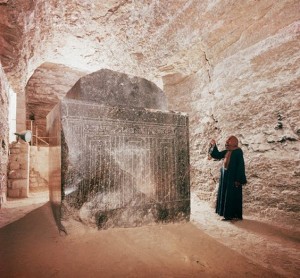
Polished 'stone' encased WITHIN limestone at the Serapeum of Saqqara. 24 or 25?
"in the symbolism of the 25th path the soul has to advance on the desert way, leaving behind the life of the outer and/or lower worlds; not yet conscious of the life of the inner and 'higher' worlds, invoking the inner light that will become a golden dawn in the darkness." [From the book 'The Christ, Psychotherapy and Magic' by A. Duncan. Emphasis , this readers].
Question. What would represent a ''golden dawn''? {and/or new cycle?}. Saturn/Aries?
Define the parts {keys} to understand the whole. All enlarged elsewhere.
'Waters of the Gap'. Enlarged elsewhere.
Analogy of same {i.e.,in the 'Macro' sense of the 'Word'}..."Since that event, {'hindsight' link} Great Pan is changed. He is not dead. Were he dead then the earth itself would be dead, for the living Pan is the 'Planetary Being' {'archetypes link}, though the Planetary Being is by no means entirely described in the mythology and pagan conception of Pan..." Enlarged elsewhere.
Change of {pace?}...One of his other names; within those fifty; being 'Nibiru'. Explained elsewhere,i.e.,in relation to ''Gilgamesh''. Enlarged elsewhere. Can you see what the author {Sitchin} does not see.
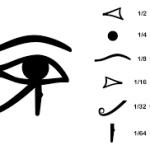 As is the case with the author of 'The Synchronicity Key', believing Nibiru to be the brown dwarf in relation to the sun. Borrowing from Mr Sitchin hypothesis. As he does with the Mason term for the 'Midnight sun', believing it to be the same, the brown dwarf. The midnight sun as all know within this subject is a metaphor for a realization, by way of an understanding of those positive ['sun'] and negative ['moon'] aspects, within the overall framework and what they mean to each individual. An awareness dawns. Hence the link to Psalm 19 [xix]. Find it within.
As is the case with the author of 'The Synchronicity Key', believing Nibiru to be the brown dwarf in relation to the sun. Borrowing from Mr Sitchin hypothesis. As he does with the Mason term for the 'Midnight sun', believing it to be the same, the brown dwarf. The midnight sun as all know within this subject is a metaphor for a realization, by way of an understanding of those positive ['sun'] and negative ['moon'] aspects, within the overall framework and what they mean to each individual. An awareness dawns. Hence the link to Psalm 19 [xix]. Find it within.
Khonsu?
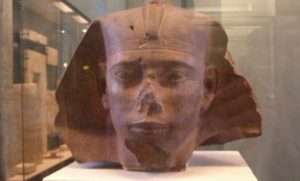
White or black?
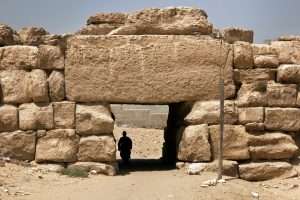
An unbelievable feat of ancient architecture, The Wall of the Crow is 656 feet long, 32 feet high and 32 feet at the base. Standing near the Sphinx, this ancient wall was constructed in the 4th Dynasty of Egypt and the true purpose still remains unknown.
Side note: ''Midnight Sun'' in relation to:"...It will be the 'white' raven {south?} not the 'black' one, which will show the way....The white raven, magical, impossibly rare, unseen in common hours. 'Teacher, what does it mean?'....'Riddle me this Bear Cub,' Merlyn replied...." [Page 37 'Deeper Teachings of Merlyn' / D. Monroe]. Enlarged elsewhere.
And/or: ''We have been happy to bask in the light of the East and have forgotten to look for the light of the West.'' [Introduction : 'The Path Through the Labyrinth' / M. Green].
Side note: 'The wall of the Crow' that seperates the Giza plateau into N/S - in relation to the ''jagged'' right side of the Sphinx enclosure {'unbalanced'} as mentioned by Mark Lehner - as seen - when facing the Sphinx {face-to-face} looking towards the west. In relation to:

'Pattern'?
''Between the crushing walls of conformity and the 'done thing' and other people's opinions lies a cruel and jagged path along which he is forced to make his way, with no options; always striving to fit into someone else's stereotype - employee, parent, husband, student, son, worker or even religious follower. Although there may be choices along the way, no one has told him he is free to make them, to turn aside, to experiment with new alternatives, in life style, in religious pattern, in philosophy or relationships. These variations are hidden from him by a wall of ignorance, built of disinformation, cemented together with fear and superstition....he has to hack his way through the wilderness of opinions {'vines'?} or hearsay, and step forward alone, into the unknown.'' [Page 11 'The Path Through the Labyrinth'].
Left or right path?
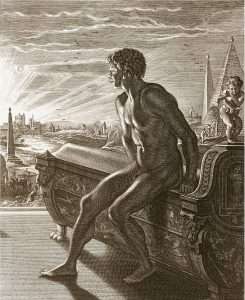
Memnon.
Side step: ''Discover the awe-inspiring India Gate, a magnificent archway standing at the heart of New Delhi. Similar in style to the renowned Arc-de-Triumphe in France, this monumental structure pays tribute to the 70,000 Indian soldiers who bravely fought and sacrificed their lives for the British Army during World War I. Constructed by the Imperial War Graves Commission (IWCG) in 1917, under the guidance of the esteemed English architect Sir Edwin Lutyens, India Gate stands as a testament to the valor and heroism of those who served. Its foundation was laid by the Duke of Connaught, the third son of Queen Victoria, on February 10, 1921. A decade later, on February 12, 1931, Viceroy Lord Irwin officially inaugurated and dedicated the memorial to the nation and its future generations. The names of over 13,000 fallen soldiers from the war are inscribed on this solemn structure.''
Seventy / twentyone to enlarge.

An unbelievable feat of ancient architecture, The Wall of the Crow is 656 feet long, 32 feet high and 32 feet at the base. Standing near the Sphinx, this ancient wall was constructed in the 4th Dynasty of Egypt and the true purpose still remains unknown.
Continued: ''There is a massive, ancient stone wall that stands a few hundreds yards south of the Sphinx. But because it lay partially buried and overshadowed by the pyramids and Sphinx, tourists have hardly noticed it. Known locally as the Wall of the Crow (Heit el-Ghurab in Arabic) it is 200 meters (656 feet) long, ten meters (32.8 feet) high, and ten meters thick at the base.''
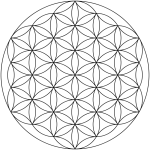
How many?
Something extra {'nuggets' to be found within a 'pattern' of words}: ''From beneath me arises the energy of the Earth, my home and foundation. From above me pours down the power of the Sun and the enchantment light of the Moon {'Aberfoyle'?}. To my right hand comes the strength to control and direct the arts of magic. To my left hand flows the skill to divine and heal, the source of blessing. Before me arises the Perfected one i strive to become {Sphinx'?}, my 'magical' true self. Behind me falls the one i was, and with it, all my discarded faults. Around me circle the eternal stars {five pointed?}, lamps of Wisdom in the deeps of space. Within me grows the Flame of Light the jewel of experience{'emerald'?}. On me and my world may blessing be.'' [Page 46 under the title 'A Self Blessing Ritual' from the book 'The Path Through the Labyrinth'].
'Lady Six Weaver Sky Lord Jewel' {Mayan} - to enlarge.
A study program around the ''hearth fire'' AUTOMATICALLY does the same. The ritual method for this reader would feel pretentious. Hence:
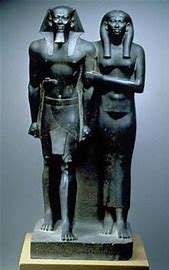
Pulling something from behind? Cart? King of the jungle? Recall the surrounding conditions in the era of the Old Kingdom.
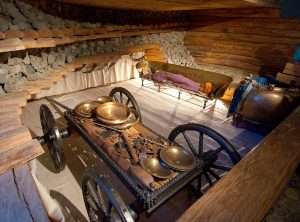
Celtic artwork in a different form.
''In this Hyperborean land was a circular temple of stone, dedicated to Apollo himself, to which he returned every nineteen years. This sounds very much like stonehenge, built upon calculations of the passage of the sun and planets and stars {Moon?}" [Taken from the book 'The Waters of the Gap' by R. Stewart]. Try ''19''.
Question. Does ''19'' 'teach' us something about the ''midnight sun''?
''Odds and evens is a simple game of chance and hand game, involving two people simultaneously revealing a number of fingers and winning or losing depending on whether they are odd or even, or alternatively involving one person picking up coins or other small objects and hiding them in their closed hand, while another player guesses whether they have an odd or even number. The game may be used to make a decision or played for fun.
The finger game is also known as swords, choosies, pick, odds-on poke, or bucking up.[1] This zero-sum game, a variation of the ancient morra and par-impar,[2] is played in Europe, the US, and in Brazil, especially among children.''
Question 2. What does ''Apollo'' represent?
Refresher: "Nineteen is the number of light, the existence of god proved by the idea of god." [Quote taken from chapter 19 entitled 'The stone of the Philosophers' from the book by E. Levi].

Wedding ring?
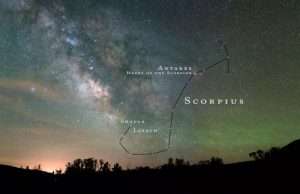
The term is a shortening of the term "duck's egg", the latter being used long before Test cricket began. When referring to the Prince of Wales' (the future Edward VII) score of nought on 17 July 1866, a contemporary newspaper wrote that the Prince "retired to the royal pavilion on a 'duck's egg' ".[2] The name is believed to come from the shape of the number "0" being similar to that of a duck's egg, as in the case of the American slang term "goose-egg" popular in baseball and the tennis term "love", derived – according to one theory – from French l'œuf ("the egg"). The Concise Oxford Dictionary still cites "duck's egg" as an alternative version of the term.[
High bet / Passe: numbers NINETEEN - 36 (Passe is so named because it has "passed" the centrepoint).
If the ball fell into one of the two zero divisions, all lost stakes are taken by the bank but if the bet was matched by virtue of being Pair, Impair, Rouge, Noir, Passe or Manque, instead of being won, the stake was imprisoned until the next spin of the wheel. On that subsequent turn, the stake was either lost or if the ball matched the bet again, the stake was merely returned to the gambler without any profit.''
''Boudica's Way is a waymarked long-distance footpath in East Anglia, England, United Kingdom. It is 36-mile (58 km) in length and runs from Norwich to Diss, near the border with Suffolk, and follows close to Roman roads and passes through Caistor St. Edmund, a settlement tracing its roots to the Roman period.[1] Along its route, it also passes through the picturesque villages of Saxlingham Nethergate, Shotesham, and Pulham Market.''
''Like twentyseven, 36 has important arithmetical properties. Plutarch points out that it is a product of the first 2 perfect squares, 4 and 9, and at the same time, the sum of the first three cubic numbers, 1, 8, and 27. Furthermore, it can be regarded as a square number {6x6}, but also as a rectangular one {4x9}, and it is also the sum of its integers from 1 to 8. Thirtysix is connected to astronomy, as it is a mulitiple of twelve, and every zodiacal sign has three special aspects, known as the decans, which again total 36. In ancient Babylonia it was known that 36000 years made a full circle of the polar star.'' [Page 243 'Mystery of Numbers' / A. Schimmel].
A work in progress: ''That the Lion represents the constellation of 'Leo' cannot be doubted since the nineteen stars which are depicted on or near the body of the lion agree very nearly with the positions of the 19 stars assigned to this constellation in the so called Catasterisms of Eratosthenes.'' [Page 133 'Magi: The Quest for a Secret Tradition'].
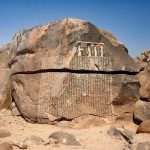
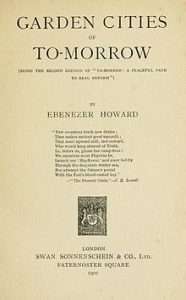 “At the place where Jesus was crucified, there was a garden, and in the garden a new tomb, in which no one had ever been laid. Because it was the Jewish day of Preparation and since the tomb was nearby, they laid Jesus there.”
“At the place where Jesus was crucified, there was a garden, and in the garden a new tomb, in which no one had ever been laid. Because it was the Jewish day of Preparation and since the tomb was nearby, they laid Jesus there.”
John 19:41-42
Side note: The attempt to find the nineteen Snake King tombs of the ancient Mayan culture {'Expedition Unknown' / Discovery History channel}.
''We are either going to be goats or hero's''
Isiah 19:19 ?
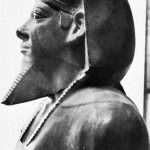
Goaty beard?
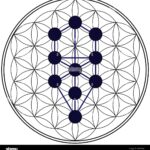
What were you saying? "The last thing that you heard was : 'only god could make a tree'. {'Groundhog Day' 1993}.
And/or: "Nineteen is, to begin with an incomplete 20, but is also a sacred number in the near East. In ancient Egypt the 'Book of the Dead' mentions the 19 limbs of the body, each of which had a 'deity' of its own; by adding the deity connected with the whole body to them, the sacred 20 was attained. For medieval exegetes in the West, 19 combined: the 12 zodiac signs with the 7 planets. In the Islamic tradition however, this number corresponds to the numerical value of the word 'wahid' - ''One.'' ...Astronomically speaking, 19 is connected with the so called Metonic cycle: every 19 years, all the phases of the waxing and waning moon fall on the same days of the week during the whole solar year." [Extract from the book 'Mystery of Numbers' - entitled 'The Number of the Metonic Cycle'. Emphasis, this readers].
And/or: Greece possessed the Metonic Cycle and each year placed a nail at the door of the temple of Jupiter to preserve the chronology. The first sun-dial to be used in Rome was placed more than two centuries after the establishment of the consuls upon the temple of Romulus Quirinus. {Page 230 'Hermetic Interpretation of the Origins of the Social State of Man'].
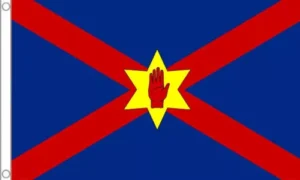
"Another interesting symbol, which later became a prime emblem of Northern Ireland, is the red hand....A myth descibes a race in which the first to reach land would win the throne {'House'} of Ulster. A certain prince called O'Neil was losing the race but cut off his hand and threw it to the shore, ensuring his hand touched land first. {Page 143 'Scota: Egyptian Queen of the Scots' / R. Ellis].
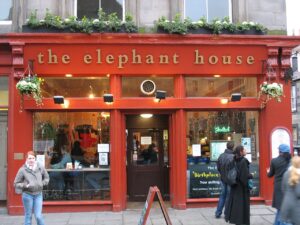
The Elephant House was one of the cafés in Edinburgh where Rowling wrote the first part of Harry Potter.
And/or: According to Livy, the second king of Rome, Numa Pompilius (reigned 715–673 BC), inserted intercalary months in such a way that "in the twentieth year the days should fall in with the same position of the sun from which they had started". As "the twentieth year" takes place nineteen years after "the first year", this seems to indicate that the Metonic cycle was applied to Numa's calendar.
Diodorus Siculus reports that Apollo is said to have visited the Hyperboreans once every 19 years.
The Metonic cycle has been implemented in the Antikythera mechanism which offers unexpected evidence for the popularity of the calendar based on it.
A work in progress: '';My heart my mother begins with a return - the return of the fiery serpent eye goddess, Hathor-Sekhmet, in the aftermath of king Akhenaten's religious revolution....Its primary focus is the 19th Dynasty...a profound time of change...'' [First page, first paragraph 'My Heart, My Mother: Death and Rebirth in Ancient Egypt' / A. Roberts].
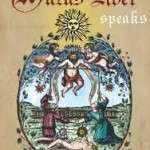
Mutus Liber speaks?
Continued: That 'awareness' is experienced differently by each individual. From an unknown to a known. From 'dark' to 'light'. That third "companion star" that the author identifies with the brown dwarf, [chapter 21 of same book, i.e., 'The Synchronistic Key'], is in fact the combination of what the sun/moon represent within this subject of which the 'masons' are part of, i.e.,"sun/moon" = an awareness = midnight sun,i.e.,light from the dark, by way of what the 'law of one' [same book] call...'harvest'. By way of the ''minds eye.'' Recall what both eyes are represented by. Explained elsewhere.
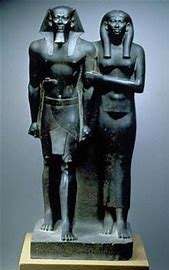
Wednesday's child. Left foot - Right hand?
"To have 'access' to each of the upper levels, the initiatic work comes with a natural or controlled transfer of the acquired knowledge. To have access to the 'planes above' ours is of interest, but we must strain to stay there in a durable way each time we foray there....

Buddha's hand.
This is how we can harvest the necessary information on our Path [i.,e.,link to the word ''teacher''. What this author defines - by way of - the small and Great King. Enlarged elsewhere. This readers input]. As with our behavior on this earth, we must strive towards a flexibility that will facilitate our ''harvesting''. It will be easier for us to direct our work of 'self creation' when informed. We remind you that this takes place only when we are incarnated, not when we leave the earth." [Extract taken from the book by J. Dubuis].
Link to the definition and true understanding of the concept of ''incarnation'' in relation to ''reincarnation''. Enlarged elsewhere. Understanding that universal framework by way of an objective exercise makes sense of it. Gives it an empirical frame to work on - in order to understand the 'bits' in relation to the 'whole'.
'On Having No Head: Zen and the Rediscovery of the Obvious' / D. E. Harding.
Analogy of same..."The moon represents another process - an alchemical one - which you will encounter if you follow on from the Crucible to later work. This process i wont discuss yet. At present though, from the view point of Malkuth, the 'moon' is a cyclical process, returning many times over to show us what we need to learn from what is presently unknown or rejected by us - the Shadow."
Together with... "...the opening of the knowledge of the masculine and feminine potencies necessary unto the manifestation of all things" Think on it relative to ''twin'' symbolism,i.e.,shadow/anima...

More/less light?
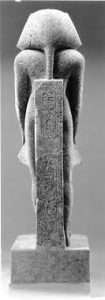
Male/female. Which and why? Approaching from behind or in front?
Continued..."This is common in all forms of initiation. I liken it to a great light approaching us from behind. Whilst this light approaches, all we see is a shadow getting bigger and bigger, until we turn to face the light and step into it, when the shadow simply vanishes." [All three paragraphs from the book 'The Magister'].
Understanding those three paragraphs not only indicates an inner understanding to the subject as a whole but gives clues as to the 'likely' location of a burial site.
''The lengthened shadow of man is history''.
"...you will harvest only after having tilled the earth, only after having sown, and only after having waited for the time when the 'fruit' will be ripe for harvesting." [Extract from the book by Tomberg].
Question. Horn of plenty? Try 'Apollo'' {'human' form of same principle?}.
As a side note...The READERS Way {and/or 4th way?} works just as well as the 'ritual' one. That integration and/or ''connectedness?'' is universal - it has many paths. The RESULT of which is the same. The BEGINNING of a 'journey'. Horizontal/vertical link. Can you by now 'see' it?
'Connectedness' in relation to the word and {intent?} of the word ''grace''. Benefit of.
"These forms in letters and pictures and images are the means by which truths may be brought to the attention of the unripe mind." [Extract taken from the 'introduction' to the book by F. Hartman]. Try ''fruit of'' and ''plough''. Before asking those bigger questions.
"...the 'nails' of objectivity - which give conscience to thought." The symbol of which is the Crown of Thorns, i.e.,"The 'thorns' of the crown center function as the 'nails' of objectivity..." [Taken from 'letter 5' from within the book by Tomberg].
'On Having No Head: Zen and the Rediscovery of the Obvious' / D. E. Harding.
That same 'harvesting' that is represented in number symbolism with 'fifteen'. Enlarged elsewhere. What this author [J. Dubuis] defines finally as ''the Great Experience''.
And others as the 'Son Of'.
'A Spiritual Awakening'... "...and saying these things, i slept, and i saw a certain sacrificing priest standing before me and over the altar which had the form of a bowl. And that altar had fifteen steps going up to it. Then the priest stood up and i heard from above a voice say to me, 'I have completed the descent of the 15 steps and the ascent of the steps of light. And it is the sacrificing priest who renews me, casting off the bodies coarseness, and, consecrated by necessity, i have become a spirit." [Extract from 'The Magister'].
"Equilibrium is the basis of the soul = the beginning of a spiritual rebirth." Quote by I. Regardie from the book 'The Eye of the Triangle'].
Summer triangle?
'Spirit' in relation to 'Soul'. Equilibrium in relation to ''foundations''. Represented in the form of a mountain? {'mound'?}. Question. Which comes first - Spirit or Soul? Think about it - in relation to the 15 {'16'?} steps that descend into the tomb of Tut. Question. Who was he the 'Son of'? The first of something? Representational of ?
Side note: Some say 16 steps. Either way a 'meaning' can be got. A symbolic one. Inner rather than external. Esoteric/Exoteric. Agnostic/Gnostic. That ''duality'' again ALL as a means.…?
Question. If a correct count how would ''15'' be represented within the concept of a circle?
''Fifteen minutes'' and ''quarter'' used throughout in the {story?} - by the author - of the book 'The Serpent of Light Beyond 2012'. Coincidence or a meaningful one?
'Ascend' = S/E ?
'Mans Search for Meaning' / Viktor Frankl.
''In Rugby Union the full back traditionally wears the number fifteen shirt.'' ['Lightening'].
Side note: "Ascendant: Term is properly applied to the degree of the tropical zodiac arising on the eastern horizon of a horoscope chart, or indeed to the degree rising over the eastern horizon...The word is also sometimes applied to the degree {3 degrees?} of a constellation arising on the eastern horizon on such a chart, though it is usual to distinguish the constellation ascendant from the tropical. The ascendant for the San Miniato horoscope is in constellational Taurus." ['The Secret Zodiac'].
Question. Any 'ascendant' examples in the Egyptian sense of same principle?
Continued: Represented in Hermetic/Christian symbolism with the Rose {'animate'} AND the Cross {'inanimate'}? Question. Pure fable - a convoluted one?
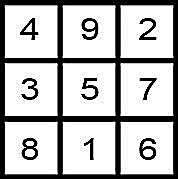 "This suggests why the Pythagoreans placed number at the origin of all things. So great was there reverence that they swore their oath on the divine tetractys, or sacred triangle, established quite simply on the natural sequence of numbers, 1+2+3+4=10: Nine strokes grouped around the incomprehensible One. This originating triangle is illustrated by the Great Ennead of Heliopolis. Similarly, the unexpected switch from nine to fifteen entities or 'aspects' of Amun-Re in his temple at Karnak, Thebes, reflects the Pentactys: Twelve strokes encircling the divine creative triangle {i.e.,12+3} - and representing this triangle manifested." [Extract from the book 'Egyptian Mysteries' by L. Lamy. Emphasis, this readers].
"This suggests why the Pythagoreans placed number at the origin of all things. So great was there reverence that they swore their oath on the divine tetractys, or sacred triangle, established quite simply on the natural sequence of numbers, 1+2+3+4=10: Nine strokes grouped around the incomprehensible One. This originating triangle is illustrated by the Great Ennead of Heliopolis. Similarly, the unexpected switch from nine to fifteen entities or 'aspects' of Amun-Re in his temple at Karnak, Thebes, reflects the Pentactys: Twelve strokes encircling the divine creative triangle {i.e.,12+3} - and representing this triangle manifested." [Extract from the book 'Egyptian Mysteries' by L. Lamy. Emphasis, this readers].
Side note: ''Mark’s simple statement teaches us a profound lesson: “…the women had followed him and cared for his needs” (Mk 15:41). The few or many months she was able to care for Jesus‘s needs were sufficient to forge a faithful follower. Depth of friendship and commitment trump length of time in this case. As she followed Jesus, perhaps she also discovered the rich gift of her feminine genius at the service of her newly found mission. Differing traditions dispute the association of Mary of Bethany with Mary of Magdala, but the grateful and loving feminine spirit shines through both Marys.'' ['Magdala / Israel'].
As seen from a different perspective; but still in the manifested sense of the word {intention?}: "In ancient Roman religion, a flamen was a priest assigned to one of fifteen deities with official cults during the Roman Republic. The most important three were the flamines maiores (or "major priests"), who served the three chief Roman gods of the Archaic Triad. The remaining twelve {12+3} were the flamines minores ("lesser priests"). Two of the minores cultivated deities whose names are now unknown; among the others are deities about whom little is known other than the name. During the Imperial era, the cult of a deified emperor (divus) also had a flamen. The fifteen Republican flamens were part of the Pontifical College which administered state-sponsored religion..." Enlarged elsewhere. Try ''flamen''.
Analogy {from a different perspective}: "In a far more sophisticated treatment of the grades, preserved within the Masonic brotherhoods, a series of initiation titles, ranging from the 'apprentice' through the 'secret master', the 'Elu of the Fifteen', and into the 'master of the Royal secret' have been listed...Such titles and grades should remind us that initiation is itself a series of 'initiations' into Lessor mysteries which eventually lead to an overview of the Greater mystery." ['The Zelator'].
Side note: "Treasure is uncovered by the force of flowing water, and it is buried by the same currents." [Page 23 'The Alchemist' / Panlo Coelho].

''In some ways the mystery of Stonehenge will not be solved - but every theory gets us that little bit closer." {enlarged elsewhere}. No mention of the significance of what a river represents within ANY program on same - other than the obvious, i.e.,''we know from all the mythologies around the world that water is a very important part of that journey - from the world of the living to that of the dead." CAN YOU 'SEE' WHAT THEY CANT YET SEE? -HAVE NOT YET EVEN CONSIDERED. Question. Can it also be the reason why ''that particular stretch of rolling Salisbury plain'' WAS CHOSEN IN THE FIRST PLACE? i.e., is there any larger ''bend'' along that rivers FULL length?

Missing the mark?
Representing something ''unknown'' {''aspects'' of} to becoming ''known'' { ''manifested''}. Represented as ''numbers''. It also implies a direction - and therefore a question. What does that imply? Clue. Thebes = just before the lip {beginning?} of a u-turn {''top/down''} AND/OR the {end?} of that same u-turn {''bottom/up''}. Question. What does that imply? ALSO...12+3? What does it imply? Clue. That ''sacred triangle'' {i.e.,''ten''} together with the ''eleventh hour'' and ''high noon'' = ? Add that answer to those universal ''three'' concepts - or more importantly - what they IMPLY. That link to the Zodiac - its true meaning and purpose {and construction?} - and also to the understanding {answer?} - if the above has been understood - to 'its' missing 13th sign.
The Hebrews represented that same {concept?} THAT same {principle?} with those 12 stones in the sacred 'breastplate' together with what Urim and Thummim represent, i.e.,fate - positive and/or negative. One way or the other- depending on the individual.
A working example: "Heart or reason, no matter! They are ruled by the stars. My instincts, my nature, my body...all is determined by number, by the stars, forces whose plaything i am. Why give us the illusion that our heart is master? My heart is a puppet, a slave, like all else, of fate..." Continued elsewhere. Try ''heart or reason''.
Joffrey Baratheon?{ Game of Thrones}.

Upper/Lower.
Side note. Gold plate {lozenge?} found on the chest {heart?} of the male skeleton within 'Bush Barrow' - south of Stonehenge. Enlarged elsewhere.
And/or: ''Two skeletons found buried in a pit {rubbish?}. One was the skeleton of a young woman, around twenty years old, who was laid in her grave in a crouched position, lying on her right side. Two large, lozenge shaped quern stones had been placed lying over her upper body. The second body was that of an older woman {30-45 years} - placed on top of the younger woman. Some bones from two children also found around the feet of the older woman.'' [Page 154 'The Celts' / A. Roberts].
Something hinted at: "Let them all die so, all who do such things. But my heart breaks for Odysseus, that seasoned veteran cursed by fate so long - far from his loved ones still, he suffers torments off on a wave washed island, and there a goddess makes her home, a daughter of Atlas, wicked Titan who sounds the deep in all its depths, whose shoulders lift on high the colossal pillars thrusting earth and sky apart. Atlas daughter it is, who holds Odysseus captive, luckless man - despite his tears, forever trying to spellbound his heart with suave, seductive words and wipe all thought of Ithica from his mind."
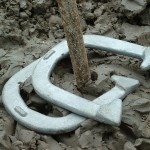
Ridge pole?
Together with... "And young Telemachus cautiously replied, 'I'll try, my friend, to give you a frank answer. Mother has always told me i'm his son, its true, but i'm not so certain. Who, on his own, has ever really known who gave him life? Would to god i'd been the son of a happy man whom old age overtook in the midst of his possessions! Now, think of the most unlucky mortal ever born - since you ask me, yes, they say i am his son."
Refresher: "Deneb was of unlucky influence in astrology, portending misfortune and disgrace, and thus opposed to Regulus in character as in position in the figure..."
And/or: "The planet 'Jupiter' called the ''greater fortune'' is complementary to Venus the ''lessor fortune'', just as the direction West is complementary to East. West is the place of the sunset, and it consequently represents the completion of enterprises, just as East symbolises their beginnings. A man is said to be 'successful' when he has all the details of his enterprise in his ''grasp'' {Kaph}….The old astrologers held that Jupiter's influence in the horoscope does not become strong until after middle life, when the sun of personal existence has passed noon zenith and is moving towards 'Wealth' and 'Poverty'; these are the extremes of worldly fortune, the outward and visible signs of a means 'grasp' of circumstances. When Jupiter is well-aspected in a horoscope that grasp is strong. When it is ill-aspected that grasp is weak." [Page 92 of the book by P. F. Case. Vol 1].
Side note: "..divinatory astrology, consisted of tables which delineated the 'lucky' from the 'unlucky' times of day. For this practice the day was divided into three periods: from sunrise to noon was under the realm of Khepri the renewed Sun; noon to sunset was dedicated to Ra the maturing Sun {heliacal rising?}, and sunset to midnight was given to Atum the 'hidden' Sun {Karnak?}...A simple and practical method of determining auspicious times." [From the book by R. Clark].
Synchronistic link? And/or: ''Dark night of Soul'' = Karnak link?
Continued: Question. Why should the 'father' who had ''plundered the hallowed heights of Troy'' be so cursed by fate? Clue. N/W in relation to S/W - 'Father' {top/down} in relation to 'Son' {bottom/up} as a means...? i.e.,along the way a 'connection' has to be made {'son of' ? } for his 'fortune' {reversal of?} - to change {S/E?}.
Understand that stories {method?} in reverse order to define each chapters {keys/signs?} in their proper sequence of {events?}. Similar to the Hebrew Tree.
Lucky horseshoe?
Recall what the horse represents. 'Book 12: The Cattle of The Son'. 'Cattle' in relation to the 'Strait of Ithica' - all as a means...?
Side note: "...such as can make the vines of Khonsu flourish extra-ordinarily as well as the magnificent cattle of Amon {Amun}. Enlarged elsewhere.
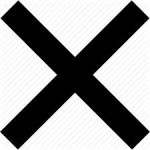
Mid-point = Cross-over point = 90 degrees?
N/W Turkey in relation to S/W Greece? Therefore 90 degrees symbolism? {i.e.,N/W, S/W}. ''Ford Makers'' link?
From a different perspective... Royston - the mid point - where two ancient roads cross over - 'Peddars Way' and the Great North Road. A Christian cave found in 1742 - As Tony Robinson says ''Still a mystery.''
And/or: "England's high-cross monument and the throne-stone of the Isle of Man, symbolically situated at the 'peak' of the Milky Way {authors hypothesis}, belong to a larger tradition found all over England and Europe, where we find many monuments like these in old market squares and at important crossroads. But where did this practice come from?" ['Galactic Alignment'].
 A work in progress: ''Constellations have more to do with patterns...Fixed {static?} patterns that stay in the same pattern night after night....that all civilizations have noticed throughout history. In order to navigate the night sky. Chinese astronomers saw a monkey, a snake and a dragon. Native Americans saw a beaver, an owl and a wolf. The Aztecs saw practical things from their every day lives. They called the Pleiades 'The market place' and Orions belt and sword they SAW it as a 'fire drill'...'' ['Ancient Skies' S1 EP1].
A work in progress: ''Constellations have more to do with patterns...Fixed {static?} patterns that stay in the same pattern night after night....that all civilizations have noticed throughout history. In order to navigate the night sky. Chinese astronomers saw a monkey, a snake and a dragon. Native Americans saw a beaver, an owl and a wolf. The Aztecs saw practical things from their every day lives. They called the Pleiades 'The market place' and Orions belt and sword they SAW it as a 'fire drill'...'' ['Ancient Skies' S1 EP1].
''Sparking a fire with a fire drill was the most important feature of the great New Fire ceremony that took place every 52 {fiftytwo} years. Not only did it literally ignite a new period of time and space in the Aztec world, it was a powerful symbol of fertilisation, reproduction and creation in general.''
'Twentysix' X 2 ?
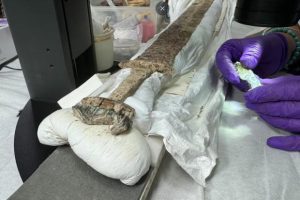

The Bible mentions a scarlet thread in several different contexts, from an unusual childbirth to the high priestly garments to the conquest of Canaan.
One reference to the scarlet thread in the Bible occurs during the birth of the twin sons of Judah and Tamar (Genesis 38:27–30). As Tamar was giving birth, the arm of one twin, Zerah, reached out of the birth canal, and immediately the midwife tied a scarlet thread to the baby’s wrist to designate Zerah as the firstborn. As it turned out, however, Zerah was not the firstborn; the arm was withdrawn into the womb, and the other twin, Perez, was born first.
And/or: An "extraordinary" Anglo-Saxon sword dating back 1,500 years has been unearthed in a Kent field, featuring a gilded silver hilt and remarkably preserved scabbard.
Conservator Dana Goodburn-Brown's microscopic examination revealed the sword's scabbard is lined with beaver fur, stressing its exceptional preservation. A distinctive ring attached to the sixth-century sword's hilt is believed to represent a sacred oath between its owner and a king, lord, or deity. "It is certainly a very high-status object, whoever was carrying this, was buried with this, was somebody really important," said archaeologist Dr Andrew Richardson on the programme. Alongside the sword, archaeologists discovered a remarkable gold pendant known as a bracteate in the same grave....

The twins are born to Judah and Tamar, the product of an incestuous relationship between a father and his daughter-in-law, whom he thinks is a prostitute (another story omitted from kids’ Bibles). Judah will become the tribe of kings, so it matters greatly which twin gets the inheritance. During childbirth, one brother’s hand emerges first, and a scarlet thread is tied around his wrist to confirm that he is the heir. But when he withdraws his hand, his brother barges past and is born first. The line-jumper is named Perez, which means breach or breakthrough. The one with the scarlet cord is called Zerah, which means dawn or rising. In those two names is found the heart of the gospel.
The pendant features a serpent pattern that Dr Richardson believes could be linked to Scandinavian or Anglo-Saxon paganism, possibly paying homage to the cult of the pagan god Odin. The site has also yielded other significant finds, including glass beads and extraordinary wrist clasps from the grave of a woman dating to the late fifth century. Professor Duncan Sayer, the lead archaeologist, described the wrist clasps as "really quite special". "I've never seen another example of this in the UK at all," he said, adding: "They are unique to the site. Almost certainly Scandinavian in character." Additional discoveries include stone beads, buckles, and the remains of a wooden bucket, with one buckle suggesting connections to France. {Digging For Britain / S12 EP1}.
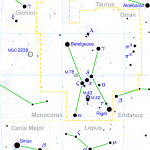
Fire AND water.
Side note: "Seal Stones are made according to the type of stone that they are made from. There are two major types of stone. Hard and soft. The soft stones like soap stone can be 'scratched' with a penknife very easily. The more aristocratic stones needs abrasion - they cannot be carved, and the Mycenaean's had nothing harder than Bronze. Sand has to be used as an abrasion tool. We have depictions of the type of tool used on Roman tomb stones. It comes in the form of a bow - a piece of string/rope attached to two ends of wood. A sharped stick is then used in the middle of the bow string as a type of rotating drill. After many hours etched lines are created {'sculptured/engraved'?} in the stone. Then its polished to a fine smooth surface. Then comes the hard part - drilling a string hole through it." [Professor John Younger: 'Odysseus Returns' / S1 EP1].
'Stamp'.
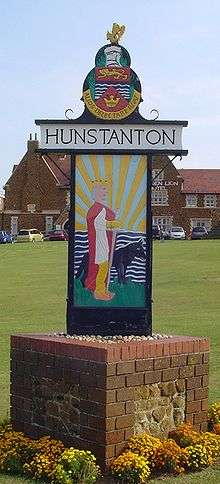
Norfolk: On the corner of The Wash: "Faces west across The Wash, making it one of a few places along the East coast where the sun can be seen to set across the sea." - It also marks the beginning {east?} of the Peddars Way. Enlarged throughout.
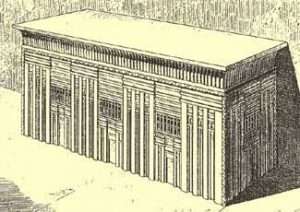
Menkaure sarcophagus. Apex of the Nile delta. 'Three and four' to enlarge + 'octave'.
Continued: ''The deserted Roman town of Venta Icenorum, literally Market Place of the Iceni, lies in a shallow vale of the Tas at Caistor St Edmund, a couple of miles upstream from the tri-confluence of the Wensum, Tas, and Yare rivers. This conflux of navigable waters, flowing east towards the rising sun and draining into the vast coastal inlet now occupied by the Norfolk Broads, must have been a place of significance to the Iceni. It represents both a junction of inland river routes coming in from the four corners of the tribal territory at their junction with the sea, and a merging or blurring of the perceived spiritual presences embodied by the water - the name of the pan-Celtic diety Condatis literally means 'where the waters meet'....''
Upstream or downstream for a 'reunion' at source. A return journey.
''Enbrace'' to enlarge.
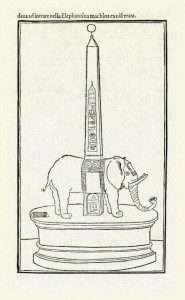 ''Condatis (Gaulish: 'confluence') was an ancient Celtic deity worshipped primarily in northern Britain but also in Gaul. [1] He was associated with the confluences of rivers, in particular within County Durham in the North of England. [a] Condatis is known from several inscriptions in Britain and a single inscription found at Alonnes, Sarthe, France. In each case he is equated with the Roman god Mars....The theonym Condatis derives from the stem condāt-, meaning 'confluence', itself from Proto-Celtic *kom-dati-, from an earlier kom-dhh1-ti- ('put with, put together', i.e. 'grouping, reunion').''
''Condatis (Gaulish: 'confluence') was an ancient Celtic deity worshipped primarily in northern Britain but also in Gaul. [1] He was associated with the confluences of rivers, in particular within County Durham in the North of England. [a] Condatis is known from several inscriptions in Britain and a single inscription found at Alonnes, Sarthe, France. In each case he is equated with the Roman god Mars....The theonym Condatis derives from the stem condāt-, meaning 'confluence', itself from Proto-Celtic *kom-dati-, from an earlier kom-dhh1-ti- ('put with, put together', i.e. 'grouping, reunion').''
Side note: "The Pilgrim's Progress from This World, to That Which Is to Come is a 1678 Christian allegory written by John Bunyan. It is regarded as one of the most significant works of theological fiction in English literature and a progenitor of the narrative aspect of Christian media.[1][2][3][4][5][6] It has been translated into more than 200 languages and has never been out of print.[7][8] It appeared in Dutch in 1681, in German in 1703 and in Swedish in 1727. The first North American edition was issued in 1681.[9] It has also been cited as the first novel written in English.[10] According to literary editor Robert McCrum, "there's no book in English, apart from the Bible, to equal Bunyan's masterpiece for the range of its readership, or its influence on writers as diverse as William Hogarth, C. S. Lewis, Nathaniel Hawthorne, Herman Melville, Charles Dickens, Louisa May Alcott, George Bernard Shaw, William Thackeray, Charlotte Bronte, Mark Twain, John Steinbeck and Enid Blyton."[11][12] The words on which the hymn "To be a Pilgrim" is based, come from the novel."
Continued: ''The Domitian square is a partially excavated area near the Temple of Domitian, from which the square takes its name. From the center of the Square, visitors can easily see the Memmius Monument and the Pollio Fountain which flank either side.
The square would have been a busy area and a center of commerce in ancient times. The crowded corner leads to important temples, agora and administration buildings as well as to meeting places. Some columns have been unearthed and are believed to have belonged to the buildings surrounding the area.

Charbagh gardens.
On the Agora side of the square much of the excavation has been completed. Several small vaulted buildings that would have been used as shops are clearly visible. Ephesus has a higher volume of shops than most Roman cities, which gives archaeologists evidence of the city’s wealth and vast oversea trade. The square also houses a two story building made of large squared calcareous stone blocks. The second story of the building opens up onto the Agora. Archeologists have not yet discovered the purpose of this building.

'Arrow' heads found. Masonic?
On the road from the Prythaneion to Domitian Square visitors will find a number of pedestals adorned with figures of gods and goddesses. Two of the most well-known figures that can be seen are the god Hermes, herald of the gods and protector of herds, and Nike, the winged goddess of victory. God Hermes holds the horns of a ram with one hand and a caduceus (a symbol of his) with the other. Nike has her wings spread with a knitted crown of olive leaves which symbolizing victory in one hand and a palm tree branch, symbolizing the fruits of victory in her other hand. The purpose of these pedestals and figures along the road is not known yet.''
Question. Did Jerusalem have an ancient 'market' square?
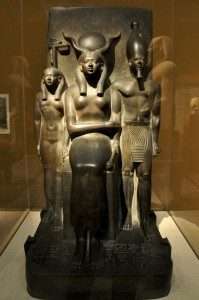
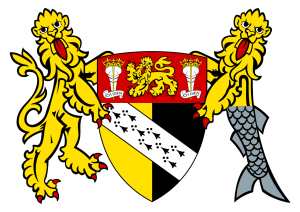
Norfolk: Spear points? S/E - N/W?
And/or: ''Domitian Square - once a public space at the heart of Roman Ephesus. The city destroyed by a ''catastrophic event, from which it did not recover. Ash covered the city....Changed fundamentally from the sixth to the seventh century.'' AND/OR: ''During the Sasaniasn War {602-28 AD}, it was sacked by the Sasanian Empire of Iran.'' [Page 44 'Archaeology' / March-April 2023].
Question. Where would they go to begin anew?
'AFAR'?
''Flower Wars'' to enlarge.
A work in progress: ''The Giza terrestrial Orion from head to foot is orientated southeast to northwest, while the Arizona Orion is orientated southwest to northeast. Of course, the pyramids are located west of the Nile River, while the Hopi Mesas are located east of the Colorado River.''

Gap? Place of Emergence?
And/or: ''Before me were two trails passing westward through the gap of the mountains. On the right was the rough narrow path, with the cactus and coiled snakes {'asleep'?}, and filled with miserable Two-Hearts making very slow and painful progress. On the left was the fine, smooth highway with no person in sight, since everyone had sped along so swiftly {swallows/sparrows?}. I took it, passed many ruins and deserted houses, reached the mountain, entered a narrow valley, and crossed through the gap {another one?} to the other side. Soon i came to a great canyon where my journey seemed to end; and i stood there on the rim wondering what to do.'' [Pages 238-40 'The Orion Zone' / G. A. David].
"When the Great Experience happens for the first time, there is an effect of surprise such that it hinders the harvesting of even the smallest element of information concerning the passage of the invisible worlds. On the other hand, the repetition of this Experience makes this ''return'' familiar and a more precise knowledge of the different space times is progressively produced."


'Bought soul's or just sad ones?
Remember; before those first impressions take hold - figuratively speaking, [i.e.,lower in relation to higher Or; as with this author; small in relation to Great King. Definition of; relative to an understanding of something. [Extract from author, J. Dubuis]. Try ''harvest''.
N.B. Hecate = goddess of the crossroads.
The same could be said for his use of Space-time in relation to Time-space. Top down in relation to bottom up. Figuratively speaking of course - for that understanding to take place.
Hebrew equivalent uses the word 'Daath' to define that border line between the two. That final void to be overcome for that eureka moment to take place. Representational of. Relative to a subject. If Mr Wilcock understood this subject it would add a new 'dimension' to his own understanding once those future eureka moments were established i.e.,..

'Six' includes time and space.'
"In Mazdean {Zoroastrian} cosmology Ohrmazd 'created' the world for the very purpose of 'annihilating evil', and so cosmology and eschatology are indistinguishable. Limited or finite, eschatological Time is created in order for the struggle to take place. This inaugurates the conception of a linear, purposive time, {micro?} rather than primordial time of cyclical mythologies {macro?}. Time is linear {'first step of ladder' link. Enlarged elsewhere} - in so far - as the events which occur in it, take their meaning from the sequence of their occurrence. Ohrmazd is originally finite since he is delimited by his opposite, Ahriman...Over time Mazdean orthodoxy progressively hardened the dualism between the powers of Ohrmazd and Ahriman. This was opposed by Zervanite theology, which seems to have developed under the Arsacids, although how widespread this became is not known. In Zervanism, both Ohrmazd {'good', positive, etc.,} and Ahriman {'bad' negative etc.,} are sons of Zervan, a figure who can be dated back as the Achaemenid period. Zervan is referred to as both 'Time' and 'Space' so that 'speculations on time-space as the common source of the two principles of Good and Evil, were familiar to the Iranians'. " [From the book 'The World Turned Inside Out' by T. Cheetham].
N.B. AinSof beyond it? Hence the reason a 'connection' {of sorts} has to be made. 'See' it?
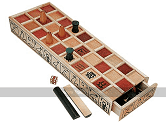 "...It is very easy to imagine, with the Kabbalist, that the middle pillar is a kind of diagrammatical representation of what spiritual writers have called the 'ladder of ascent'." [From the book by A. Duncan].
"...It is very easy to imagine, with the Kabbalist, that the middle pillar is a kind of diagrammatical representation of what spiritual writers have called the 'ladder of ascent'." [From the book by A. Duncan].
"This is the most complex level to grasp in creation. It is the level where creation manifests itself. It is there that the energy takes its Matter-Spirit, time-space aspect." [Same author, i.e. ,J. Dubuis].
To understand fully what is being put forward, understand [in this case - in relation to the Hebrew Tree of Life] numbers that represent 1-3 in relation to the remainder of the same 'Tree'. Of which that 'void' is the border line between the two. Its middle component. A necessary one.
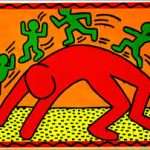

British Penannular brooch. Pre Roman. Came back into use after they left. 'Gap'? ['Digging for Britain' / S2 EP1].
Recall Part 1.
'Bridging the Gap: How the Severn Bridge was Built'.
''Waters of the Gap''?
''Fiftysix''?
And/or: The ''gap'' on the 'king' list { Seti I complex/Abydos} - between Amenhotep III and Horemheb.
And/or page 137 {in the middle of the book}: 'Hathor's Alchemy'.
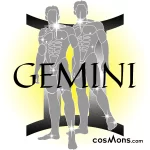
'Brothers'. What about Sisters?
'Sculptured' or 'carved'?
"Graffiti" (usually both singular and plural) and the rare singular form "graffito" are from the Italian word graffiato ("scratched").[6][1][2] The term "graffiti" is used in art history for works of art produced by scratching a design into a surface. A related term is "sgraffito",[7] which involves scratching through one layer of pigment to reveal another beneath it. This technique was primarily used by potters who would glaze their wares and then scratch a design into them. In ancient times graffiti were carved on walls with a sharp object, although sometimes chalk or coal were used. The word originates from Greek γράφειν—graphein—meaning "to write."

A fan - or a prediction?
A work in progress: ''For the very first time, physicists have created and detected high-energy "ghost particles" inside the world's largest atom smasher. The findings could help unlock the secrets of how stars go supernova. The tiny particles, known as neutrinos, were spotted by the FASER neutrino detector at the Large Hadron Collider (LHC) — the world's largest particle accelerator, located at the European Organization for Nuclear Research (CERN) near Geneva, Switzerland. Neutrinos earn their spectral nickname because their non-existent electrical charge and almost zero mass means they barely interact with other types of matter. True to their ghostly moniker, neutrinos fly through regular matter at close to the speed of light. The physicists presented their results (opens in new tab) at the 57th Rencontres de Moriond Electroweak Interactions and Unified Theories conference in La Thuile, Italy on March nineteen{th}.
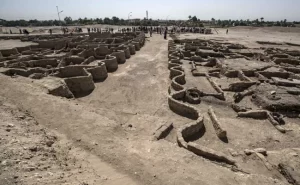
''The signs Gemini and Virgo are alloted to Mercury. This association accounts for Virgo sometimes represented with the caduceus.''
Every second, about 100 billion neutrinos pass through each square centimeter of your body. The tiny particles are everywhere — produced in the nuclear fire of stars, in enormous supernova explosions, by cosmic rays and radioactive decay, and in particle accelerators and nuclear reactors on Earth. In fact, neutrinos, which were first discovered zipping out from a nuclear reactor in nineteen fiftysix {1956}, are second only to photons as the most abundant subatomic particles in the universe. But the neutrinos arriving to us from the sun are just one small slice of the ghost particles out there. On the other end of the energy spectrum are the high-energy neutrinos produced in gigantic supernova explosions and in particle showers when deep-space particles slam into Earth's atmosphere. These high-energy ghosts have remained a mystery to scientists until now. These very high-energy neutrinos in the LHC are important for understanding really exciting observations in particle astrophysics." ['Live Science' / 2023].
'137' to enlarge.
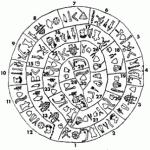
'Head' for a center?
A side step..."When i began drawing the mandalas - i saw that everything; all the paths i had been following; all the steps i had taken - were leading back to a single point - namely to the mid-point. It became increasingly plain to me that the mandala is the center. It is the exponent of all paths. It is the path to the center, to individuation...I knew that in finding the mandala as an expression of the self, i had attained what was for me, the ultimate. Perhaps someone else knows more, but not me." [C. G. Jung].
"...the 'gnostic' union = Daath or intuition." [Quote taken from within 'The Meditations On The Tarot' by Tomberg].
"Finding the hidden dimensions in yourself is the only way to fulfill your deepest hunger."[ Introduction to the book 'The Book of Secrets' by D. Chopra]. Try ''huntress'' and/or similar.
 Mayan equivalent..."Since publication of the 'Maya Cosmogenesis 2012' i have made several new discoveries that further support my reconstruction of the galactic parameters of ancient Mayan cosmology. Two of them are worth taking up here. The first involves a careful reappraisal of Chichen Itza's astronomical alignments, which reveal an attempt to integrate the cosmic centers of Mesoamerican cosmology - polar, galactic, and zenith. The second concerns the iconography of Copan's Stela C, which reveals an awareness of the Galactic Center - Galactic Anticenter axis {'conjunction' link. In this case ,in relation to Scorpio/Pleiades}. " [From the book 'Galactic Alignment'. Mentioned elsewhere].
Mayan equivalent..."Since publication of the 'Maya Cosmogenesis 2012' i have made several new discoveries that further support my reconstruction of the galactic parameters of ancient Mayan cosmology. Two of them are worth taking up here. The first involves a careful reappraisal of Chichen Itza's astronomical alignments, which reveal an attempt to integrate the cosmic centers of Mesoamerican cosmology - polar, galactic, and zenith. The second concerns the iconography of Copan's Stela C, which reveals an awareness of the Galactic Center - Galactic Anticenter axis {'conjunction' link. In this case ,in relation to Scorpio/Pleiades}. " [From the book 'Galactic Alignment'. Mentioned elsewhere].
Side note: The narrow valley and headwaters of the Eurotas valley {Lacedaemon}, the domain of King Menelaus of Sparta, became the spindly constellation of of Scorpius." ['Homer's Secret Iliad'].
"An early Arabic word for the Pleiades means 'center' " Same book. All as a means...? Try ''mandala''.
'Market place' to enlarge.
"Quetzalcoatl first emerged as a deity image at Teotihuacan {''The people of the Pleiades''} - and it has been shown that his earliest astronomical association was with the Pleiades. But i would add, he also had solar attributes, and we might think of him as the Sun and the Pleiades in conjunction. His flight from south to north over the Mesoamerican landscape could be envisioned as his returning to his 'throne' in the zenith center..." [ 'Galactic Alignment:The Transformation of Consciousness According to Mayan, Egyptian and Vedic Traditions'].
Jupiter/Saturn?
What would Venus be in conjunction with?
Question. With what 'forms' did other cultures define those ''solar attributes'' ?
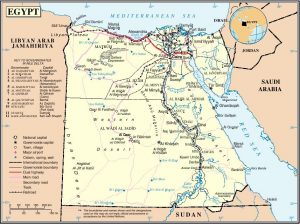 REFRESHER: ''.....Thinis, the earlist burial place of royal persons known in Egypt, was later {evolution of?} incorporated with the town of Abydos and assumed a nome standard called ''the shrine of the head'', identical to that of the Osirian relic depicted in the reliefs at the Abydos temple, where the head of Osiris was said to be enshrined. Khentiamenti, the earthly govenor of the area, assumed the form of Osiris as a shadowy, mirror image of the celestial power with which he was associated. But more importantly, Abydos as the ''head'' of the terrestrial body of Osiris represented the place where the neter's form spread itself northward over the Nile." [From the book by Rosemary Clark].
REFRESHER: ''.....Thinis, the earlist burial place of royal persons known in Egypt, was later {evolution of?} incorporated with the town of Abydos and assumed a nome standard called ''the shrine of the head'', identical to that of the Osirian relic depicted in the reliefs at the Abydos temple, where the head of Osiris was said to be enshrined. Khentiamenti, the earthly govenor of the area, assumed the form of Osiris as a shadowy, mirror image of the celestial power with which he was associated. But more importantly, Abydos as the ''head'' of the terrestrial body of Osiris represented the place where the neter's form spread itself northward over the Nile." [From the book by Rosemary Clark].
Up or Down stream?
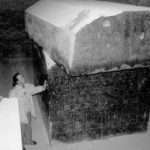
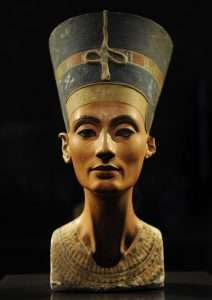
'Stamp of the feminine'. Real or symbolic?
Analogy?..."The potential literature for an intellectual study of this is vast. We hope we have provided a few simple pointers on the way. It is however, a 'centering' in, rather than a wandering in the labyrinthine fields of intellectual speculation, that is the direct way of truth. The 'rose' blooms at the center of the cross. And those who are prepared to contemplate the imagery and take it unto their inmost hearts are the more likely to be met by Beatrice from the triumphal car {'chariot'}, and 'led' to places where even the intellectual genius of a Virgil cannot go." [From the book by G. Knight].
''Establish'' in relation to 'strength' in relation to the word focus. Representational / purpose of. And/or Gnosticism {i.e.,a work in progress} in relation to its end result {i.e.,a Gnostic}.
Simply {and ONLY} - because of its 'spiritual' content, i.e.,understanding Mathematics = A mathematician - or a work in progress in say Biology = A biologist. Therefore one could also say ''because of subject material.'' Yes or no?
Further head scratch: Gnosis in relation to the ''cognitive faculty'' {i.e.,root of}.
Question What 'number' represents it AND why?

initiate?
Further information to evaluate correctly will be found in Jonathan Blacks book 'The Sacred History, Chapter 23, entitled 'The Sun at Midnight']. Together with... "Now as the fall reached its deepest, darkest point {'Cancer'?} the crucifixion and resurrection of Jesus Christ marked the beginning of the ascent." [Chapter 22, same book].
'Pendulum' to enlarge.
'The Sun at Midnight' / Bernardo Oliera, Ocso.
Use the 'find' facility to understand 'fall'. And 'its' relationship to a 'u - turn'. What others call ''the dark night of the soul.'' Found within. Then try ''23''. Alchemy defines that same process as ''Putrefaction.''
"The sudden breakthrough of light and imagination that follows Putrefaction is the most inspired part of alchemy. During this phase of true Fermentation, the alchemists felt they were looking on a whole new level of reality...The 'Peacocks Tail' that appears in the laboratory to mark this stage represents the activation of the dawn of the True Imagination, a world of light in the realm of pure mind. Alchemists called it the ''true'' imagination to differentiate it from mere fantasy or idle daydreaming..."

"Another interesting symbol, which later became a prime emblem of Northern Ireland, is the red hand....A myth descibes a race in which the first to reach land would win the throne {'House'} of Ulster. A certain prince called O'Neil was losing the race but cut off his hand and threw it to the shore, ensuring his hand touched land first. {Page 143 'Scota: Egyptian Queen of the Scots' / R. Ellis].

The twins are born to Judah and Tamar, the product of an incestuous relationship between a father and his daughter-in-law, whom he thinks is a prostitute (another story omitted from kids’ Bibles). Judah will become the tribe of kings, so it matters greatly which twin gets the inheritance. During childbirth, one brother’s hand emerges first, and a scarlet thread is tied around his wrist to confirm that he is the heir. But when he withdraws his hand, his brother barges past and is born first. The line-jumper is named Perez, which means breach or breakthrough. The one with the scarlet cord is called Zerah, which means dawn or rising. In those two names is found the heart of the gospel.
"Fermentation is like a mystical or religious experience for most people, and it can even take the form of psychedelic or paranormal experiences. It occurs whenever we confront the tremendous power of the transpersonal or spiritual realm.[Link to Matter-Spirit quote above].
This can be an overwhelming experience in which we temporary loose our balance and have to readjust to the real world. What we need is objectivity, a distilling of the experience. That is exactly what Distillation means on the psychological level." Therefore {a description} of the mechanics of a working process ? OR would that be a ''work in progress?'' Alchemy's equivalent on those those two universal principles. Understanding that universal framework defines the above paragraphs. It gives them plausibility. A possible one - before we ask ourselves that bigger question - fact or fiction - a possibility or not?
'On Having No Head: Zen and the Rediscovery of the Obvious' / D. E. Harding.
"This symbolic story commences on Easter Eve, with all its connotations of transformation and resurrection. The protagonist, who is called Christian Rosencreutz, is approached by a fair lady. She wears sky coloured garments spangled with stars, and has beautiful wings full of 'eyes' like a peacocks tail..." [Extract from the book by G. Knight]. Question. Archetype within say, a lucid dream?
'Waters of the Gap'. Anything?
'Lucid Living' / T. Freke].
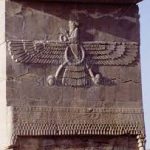
Observer? An objective one?
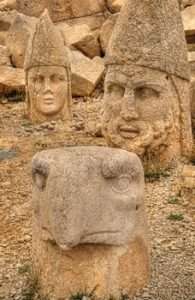
Bearded / UNbearded?
''The best day of my life - my rebirth day, so to speak - was when I found I had no head. This is not a literally gambit, a witticism designed to arouse interest at any cost. I mean it in all seriousness. I have no head. It was when I was 33 that I made the discovery, though it certainly came out of the blue, it did so in response to an urgent inquiry - I had for several months been absorbed in the question: What am I?....What actually happened was something absurdly simple and unspectacular: just for the moment I stopped thinking. Reason and imagination and all mental chatter died down. For once words really failed me. I forgot my name, my humanness, my thingness, ALL that could be called me or mine. Past and future dropped away. It was if I been born in that instant, brand new, mindless, innocent of all memories, there existed only the Now, that present moment that was clearly given in it. To look was enough....It took me no time at all to notice that this nothing, this hole where a head should have been was no ordinary vacancy {void?} no mere nothing. On the contrary, it was very much occupied...." [Chapter one entitled 'The True Seeing' from the book 'On Having No Head'].
Side note ''Void'' in relation to: "So what is awareness? Awareness isn't something within your experience. It is an emptiness that contains all you are experiencing.'' ['Lucid Living' / T. Freke].
Or working out? {this readers addition}.

Spot the difference?

Which one's Eddie?
AS {one} example: '' I think what Shakespeare manged to do is that he managed to capture the human experience, and it feels weirdly modern. He writes about the moment he was in - which seems too, by dent of his genius - also be the moment we're in.'' [David Tennant / N/W Tonight / November 2023].
'Weird' to enlarge.
Another example {i.e., the beginning of a learning curve}: ''In Western Christianity, the Feast of the Holy Innocents is celebrated 'three' days after Christmas Day.'' ['The Chase'].
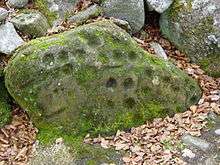
Cup marks on the 'northern' end at Clava Cairn - Inverness. Scotland.
And/or: ''''In golf, the right to tee off first when playing a hole is called The Honour.'' ['The Chase'].
And/or: ''In golf, the hole on a putting green, has a metal container in it called the CUP.'' ['The Chase'].
N.B. Tweve days after Xmas = an ''Epiphany''.
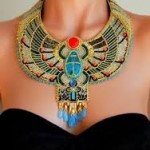 Continued: And/or: "No place can be found in which to put the 'Original Face'; it will not disappear even when the universe is destroyed. One of Hui-neng's successors, the Zen master Shih-tou {700-790}, took a slightly different line. 'Do away with you throat and lips {Ptah/ 'Taurus'?}, and let me hear what you have to say', he commanded. A monk replied: 'I have no such things.' 'Then you enter the gate,' was the encouraging reply. And there's a very similar story of a contemporary of Shih-tou's, master Pai Chang {720-814}, who asked one of his monks how he managed to speak without throat, lips or tongue. It is, of course. from the silent Void - that one's voice issues - from the 'void' of which Huang-Po {d.850} writes: 'It is all pervading, spotless beauty; it is the self existent and uncreated absolute. Then how can it be even a matter for....
Continued: And/or: "No place can be found in which to put the 'Original Face'; it will not disappear even when the universe is destroyed. One of Hui-neng's successors, the Zen master Shih-tou {700-790}, took a slightly different line. 'Do away with you throat and lips {Ptah/ 'Taurus'?}, and let me hear what you have to say', he commanded. A monk replied: 'I have no such things.' 'Then you enter the gate,' was the encouraging reply. And there's a very similar story of a contemporary of Shih-tou's, master Pai Chang {720-814}, who asked one of his monks how he managed to speak without throat, lips or tongue. It is, of course. from the silent Void - that one's voice issues - from the 'void' of which Huang-Po {d.850} writes: 'It is all pervading, spotless beauty; it is the self existent and uncreated absolute. Then how can it be even a matter for....

''Gate'' {Qena?].
…..discussion that the real Buddha has no mouth and preaches no Dharma, or that real hearing requires no ears, for who could hear it? Ah, that is the Jewel beyond all price.' As an aid to such a realisation, Bodhidharma, the First Patriarch of Zen {6th c.} is said to have prescribed a good hammer blow {'blacksmith'?} on the back of the head {'Sokar'?}. Tai-hui {1089-1163} was equally uncompromising: This matter {Zen} is like a great mass of 'fire': when you approach it your face is sure to be scorched {'yellow' or 'orange'?}." [Page 32. Same book, i.e., 'On Having No Head'].
External/internal?
''Beauty'' in relation to the 'female quality' {i.e., Shulamite/Nefertiti etc}. ''Spotless'' in relation to....?
Sais in the Nile Delta....the beginning of something?

Try ''tongue'' {silent link?}.
That final sentence in relation to the ''Kundalini'' or more importantly what it REPRESENTS. Something associated with a learning curve. Beginning with an ''unknown'' {unmanifested} quantity 'along the spine' RISING up - in incremental steps - relative to a learning curve to the ''crown'' {'lotus'?} of the head - mid center - coming together with a now known {'gathered'?} quality from the back of the head. Those constant natural ''dualities'' used to define something of the inner. All in relation to the 'Male' / 'female'. As a means....?
''Jewel of Great Price''?

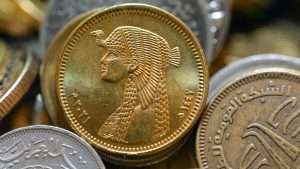
''The coin of 50 Piastres has the value of half an Egyptian pound. On the 50 piastres piece is the portrait of Cleopatra, ruler of Egypt, with a falcon on her head. The brass-plated steel coin weighs 6 1/2 grams and has a diameter of 23mm.'' Recall the profile of J. Woodroffe. 'Twentythree' to enlarge. Coincidence?
Finally compare above to {i.e.,as an objective exercise}..."In the early Gilgamesh tale of the Sumerians, Gilgamesh and his fifty proto-Argonauts have some connection with a ship called the Magan-boat. It should be remembered that Magan is the Sumerian name for Egypt. Hence the boat is connected to Egypt. All the Greek Argonauts were related to one another and more or less anonymous as individuals....reminiscent of the earlier Sumerian 'fifty heros' accompanying Gilgamesh and also the 'fifty great gods', known as Anunnaki. Professor Cyrus Gordon has written an important book on common origins of Greek and Hebrew cultures from the Egyptian-Sumerian milieu of the ancient world.... The 'fifty great gods' of sumer, the Anunnaki are invariably seated. Sacred oarsmen or Argonauts are all... seated while they are rowing. 'The fifty who sit' and the 'fifty who sit and row' seem to be a motif. The other element, besides the eye in the Osiris name hieroglyph, is the throne, which is the hieroglyph for Isis as well. The throne is a 'divine' seat. The Sumerians frequently intoned of the Anunnaki that they were, 'they who are seated on their thrones". [Chapter four. 'The Sirius Mystery'].
'Place of Rowing?
'Chair of Lethe' ?
''Fifty, the enlarged fortynine, is associated with the jubilee year {Lev. 25:10}, when feud and hatred were to cease in expression of the great Sabbath of creation. But it has other meanings as well. Since the 50th psalm contains a complaint about its authors sins, for example, 50 is considered in allegorical exegesis as an expression of repentance and forgiveness: for the Ten Commandments are not always easy to obey for persons endowed with 'five' senses {10 x 5 = 50}. It also plays an important role in the decimal system....It is an indefinite 'round number' in the Greek and Irish traditions {i.e., 50 Nereids, 50 sons of Priam, 50 cows of Helios or the 50 pigs Eumaios}. In Irish folklore 3x50 = the great round number....On the practical side, 50 was the age after which men were no longer required to perform military service in ancient Rome.'' ['The Mystery of Numbers'].
Side step: ''Saint Martin's Day or Martinmas, sometimes historically called Old Halloween or Old Hallowmas Eve,[1][2] is the feast day of Saint Martin of Tours and is celebrated in the liturgical year on 11 November.''
''November 11 is the 315th day of the year (316th in leap years) in the Gregorian calendar; 50 days remain until the end of the year.''
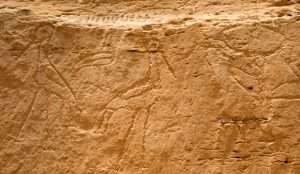
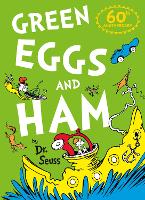 Side note: ''In Judaism the Festival of Weeks (Hebrew: שבועות Shavuot) is a harvest festival that is celebrated seven weeks and one day after the first day of Passover (the Feast of Unleavened Bread) in Deuteronomy 16:9 or seven weeks and one day after the Sabbath referred to in Leviticus 23:16.[11] The Festival of Weeks is also called the feast of Harvest in Exodus 23:16 and the day of first fruits in Numbers 28:26.[12] In Exodus 34:22 it is called the "firstfruits of the wheat harvest."[13] The date for the "Feast of Weeks" originally came the day after seven full weeks following the first harvest of grain.[14][15] In Jewish tradition the fiftieth day was known as the Festival of Weeks.[12][13] The actual mention of fifty days comes from Leviticus 23:16.'' [Wiki].
Side note: ''In Judaism the Festival of Weeks (Hebrew: שבועות Shavuot) is a harvest festival that is celebrated seven weeks and one day after the first day of Passover (the Feast of Unleavened Bread) in Deuteronomy 16:9 or seven weeks and one day after the Sabbath referred to in Leviticus 23:16.[11] The Festival of Weeks is also called the feast of Harvest in Exodus 23:16 and the day of first fruits in Numbers 28:26.[12] In Exodus 34:22 it is called the "firstfruits of the wheat harvest."[13] The date for the "Feast of Weeks" originally came the day after seven full weeks following the first harvest of grain.[14][15] In Jewish tradition the fiftieth day was known as the Festival of Weeks.[12][13] The actual mention of fifty days comes from Leviticus 23:16.'' [Wiki].
'Feast of the Valley'?
As seen from a different perspective {i.e.,''fall'' and ''grace'' links}: "Of these groups, the sons of King Priam numbered fifty and were allocated to stars in the large constellation of Orion. His legitimate sons are brighter stars in the familiar outline of Orion, while the bastard sons are designated as stars outside the figure of Orion but within the constellation boundaries..." ['Homers Secret Iliad']. Try ''fifty'' to 'see' something in its broader context.

Chief Shepherd.
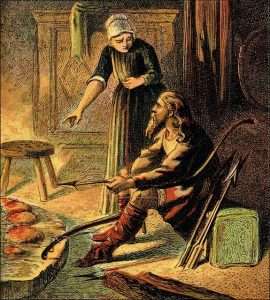
Leavened or UNleavened?
Synchronistic link?: "Just before Paris, {one of} the sons of King Priam of Troy, was born, his mother dreamed that he would be the cause of the city being burned to the ground. He was therefore abandoned to die on a hillside. However he was found and brought up by shepherds...Paris { 'a feckless vain man' } abducted Helen, and in an attempt to restore her to her husband a Greek army laid siege to Troy - the event that eventually led to the fulfillment of the prophesy. Homer's epic , describes the last few weeks of the siege, nearly ten years after the Greek army, led by Menelaus brother Agamemnon, King of Mycenae {S/W}, first sailed in more than 1000 ships to the stronghold of the Trojans {N/W}." ['Homers Secret Iliad' - FOUND ON PAGES 49/50 ].
Coincidence or a meaningful one? i.e.,deliberate or otherwise.
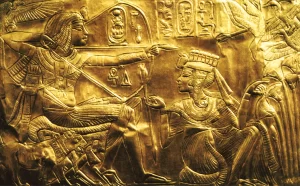
Common factors?
Side note: The above 'information' also informs the reader why such statements as ''Hector - the eldest son of King Priam and the strongest warrior in the Trojan army is a very human character who knows that the Trojans are fighting for a lost cause...AND/OR..."The gods who intervene in the action range in character from majestic and honourable to petulant and devious...The eventual destruction of Troy is never in doubt after Book 1, when Zeus promises Thetis, mother of Achilles, that her son will have a 'glorious war' - but this bare bones summary of the Iliad gives no sense of the subtle interplay between Homer's characters , and does not address the moral questions that he poses." [Same book].
Those ''moral questions'' {answers?} that can be defined by the reader - Those same ''bare bones'' {'garment' link} that can be defined by those universal ones {keys} i.e., S/W - N/W in relation to ''ford makers'' . And/or Higher/lower in relation to ''Karma'' - its day to day one - regardless whether surfs/slaves/men/women/kings or queens. All enlarged throughout. Further 'information' {side note?}: Notice how throughout history {mythology only?} those that survive that universal 'struggle' go on to become {representatives?} founders of other countries {cultures?} i.e.,''Aeneas - a cousin of Hector who survived the sacking of Troy and, according to legend, founded the City of Rome." [Same book]. Question. Who was the first king of Great Britain {according to legend}? Question 2. Why?
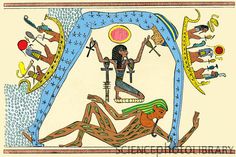
Geb - who was associated with the plough. Benefits of; IN relation to the 'divine bit' [i.e.,ankh] i.e.,Bottom up [return journey] from Top down. Question. Which is which? Clue. S/W in relation to S/E.
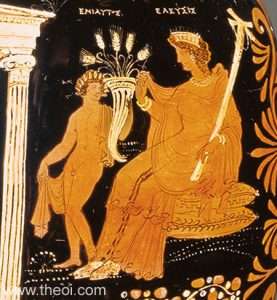 "Ships have long been said to plough the sea, and ploughs to sail the earth. In a variant of the same ancient metaphor the modern French faucher le grand pre for sailing is literally to reap, or to mow, the big field; the reapers too leave a wake behind them. The German lexicographer Max Miller, last century, related 'oar' to a root by which it means 'as it were the plough-share of the water'; he added that the English word plough, the Slavonic ploug, has been identified with the Sanskrit plava...and with the Greek ploion = ship." [Taken from chapter 4, entitled ''Ploughing the Sea'' from the book 'The Book of Babel: Words and the Way We See Things' by N. Lewis]. Question. Are any of the above main characters; not just their individual aspects; shown to be 'seated'?...[in the main].
"Ships have long been said to plough the sea, and ploughs to sail the earth. In a variant of the same ancient metaphor the modern French faucher le grand pre for sailing is literally to reap, or to mow, the big field; the reapers too leave a wake behind them. The German lexicographer Max Miller, last century, related 'oar' to a root by which it means 'as it were the plough-share of the water'; he added that the English word plough, the Slavonic ploug, has been identified with the Sanskrit plava...and with the Greek ploion = ship." [Taken from chapter 4, entitled ''Ploughing the Sea'' from the book 'The Book of Babel: Words and the Way We See Things' by N. Lewis]. Question. Are any of the above main characters; not just their individual aspects; shown to be 'seated'?...[in the main].
Question 2. What do ''ploughs'' come with?
A side step: In chasing the old religions of Europe, we seem to be able to watch the spread in every direction of one great belief. It came of top of vague and scattered beliefs in some form of totemism. It was so much higher in the scale of ideas, that people jumped at it, as later they did with Christianity. Although the thoughts of many men probably went to form it, one suspects that only one really great thinker hammered it into shape. In attempting to appreciate how this idea was thought out...." [Page 154/5 'GogMagog'].
Try 'Dead Sea Scrolls' as ONE example.
Imhotep.
And/or: "Here I shall leave the quest for the moment. It has been most fascinating, and I think I have only reached a halting place on the road. Innumerable questions still keep tumbling into my mind. Was the Highland water - horse, for instance, only an idle tale of imagination formed from vague stories of the hippo in Egypt? Same book.
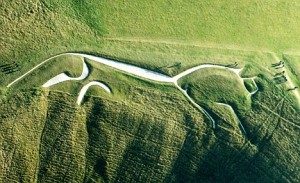
Faces west. Running uphill or downhill?
''Founded as a polis by the name Antioch of Hippos (Ἀντιόχεια τοῦ Ἵππου) during the Seleucids, the city is named after the Greek language word for horse, Hippos, and a common name of Seleucid monarchs, Antiochus. In the 3rd-century Mosaic of Rehob, the site is known by its Aramaic name, Sussita (Hebrew: סוסיתא), a word meaning "horse" in the feminine gender, while the Arabic name, Qal'at al-Hisn or Husn, has been used by the country's Arab inhabitants, meaning, "Fortress of the Horse/Stallion". Other names include the alternate spelling Hippus (Accusative Hippum), a Latinized version of the Greek name. The precise reason why the city received this name is unknown.'' [ Wiki].
Hippo's - overlooking the Sea of Galilee - A ''narrow stretch of land'' { + flat top} - from where the Jesus chap ''walked on water'' before continuing his 'journey' in a boat/ship.
Side step: Neil Oliver speculates in series 1 of 'The Vikings' about stones in the shape of a large ship. Understanding this subject gets us closer to a mind set.
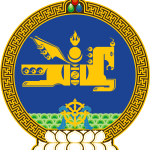
State emblem of Mongolia.

The Hydra of Lerna. This was another of the old serpent powers—the child of the serpentine god forms Typhon and Echidne. It lived in an area renowned for very deep underground springs, associated with the ancient nymphs, and was guardian of this entrance to the Underworld. This was the gate associated with the Dionysos cycle. The Hydra was commonly regarded as sister of Kerberos, the three-headed dog that guards Hades beyond the River Styx. She lived among the water logged roots of a huge plane tree. ......... Heracles is not invincible and alone in this struggle. He needs the help of a lesser mortal, his nephew Iolas, who again uses the power of fire, the expression of the individual human spirit, to seal the severed necks of the many-headed Hydra, after Heracles has cut off the heads. Otherwise they would grow again. This is indicative of ultimate individual spiritual responsibility of all human souls. We cannot be dragged into heaven on a sledge, entirely vicariously. Even the most vicariously oriented theology demands at least ‘belief’, which is a mode of expression of correctly oriented free will ..........A whole forest was used up in the provision of flaming spiritual brands, an oblique symbolic reference to the uprooting of the dark forest that is widely used as representation of the condition of the material world. The heroes are also beset by crabs which come to the aid of the Hydra. Crabs are one form used to represent certain sea nymphs and emphasize the origin of the Hydra’s powers in the great maternal primeval sea. The sign of the Crab figures in the Zodiac also, and as it is the first sign of the subterranean celestial hemisphere it is sometimes called the Gate of Descending Souls. It is also, appropriately, a water sign. Hydra is also represented in the heavens by a very long constellation whose head commences at Cancer {'nadir'?} and proceeds round the Zodiacal belt as far as Libra the Scales {'tail'?}. Thus release for descending souls may be seen as a matter of achieving cosmic balance. {Page 70-1 'The Rose Cross and the Goddess'}.
Analogy: 'Sea of Graves' : {Genghis Khan/Mongolia}.
Question. What would the remedy be?
Together with..."Above the firmament that was over their heads was the likeness of a Throne...and on the likeness of the Throne, was the likeness of the appearance of a man upon it from above. [Ezekiel 1:26]. Here we have the next two levels, first that of the Throne, and then that of the 'man' upon the Throne." [Page 36, chapter 2, 'Meditation and the Bible by A. Kaplan].
That link to the 'son of' something. Compare to height of the supporting 'backs' of all three 'thrones' of those representing the Giza 'Plateau'. 'Full' in relation to 'half',[another indication of Khufu's 'status']. An 'awareness' now made in relation to one 'in progress'...which would support the individual on the next leg of the 'journey'. [N.B..Plateau indicative of a borderline] .

Sacha Dench.
Notice if the 'quarry pit' below, was filled with water the 'head' of same would appear above that water line. Link to 'godhead' [its true representation], and therefore; in part; to the Primordial mound, at the 'base' of the pyramid, i.e.,Macro and Micro equivalent. That familiar subject again, Egyptian equivalent, as well as the "higher of the lower", [its physical representation]. Think about it in relation to 'cross' symbolism, [explained within]. Especially in relation to its 'nightly' representation...the Northern Cross. "Sadr [gamma Cygni] being the center point of the cross, and also the 'breast' of the celestial swan." [page 125, chapter eleven, 'The Cygnus Mystery']. 'Heart' and 'cross' symbolism. Getting it?
''The swan is white without spot''.
"...........he treads the Royal path on which the Soul, dying to self, rising again in Self, knows the Eternal Swan and, having known, crosses beyond all death." [Chapter 9, 'The Yoga of the Bhagavat Gita'].
Horus IN/OF the Horizon?
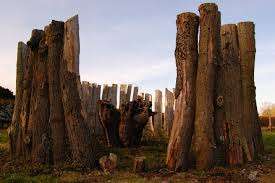
Seahenge. 'Y'? An inverse of something.
Side note: ''Often a source of confusion is that the terms specific gravity, and less often specific weight, are also used for relative density. A common symbol for specific weight is γ, the Greek letter Gamma.''
The Greek letter Gamma Γ is a grapheme derived from the Phoenician letter 𐤂 (gīml) which was rotated from the right-to-left script of Canaanite to accommodate the Greek language's writing system of left-to-right. The Canaanite grapheme represented the /g/ phoneme in the Canaanite language, and as such is cognate with gimel ג of the Hebrew alphabet. In Archaic Greece, the shape of gamma was closer to a classical lambda (Λ), while lambda retained the Phoenician L-shape (𐌋).
Based on its name, the letter has been interpreted as an abstract representation of a camel's neck,[2] but this has been criticized as contrived,[3] and it is more likely that the letter is derived from an Egyptian hieroglyph representing a club or throwing stick.[4]

'Opening of the mouth'? Swan Upping?
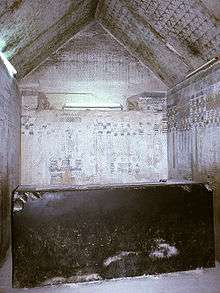
'Three and four'?
''Gamma /ˈɡæmə/[1] (uppercase Γ, lowercase γ; Greek: γάμμα gámma) is the third letter of the Greek alphabet. In the system of Greek numerals it has a value of 3. In Ancient Greek, the letter gamma represented a voiced velar stop IPA: [ɡ]. In Modern Greek, this letter represents either a voiced velar fricative IPA: [ɣ] or a voiced palatal fricative IPA: [ʝ] (while /g/ in foreign words is instead commonly transcribed as γκ).''
Question. Would the 'pit' be filled up 'accidentally', i.e., weather or deliberately, i.e.,'New year' festivities and/or Sed Jubilees. If the later, what effect would that have on the surrounding stonework? Answer within such works as 'Meditations on the Tarot', as well as 'The Temple in/off Man' / Schwaller de Lubicz. The most recent example being the speculation and hypothesis; of the same; by the author of 'The Sirius Mystery'. Chapter one, and/or 'The Sphinx Mystery'. Same author, but take note, this subject, [and therefore its authors] once again, predates ''modern'' speculation of same 'concepts'. Proving; at least; the viability of the subject. That 'subject' that 'began'; at the dawn of human kind..."before the written word came into common use."

Metal of the mind.
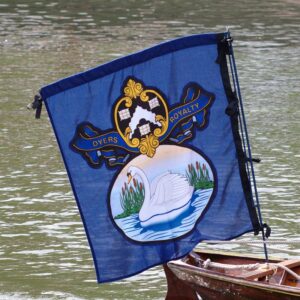
Dyers' Company flag during Swan Upping
Seven is itself one of those archetypes.The seven ’hand palms’ of ancient Egypt that equaled one Royal Cubit. That link to the ‘Royal Way’ as well as the word ‘Astronomy’. Look it up.
''Sixes and sevens''?
Menkaure?
Side note: Each banana cluster is known as a hand and consists of 10 to 20 bananas. When harvested, the hands are usually cut into smaller hands of 4 to 6 for easier packing. An individual banana is known as a finger.
Continued: That same link to the seven letters of ’Jehovah’ in relation to the six of..’Yahweh’, or the four of 'Lord', [number symbolism].
Stretching the cord to enlarge.

Psalm 119: The longest chapter in the bible. eight verses for each of the twentytwo letters of the Hebrew alphabet.
''Seshat (also given as Sefkhet-Abwy and Seshet) is the Egyptian goddess of the written word. Her name literally means "female scribe" and she is regularly depicted as a woman wearing a leopard skin draped over her robe with a headdress of a seven-pointed star arched by a crescent in the form of a bow.''
Side note: Using only 'two' counters on each correct answer - Tamosina wins 10,000 on the seventh. Never before won anything in her life. ['Tipping Point' /S11 EP8].
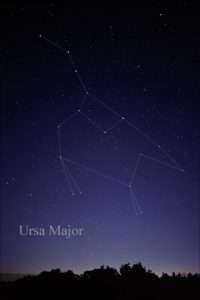
Only one of a few animals brave enough to venture NORTH.
A {working?} example - the very first one? "The siege of Troy may be a war between mortals, but almost half the Iliad is occupied with the quarrelling of the gods and their interference in the affairs of man. It is not suggested that the pantheon of gods who, with their associated religious rituals, thrived after the demise of Cronus had no function in Homeric society other than to act as astronomical icons. Nor is it likely that Homer merely hijacked the gods from their mythic and religious environments to suit the astronomical purpose of the Iliad. Rather, myth and religion - two powerful elements in the structure of ancient societies - were intertwined with the age old practical but also mysteries science of astronomy." ['Homer's Secret Iliad'].
A working example: "Invoking the Ancient Scribes of Egypt is a compilation of such stories, from multiple storytellers who undertook a single journey through the beautiful land of Egypt as well as through the landscape of their own memories. Nineteen travellers, pilgrims on a sacred journey in October 2009, contributed to the writing of this book, this collection of stories. At each sacred site in Egypt that we travelled to, we confronted an aspect of ourselves where we told the stories—whether fact or fiction—that had brought us there. We offered them up to each other and to the temple gods and goddesses as the divine jewels that they were and are......We were nineteen people in all (eighteen women and one man}." ['Invoking the Scribes of Ancient Egypt' / N. Ellis + G. T. Brown].
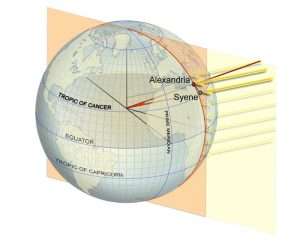
Five o'clock shadow?
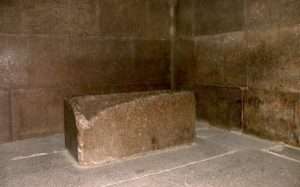
Beginning or end?
AND/OR: Periodically in ancient Egypt, the pharaoh underwent a rite of passage called the Heb-Sed Festival, which was a ritual process of life review and of dying a ritual death in order to realign one’s self to Source. The purpose of the renewal rite was shamanic reintegration of life experience into wisdom. In the House of Life inside the Temple of Horus at Edfu you may find the image of Seshet carved upon the wall; she guards the niches where the religious scrolls were kept. Their titles are written on those walls. In one spot, an etching calls out the sacred chapter of one of the Books of the Dead: “The Secret of Osiris Becoming Re.” It is the book of how to turn darkness into light, how to turn death consciousness into life consciousness....That text was kept on papyrus scrolls in the library room at the Temple of Horus at Edfu....This book was designed to resemble, in a fashion, the process by which ancient scribes wrote the Book of Coming Forth by Day for their patrons. Some patrons wanted long funerary scrolls.... [same].


Something to ponder on: "A few of these differences between the mediaeval and modern astrologies will emerge in the following study, but i should perhaps comment immediately on the extraordinary fact that my researches in San Miniato indicate that without a shadow of a doubt the 13th century astrologers concerned with this zodiac used what is nowadays called the constellational zodiac. It is quite possible that they used this 'zodiac of the stars' only for symbolic purposes - for example...the temple lore of the ancient mystery wisdom. It is quite certain...they also made use of the tropical zodiac in their divinatory arts, or judgmental astrology - even so, the significance of the use of 'constellation' material has not been sufficiently remarked by either astrologers or historians...which requires we look again at the symbolic intent of churches, cathedrals etc...If the constellation zodiac were so important in the mediaeval period, then the Arabic star-lore, with its specific interpretation of the fixed stars, is part and parcel of mediaeval church symbolism..." ['The Secret Zodiac: The Hidden Art in Mediaeval Astrology' / F. Gettings].
Question. Which would Homer use?
"It is also of interest that the name of Flegetanis, who divined the history of the Grail in the stars, is based on the Arabic word 'falakiyatu,' [astronomy] or 'falakiyatum [astronomer]." [From the book, 'Alexandria.' Vol 1, by D. Fideler].

The ''summer'' triangle. What about the ''winter'' one? Do the ''two'' go together?
Side note: "Once the validity of linking geographical land areas to constellations had been established, the way was open for long forgotten knowledge to be garnered from the remaining regiments..." ['Homer's Secret Iliad']. Coincidence or something else?
The number seven symbolic of that ‘development’ within the overall journey as indicated by the significance of that ‘number’ to St Augustine...and such authors as S. Gooch. In his book. ’The dream culture of the Neanderthals’. Those Chakras were sometimes shown with seven rather than five ‘stages’. Figuratively speaking of course. No such stages/ ‘centers’ exist internally. Literal license only. Symbolic in fact. ['The Chakras' by C. Leadbeater].
If it is only symbolism, then the real question is....Why go to all this effort?
"It is important to understand that these centers are not physical in nature and position- though there are parallels with our physical organs and glands. These 'organs' exist in a subtler emotional or psychic or spiritual part of our nature. We may even consider them, not as realities themselves, but as symbols of realities- great, redeeming, and saving symbols." [Chapter 2, 'The Art of True Healing' by Israel Regardie].

'Twentyone' segments?
From a different perspective: ''Twentyone is connected with perfection, since it is the product of the sacred numbers seven and three.'' ['Mystery of Numbers'].
A working example: ''The name Jason is a typically masculine name that is believed to have Greek and Hebrew origins. Jason is a classic and traditional Greek name. In Greek, the name means “healer.” This is from the Greek word “iaomai” which means “to heal.” The origin of the name can also be traced to Greek mythology.
The story goes that Jason, a great Thessalian hero, led the Argonauts, a band of heroes in Greek mythology, on a quest for the Golden Fleece, in order to get back the throne from his Uncle Pelias, who overthrew Jason’s father as the king of Ilocos. Jason also married Medea, a sorceress who helped him get the Golden Fleece and take back from his uncle what was originally his.''

Glastonbury Tor.Roofless. ''The Celtic name of the Tor was Ynys Wydryn, or sometimes Ynys Gutrin, meaning 'Isle of Glass'. At this time[when?] the plain was flooded, the isle becoming a peninsula at low tide.''
 In Hebrew, Jason means “the Lord is salvation.” In the bible story, Jason housed Paul and Silas when they were in need of shelter. In English, Jaye is a feminine variation to the name Jason.'' [Internet].
In Hebrew, Jason means “the Lord is salvation.” In the bible story, Jason housed Paul and Silas when they were in need of shelter. In English, Jaye is a feminine variation to the name Jason.'' [Internet].
And/or: ''Mark 1:21 first recording of ''healing'' in the Gospels.'' [Kathleen Nichols / 'Pilgrimage of Healing and Hope' / 2021].
''Twentyone''.
And/or: ''My unofficial predecessor was known as the Continental Colours, but in 1777 i was approved by Congress and given my official title of the Stars and Stripes.'' ['Chase the Case'].
''Spots/Stripes'' to enlarge.
'Seven'?
And/or: ''The mighty River Severn is Britain's longest river. It runs for 220 miles from the Welsh mountains, through the beautiful Shropshire and Worcestershire countryside and down to the flatlands of the Severn estuary.''
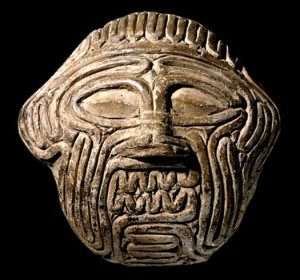
Labyrinth?
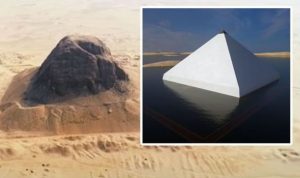
Senusret II was the fourth pharaoh of the Twelfth Dynasty of Egypt who ordered for the construction of the Pyramid of Lahun before his death. The ancient ruler took a great deal of interest in the Faiyum oasis region and began work on an extensive irrigation system from Bahr Yussef through to Lake Moeris in Middle Egypt.
Side step: "When closed the labyrinth was indeed a place of death. Figure and word never wholly lost their funereal character, which was connected with the legend of the Minotaur, the bull-headed, man-eating monster. This is explicitly stated in the inscription on a mosaic representation of the labyrinth in a family tomb in the North African city of Hadrumentum : Hie inclusus vitam perdit, "He who is confined here loses his life." The picture is a late, complicated representation of the labvrinth : in the center is the dying Minotaur, and outside the entrance sits Theseus' ship. On both sides the labyrinth is framed by meander patterns which indicate, in the ancient manner, the possibility of entering and leaving. In this connection it seems worthwhile to quote Sophokles. In a lost tragedy he calls the labyrinth achanes.1™ The word was later explained as "roofless," which may have something to do with the fact that at Knossos a roofless dancing ground was spoken of as a "labyrinth." Yet the philosopher Parmenides, a contemporary of Sophokles, used this term for an entrance with open doors. And there is nothing in the legend of Theseus to suggest that in entering the labyrinth the hero broke open the gate that is mentioned. The meander and spiral lines point to an open labyrinth which— if one turned at the center— was a passage to the light." {'Dionysos: Archetypal Image of Indestructible Life' / C. Kerenyi}.
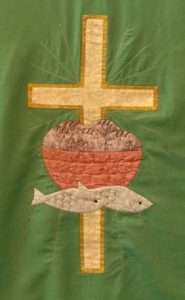
Metabolic 'food'?
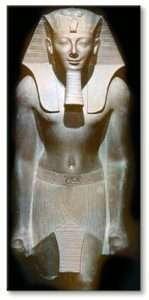
A work in progress: A person named JOY is able to smell and identify those with 'Parkinsons' - with what became known as the 'T' SHIRT test. 100% successful. Not just a brain disorder but a metabolic one.'' ['Paxman: Putting Up With Parkinsons' / ITV / 2022].
''Metabolism (pronounced: meh-TAB-uh-liz-um) is the chemical reactions in the body's cells that change food into energy. Our bodies need this energy to do everything from moving to thinking to growing. Specific proteins in the body control the chemical reactions of metabolism.''
'Billy Connolly' to enlarge.
Refresher: ’'A symbol is an energy-evoking and direct agent’' {Joseph Campbell}.
Vivid dreams - an aspect of the same disease {lucid dreaming?}. CBD being thought of to ''alleviate those symptoms and possible psychosis.''

Glauberg Warrior. Whats the remedy for mad, bad or sad ?
Dream: ''Drilling holes in ICE in a competitive enviroment. From 17mm up to 20mm in a 3mm increment. I dont know how i think of them. Its just incredible. Couldn't make it up if you wanted to.'' [Barry Thick: Stage 1 CBD trial patient].
What do those 'numbers' represent in relation to ''ice''?
'Forty' in total?
Question. Collective unconscious only?
'The Rose that Blooms at the Center of the Cross' to enlarge one way or the other.

'Seven' segments each X 3 = 21?
A different perspective: ''In the underworld the gateways into transforation are sealed by the divine presence of goddesses, sentries, guardians and messengers whose names define the lessons one must 'learn' in order to pass through to the next stage of initiation....The twentyone goddesses who attend the doorways of death are linked with the seven Hathors, goddesses of life who attend birth and bestow ones fate. The twentyone are but triple aspects of those same seven.'' [Page 366 'Dreams of Isis' ].
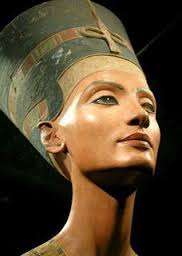
UPSIDE DOWN EMBLEM?: ''Full of wisdom and insight....that leads to answers, and the answers are the essence of the world's wisdom teachings....When the heart awakens, the person is transformed.''['The Quest of the Rose: Book 1: The Cosmic Keys of Our Future Becoming' / A. Smitsman and J. Houston]. Recall the missing heart of Tut. Question. Individual or planetary 'awakening'?
'Arachne Rising: The Search for the Thirteenth Sign of the Zodiac' / J. Vogh.
Understanding what they all imply by that most common of all words {keys} within this subject makes sense of the above - if only in the Micro sense of the 'word'. Its Macro understanding implied by a 'direction'. Parapsychologists however, refer to the same; in a round about way; to the 'Pineal gland'. What some have called the 'seat of the soul', [chapter three. 'The Source Files'. D. Wilcock]. Think about it, in relation to 'seat/throne' symbolism.
Understanding this subject in full [the above book touches on certain aspects, of amongst others, Freemasonry, Hermetic texts and Zoroastrianism], gives a 'framework' to that books 'overview'. A framework to that 'garment'.[Key]. Or depending on ones point of view- a garment to that framework.
 "...nothing is covered that will not be revealed, or hidden that will not be known." [Matthew X, 26]. "...symbols are not obstacles that must be eliminated in order to arrive at knowledge of the truth, but rather means for receiving 'revelation'. The "clothes" - the symbols - of truth are for each not what hides it, but rather what reveals it." [Extract from the book by Tomberg].
"...nothing is covered that will not be revealed, or hidden that will not be known." [Matthew X, 26]. "...symbols are not obstacles that must be eliminated in order to arrive at knowledge of the truth, but rather means for receiving 'revelation'. The "clothes" - the symbols - of truth are for each not what hides it, but rather what reveals it." [Extract from the book by Tomberg].
"O children of Adam. Indeed, we have given you garments to cover your 'nakedness',[key] and as a thing of beauty;...but the garment of god-consciousness is the best of all. This is one of gods messages....that human beings might take it to heart". [Quran 7:26]
"In Burnt Norton, of the Four Quartets, T.S. Elliot visualizes the lotus rising quietly, its surface glistening out of the heart of light. There is a play on the double meaning [as noun and verb] in the word rose. The seven flower chakras are each composed of light, but in this context the 'heart of light' is a direct reference to the heart chakra, or anahata.".........
"The 'flower' which is the key to modern Spiritual development is the ajna, the chakra located between the eyes. This flower is dual lobed, which is why in some literature, it is described as having two petals. It is said to be presided over by the hakini."[Bibliographic notes to chapter 5, 'The Zelator'. Mentioned elsewhere].
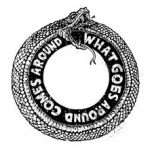
Head-feet?
 "Wisdom is a flower from which the bee its honey makes and the spider poison, each according to its own nature." [Chapter 2, 'Alchemists Handbook' by F. Albertus].
"Wisdom is a flower from which the bee its honey makes and the spider poison, each according to its own nature." [Chapter 2, 'Alchemists Handbook' by F. Albertus].
'And/or: 'Saxifraga is the largest genus in the family Saxifragaceae, containing about 465 species of holarctic perennial plants, known as saxifrages[2] or rockfoils.[3] The Latin word saxifraga means literally "stone-breaker", from Latin saxum ("rock" or "stone") + frangere ("to break"). It is usually thought to indicate a medicinal use for treatment of urinary calculi (known as kidney or bladder stones), rather than breaking rocks apart.''
Put those 'keys' in the usual box to understand that 'connectedness' - if only, in order, to define a subject. "The fruit of the Underworld Tree is only poisonous in its untransmuted state." [Chapter 4, 'The Underworld Initiation' by R. Stewart]. That link to the difference in 'meaning' to ''incarnation'' and ''reincarnation,'' IF only in relation to this subject. Use the usual box.
''Untransmuted'' in relation to Unmanifested or ineffable?
'Hair of the Dog'? {Anubis?}.
Side note: ''The most poisonous fish in the world is the stonefish.'' ['The Chase'].
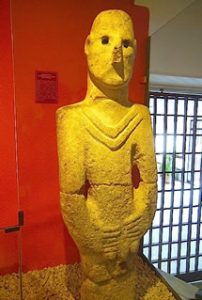
Looking through spiritual or material eyes? 'Obsidian' to enlarge.
A working example ? {in the 'spiritual' sense of the word}: "Our fourth struggle is against the demon of anger. We must, with gods help, eradicate his deadly poison from the depths of our souls. So long as he dwells in our hearts and blinds the eyes of the heart with his sombre disorders, we can neither discriminate what is for our good, nor achieve spiritual knowledge, nor fulfil our good intentions, nor participate in true life; and therefore our intellect will remain impervious to the contemplation of the true, 'divine light'; for it is written, 'For my eye is troubled because of anger' {Ps. 6:7. LXX}. Nor will we share in divine wisdom even though we are deemed wise by all men, for it is written: 'Anger lodges in the 'bosom' of fools' {Eccles. 7:9}..." ['The Philokalia' / G.E.H. Palmer etc. Emphasis, this readers].
That divine word again - what does it represent?
 And/or: "You must understand that i am giving you an outline. You must remember that both yawning and laughter are very contagious. This shows that they are essentially functions of the instinctive and 'moving' centers."...'Why is laughter so pleasant?' someone asked. '...''Because G. answered, ''laughter relieves us of superfluous energy, which, if it remained unused, might become negative, that is, poison. We always have plenty of this poison in us. Laughter is the antidote. But this antidote is necessary only so long as we are unable to use all the energy for useful work. It is said of Christ that he never laughed. And indeed you will find in the Gospels no indication or mention of the fact that at any time Christ laughed. But there are different ways of not laughing. There are people who do not laugh because they are completely immersed in negative emotions, in malice, in fear, in hatred, in suspicion. And there may be others who do not laugh because they cannot have negative emotions. Understand one thing. In the higher centers there can be no laughter, because in higher centers there is no division, and no 'yes' or 'no'. " ['In Search of the Miraculous']. Try ''yes'' / ''no''.
And/or: "You must understand that i am giving you an outline. You must remember that both yawning and laughter are very contagious. This shows that they are essentially functions of the instinctive and 'moving' centers."...'Why is laughter so pleasant?' someone asked. '...''Because G. answered, ''laughter relieves us of superfluous energy, which, if it remained unused, might become negative, that is, poison. We always have plenty of this poison in us. Laughter is the antidote. But this antidote is necessary only so long as we are unable to use all the energy for useful work. It is said of Christ that he never laughed. And indeed you will find in the Gospels no indication or mention of the fact that at any time Christ laughed. But there are different ways of not laughing. There are people who do not laugh because they are completely immersed in negative emotions, in malice, in fear, in hatred, in suspicion. And there may be others who do not laugh because they cannot have negative emotions. Understand one thing. In the higher centers there can be no laughter, because in higher centers there is no division, and no 'yes' or 'no'. " ['In Search of the Miraculous']. Try ''yes'' / ''no''.
Try the title of the book to 'see' it in its broader {universal?} context.


'Prince' link? ''Widening'' to enlarge.
"The spider and the moon will concern us still further. But one more poetic image in conclusion. Ariadne, the moon goddess who helped Theseus with the thread, is also the Celtic moon goddess Arianrhod. Arianrhod is known as 'the Lady of the Silver Wheel'. Her title is usually held to be a reference not just to Spiral Castle but also to the disc of the moon. These are, of course, opposite. But is her title perhaps rather a reference to the silver spider's web, heavy with dew in the morning mist." [Chapter 6, 'Cities of Dreams' by S. Gooch].
''Dew'' one of this subjects key words. A link to the 'philosophers' stone. From something 'unredeemed' to being 'redeemed'. Spider and bee its two main symbols [early stages of]. The web of which as indicated in the same book is constructed both clockwise and counter clockwise, from its center. All indicative of those different universal principles, [i.e., framework]. Which the author; if only for this reader; cannot 'see' due his single minded obsession over twenty years - linking the origin of all known 'mysteries' to Neanderthal man - and his knowledge of moon symbolism, [only]. But because of all that well researched data - allows others to 'see'.
'The Implied Spider: Politics and Theology in Myths' / W. Doniger.

Center or 'Off center'? A centering within?

Rosa Louise McCauley Parks.
"...Think well: the physical is the end result of spiritual forces. Therefore to seek the source of those 'spiritual' forces, the Ariadne's thread, to lead you through the psychic astral maze, must be anchored in the forms of earth {Memphis/Abydos}. These physical forms are reflections of a spiritual reality. They are reflections of the ultimate truth beyond form. Look well into the mirror of nature to see the reflection of the spiritual stars." [Extract from the book ' The Rose Cross and the Goddess: The Quest for the Eternal Feminine Principle'. Emphasis, this readers].
Athene/Ptah/Seti I - to enlarge.
Try ''hippo/croc.'' as {one} alternative in the Macro sense of the word. ''Wolfgang Pauli'' in Micro sense.
A working example: "What point would there be in living all of the time in an abstract world', asked Abushed. 'Don't be afraid. Everyone finds himself in the world where he belongs. The essential thing is to have a fixed point from which to check its reality now and then..." ['Her-Bak']. Try ''center''. And/or ''grounded''. Benefit of.

Magritte - 'The Key to Dreams'. Rene Magritte said ''It is a union that suggests the essential mystery of the world. Art for me is not an end in itself, but a means in evoking that mystery." [https://alexanderstorey.wordpress.com].
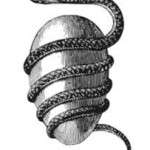
Tail clockwise? Head anti-clockwise?
A {practical?} example...Take a rod or peg to hold a stable center, and from it extend a cord. Start if you wish with the cord enwrapped round the rod as if drawing spun thread from around a spindle. Proceed, in a clockwise direction, to unwind the cord. You will find that you mark or trace out a spiral dance that culminates in a circle. Thus you are re-enacting the primal creation. Do this many times, fully aware of the significance of what you are doing. You will thus learn much of your spiritual origin and the principles of creation. Merely to read of it is to miss the experience. You cannot travel to market without stirring your feet. You cannot experience reality from the pages of a book. The pages can guide your feet. But it is up to your feet to follow. Intellectual curiosity and impatience are no substitute for patient plodding behind the plough {plow}...The first time you perform this exercise you will be preoccupied by physical problems and distractions. With persistence you will find that you can perform it with your inner faculties to the fore, aware of the profound significance of the pattern which you trace. Early man spent much time and effort carving spiral symbols on rock. You will be much rewarded by spending a fraction of his time and effort carving these same symbols upon your consciousness...These props will not be necessary after a time. You will later tread the spiral and circular path from an imaginary point. It is no less real because it is fixed only in the imagination. But initial grounding in the physical is important." [Extract from the book 'The Rose Cross and the Goddess' by G. Knight].

Found on Oak island. Freemasons associated with it.
The above an example of what is mostly done {enacted?} within the so called ''Mystery clubs.'' Proving the viability of a studious approach - a CONSISTENT one; over many years; as proven by the study of ANY subject; and not just through one book because of ''intellectual curiosity'' - because it gives the same results,i.e.,an understanding {as in the above example} of why neolithic man spent much time carving on ''rocks'' such universal symbols as the ''spiral." Recall what ''rocks'' represent. Then try ''plough.''
Neolithic equivalent - 'spiral' forms created within such monuments as Newgrange {Macro} and/or on single rocks {Micro} as seen within the program 'A History of Ancient Britain' narrated by N. Oliver. All enlarged elsewhere.
Finally link all the above to... "...Crowley once said that the magician's sole aim was to interpret his own 'magical' record, and after many years, i have come to agree with him." [Extract from the book 'The Magister'].
 ''Interpretation'' in relation to what they experience in their personal day to day wakeful state {lucid dreaming?} and nightly one AFTER enacting such activities {the mythology stories mainly and/or the four compass points in relation to other symbols that represent N/S/E/W etc}. Which they then record; which sooner or later enters in the public domain. Regardless even by Mr Knights suggestion; within the same book; that not all is explained. The bits that are not; can be worked out by 'negation'. All symbols are connected in one form or another. Some are more connected than others. Others need 'more' to interpret their deeper meaning; especially when 'individuality' is brought into account - or more importantly - when it becomes part {primary/secondary?} of the total equation. Just as in physics {especially the deliberate coming together of protons} - whats not there is sometimes more ''telling'' than what is, i.e.,relative to the 'observer'. Understanding that universal framework ESPECIALLY in relation to what ALL imply by the ''divine bit'' gives all the above a certain credibility to it. A credibility that can be worked out - by objective analysis.
''Interpretation'' in relation to what they experience in their personal day to day wakeful state {lucid dreaming?} and nightly one AFTER enacting such activities {the mythology stories mainly and/or the four compass points in relation to other symbols that represent N/S/E/W etc}. Which they then record; which sooner or later enters in the public domain. Regardless even by Mr Knights suggestion; within the same book; that not all is explained. The bits that are not; can be worked out by 'negation'. All symbols are connected in one form or another. Some are more connected than others. Others need 'more' to interpret their deeper meaning; especially when 'individuality' is brought into account - or more importantly - when it becomes part {primary/secondary?} of the total equation. Just as in physics {especially the deliberate coming together of protons} - whats not there is sometimes more ''telling'' than what is, i.e.,relative to the 'observer'. Understanding that universal framework ESPECIALLY in relation to what ALL imply by the ''divine bit'' gives all the above a certain credibility to it. A credibility that can be worked out - by objective analysis.
Other 'things' that can be worked out - using the above again as {one} example...''Clockwise = unwind'' - therefore anticlockwise = wind = return symbolism = precession = etc etc. Or would that be vise versa?
And/or: Chair of Lethe in relation to ''negation''.
Egyptian equivalent = rolled/UNrolled papyrus. 'See' the link between ''spiral'' and horizontal/vertical symbolism.
Question. What is 'papyrus' used for? Try ''Beech'' to 'see' it from a different perspective.
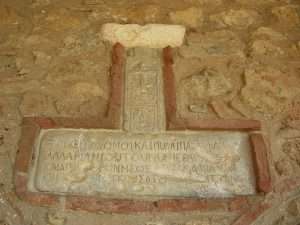
Refresher: ''Glory be to him who brought together the nearest of the near and the farthest of the far.''
"We cultivate it, the sage replied, when we encourage the craftsmen to put quality first in the smallest piece of work, when we awaken in our students a consciousness of the relations that link the things of this Earth with 'Heaven', in general when we formulate the laws of analogy, and finally when by representations of the Neters and by symbolism of letters we describe the functions and qualities of Nature. A man who will learn by this symbolism quickly becomes open-hearted...That is why ideas, which you call non-material, are represented by concrete objects. But the sign you spoke of shows a papyrus rolled and sealed; the eye doesn't see its contents. One is to look for the hidden meaning, which often calls for the intelligence of the heart." ['Her-Bak'].
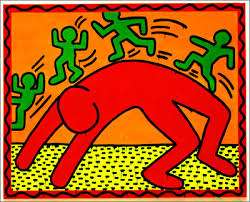 A working? example {i.e.,a work in progress}..."Typical lodge meetings consist of enacting a series of short plays that contain a moral message and encourage personal insight and understanding. All of this is contained in a complicated story involving the building of Solomon's Temple...I soon came to realize that there was a considerable difference between my understanding, based on what i had been taught at school and through religious teachings, and what had apparently happened based on historical records. In particular, it is what has been left out, deliberately or otherwise, that distorts the imagery. It is what we are not told that colours our perceptions. When one is aware of the intervening facts, a new angle {key} on events is presented." {K. Gest}. Enlarged elsewhere. Try ''method'' and ''angle''.
A working? example {i.e.,a work in progress}..."Typical lodge meetings consist of enacting a series of short plays that contain a moral message and encourage personal insight and understanding. All of this is contained in a complicated story involving the building of Solomon's Temple...I soon came to realize that there was a considerable difference between my understanding, based on what i had been taught at school and through religious teachings, and what had apparently happened based on historical records. In particular, it is what has been left out, deliberately or otherwise, that distorts the imagery. It is what we are not told that colours our perceptions. When one is aware of the intervening facts, a new angle {key} on events is presented." {K. Gest}. Enlarged elsewhere. Try ''method'' and ''angle''.
N.B. ''Negation'' = 'The Cloud of Unknowing' ?
Analogy..."In Kings 8:10-11, we find a curious comment. It is related to the dedication of the temple when the Ark of the Covenant was carried into the holy of holies and placed beneath the outstretched wings of the cherubim. The text reads: 'And it came to pass, when the priests came out of the holy place, that the cloud filled the house of the lord, so that the priests could not continue ministering because of the cloud; for the glory of the lord filled the house of the lord." Some interpretations of this text suggest that the 'glory of the lord' was a bright light signifying the lords presence..." [From the book by K. Gest].
Try ''cherubim''.
''Cloud'' in relation to something 'unknown'. ''Glory'' in relation to 'grace'.
Working example: ''Worry comes from self pity. When the self is forgotten there is no worry. Worry comes also from fear; and fear comes from the clouds of ignorance. Fight back the clouds.'' Signed Muhammad Ali - peace - 1971. { Written just before his fight in Zurich, Switzerland on December 26th 1971. Pawn Stars / S14 EP11}.

Found on Oak island.

Bobbin?
REFRESHER: "...Think well: the physical is the end result of spiritual forces. Therefore to seek the source of those 'spiritual' forces, the Ariadne's thread, to lead you through the psychic astral maze, must be anchored in the forms of earth. These physical forms are reflections of a spiritual reality. They are reflections of the ultimate truth beyond form. Look well into the mirror of nature to see the reflection of the spiritual stars." [Extract from the book ' The Rose Cross and the Goddess: The Quest for the Eternal Feminine Principle'. Emphasis, this readers].
Question. Who was Ariadne 'married' to?
Understanding the above defines... Understanding this subjects most commonly used key word,i.e.,'divine', deciphers the core essence of this subjects 'framework'. The core essence of all 'esoteric' literature. That understanding also explains why the subject of the 'psyche' is used as 'its' main teaching aid. Clue. You cannot have one without the other; but one has to come before the other.
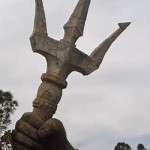 "... if you are armed with the 'wand' of intuition, the 'cup' of sympathy, the 'sword' of reason and the 'pentacle' of valor, you will find there {the legends say - and/or mythology - this readers input} the Medicine of Metals, the Elixir of Life, the Philosophers Stone, True Wisdom and perfect happiness." [Extract from the book 'The Cosmic Trigger' by R. Wilson. Emphasis, this readers].
"... if you are armed with the 'wand' of intuition, the 'cup' of sympathy, the 'sword' of reason and the 'pentacle' of valor, you will find there {the legends say - and/or mythology - this readers input} the Medicine of Metals, the Elixir of Life, the Philosophers Stone, True Wisdom and perfect happiness." [Extract from the book 'The Cosmic Trigger' by R. Wilson. Emphasis, this readers].
Practical example {i.e.,ancient and modern?}: "Swords normally found in sacred marches or bogs - after being discarded for ritual reasons..." ['Digging for Britain'. Episode 3. Series 6].

The Peace dollar is a United States dollar coin minted for circulation from 1921 to 1928 and 1934 to 1935, and beginning again for collectors in 2021. Designed by Anthony de Francisci, the coin was the result of a competition to find designs emblematic of peace. Its obverse represents the head and neck of the Goddess of Liberty in profile, and the reverse depicts a bald eagle at rest clutching an olive branch, with the legend "Peace". It was the last United States dollar coin to be struck for circulation in silver....The public believed the announced design, which included a broken sword, was illustrative of defeat, and the Mint hastily acted to remove the sword. Question. Going west?
And/or: The narrator Neil Oliver within the program 'A History of Ancient Britain' {4th series - 'Age of Bronze'} - surmises why such items as the Dover boat {'oldest surviving sea going vessel in the world' } and sword like implements {i.e.,'rapier'} were broken deliberately before being {discarded?} into sacred bogs or rivers - ''to appease the gods."
Connect ''ship'' with ''sword'' as a means...?
And/or: Swords found as part of grave goods at a place called Meads near Sittingbourne {S/E}: ''Functional weapons; but they have a symbolic roll; placed in the graves of people who never used them in battle''. Try such 'key' words {logos} as: ''mead'' / ''sword'' / ''S/E {corner stone?}'' - to attempt to 'fathom' a mind set beyond: ''They want to imagine and see themselves as warriors." ['Digging for Britain'. Series 1. Episode 3].
And/or: Eight log boats found in the fenlands of S/E England {River Nene}. Thousands more speculated on. Speculation about ''water burial's'' - due the possibility of a connection between swords/spears/boats and bones and the ''marshes and wetlands'' that are MOSTLY associated with them. Alice Roberts unsure about such speculation ''Most burial's on dry land such as stone and crouch burials, rather than burial's in water.'' ''Archaeology boundaries'' mentioned to such possibilities. ['Digging for Britain' / Series 3. Episode 1].
To push those boundaries further understand the enclosed MIND SET.
Question. Why rivers and not seas?
Refresher: "The Agnisuryans respond to the sound. The waters ebb and flow. Let the 'magician' guard himself from drowning, at the point where land and water meet. The midway spot, which is neither dry nor wet, must provide the standing place whereon his feet are set. When water, land and air meet there is the place for 'magic' to be wrought {'fire'?}."
Fenland?
A closer effort could be...

'Sword of reason' under his belt?
"...certainly once the mystical Sword of the Word is broken into pieces, nothing less than the quest of a Galahad {i.e.,in relation to the word Gnosis?} is needed to reunite them. All the effort in the west from Robert Fludd to Goethe, from Boehme to Swedenborg, takes on this meaning..." Try ''logos'' ...together with...
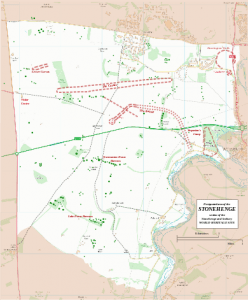 "The story that Illich tell of the phenomenology of the text is perhaps only one way in which the connection to the Word may be lost. In whatever form it takes, the loss of connection between the external, {i.e., exoteric} public form of the Book and the meaning hidden within it gives rise to a drama common to all the religions of {each} 'Book'. If the true meaning of the Book is the interior meaning, hidden under the literal appearance, from the moment that men fail to recognise or refuse this interior meaning; from that moment they destroy the integrity of the 'Word', of the Logos; and then begins the drama of the Lost Speech. From the moment we refuse the interiority of the text or of the world, then the world is turned inside out. The task of hermeneutics is to recover this living, integral Word and, through this, to make possible the 'Event at the edge of the exoteric cosmos' which is the Great Inversion." [From the book 'The World Turned Inside Out'. Mentioned elsewhere. Emphasis/parenthesis, this readers].
"The story that Illich tell of the phenomenology of the text is perhaps only one way in which the connection to the Word may be lost. In whatever form it takes, the loss of connection between the external, {i.e., exoteric} public form of the Book and the meaning hidden within it gives rise to a drama common to all the religions of {each} 'Book'. If the true meaning of the Book is the interior meaning, hidden under the literal appearance, from the moment that men fail to recognise or refuse this interior meaning; from that moment they destroy the integrity of the 'Word', of the Logos; and then begins the drama of the Lost Speech. From the moment we refuse the interiority of the text or of the world, then the world is turned inside out. The task of hermeneutics is to recover this living, integral Word and, through this, to make possible the 'Event at the edge of the exoteric cosmos' which is the Great Inversion." [From the book 'The World Turned Inside Out'. Mentioned elsewhere. Emphasis/parenthesis, this readers].
Question. How would that turnaround {'U-turn'?} be represented in the night sky?
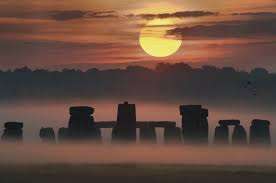 'Mans Search for Meaning' / Viktor Frankl.
'Mans Search for Meaning' / Viktor Frankl.
Pun? ''We all have a 'book' in us'' {waiting to be written?}. In the micro sense of the 'Word'. Religious texts in the macro sense. Try ''Event'' and/or ''lost word'' and/or ''hermeticism''. Connect them to see if you agree or disagree.
''Event at the edge {'boundary' link} of the exoteric cosmos which is the great inversion.''
REFRESHER: "....Sirius being the star of Horus, and the Step Pyramid complex being named Horus Is the Star at the Head of the Sky." [Page 134 'Imhotep the African'].
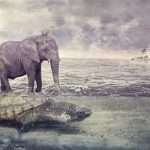 Something hinted at: ''One of the shortest books in the world, but one of the most powerful, is called the Yoga Sutras of Pantanjali....Pantanjali tells the reader to concentrate on the strength of the elephant....The Rishes taught that the evolution of the whole cosmos is the goal of existence, and that the seeds of this transformation lie in the human body. In 5067BC the cosmos was moving towards the next stage of its human {conscious} evolution - as the sun entered the sign of Gemini. Just as, earlier, the impulse for the evolution of humankind had moved eastwards from the drowning Atlantis to India - now it began to move westwards, as it continues to do today.'' [Page 178 'The Secret History of the World' / J. Black].
Something hinted at: ''One of the shortest books in the world, but one of the most powerful, is called the Yoga Sutras of Pantanjali....Pantanjali tells the reader to concentrate on the strength of the elephant....The Rishes taught that the evolution of the whole cosmos is the goal of existence, and that the seeds of this transformation lie in the human body. In 5067BC the cosmos was moving towards the next stage of its human {conscious} evolution - as the sun entered the sign of Gemini. Just as, earlier, the impulse for the evolution of humankind had moved eastwards from the drowning Atlantis to India - now it began to move westwards, as it continues to do today.'' [Page 178 'The Secret History of the World' / J. Black].
Cancer/Gemini. East/West. Beginning/End. Clockwise/Anti-clockwise - as a means.....?

A prediction?
Analogy {i.e.,something hinted at again}: "Discarding of course, all the mythical explanations of the Lost Pleiad, I would notice some of the modern and serious attempts at an elucidation of the supposed phenomenon. Doctor Charles Anthon considered it founded solely upon the imagination, and not upon any accurate observation in antiquity. Jenson thinks that as a favourite object in Babylonia, the astronomers attached to it, with no regard to exactitude, there number of perfection or completeness - the number seven...The Greeks less favourably situated, finding only six....invented the story of the 'missing' sister. Riccioli, however, propounded a theory - which I have nowhere found elsewhere - that the seventh and missing Pleiad may have been a nova {supernova?} appearing before that number was recorded by observers but extinguished around the date of the Trojan War; this last idea accounting for the association of Electra with the lost one...As the spectrum of this star {Pleione} shows the bright lines of hydrogen like that of P Cygni, Pickering suggests that it may similarly have had a temporary brilliance and thus be the lost Pleiad..." [Page 408-411 'Star Names and Their Meanings'].
1/137 ?
Menkaure to enlarge.

left foot?
 Side note: "Music and dancing are often linked {'spiral'?}. In the Algonquin story of Algon the hunter, the 'hero' finds a circular pathway on the prairie, worn as though by many feet, although no footprints can be found outside the area. Hiding himself in the long grass he hears music which becomes louder and sees descend from the sky a host of star-maidens in an osier chariot. They alight and dance, and he captures one to be his bride." [Page 115 'The Western Way'. Vol 1].
Side note: "Music and dancing are often linked {'spiral'?}. In the Algonquin story of Algon the hunter, the 'hero' finds a circular pathway on the prairie, worn as though by many feet, although no footprints can be found outside the area. Hiding himself in the long grass he hears music which becomes louder and sees descend from the sky a host of star-maidens in an osier chariot. They alight and dance, and he captures one to be his bride." [Page 115 'The Western Way'. Vol 1].
Why Willow ?
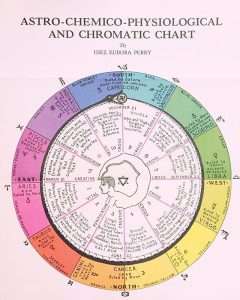
Feet-head = Aries-Pisces.
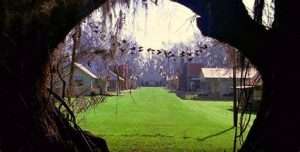
The main character arrives too 'early'. Ends up barefoot. High wire act? 'Hanging' around?
Continued: And/or: "The symbol of Seshat was a seven-pointed star or flower {a rosette} that was held by a long stem {'narrow'?} attached to a tiara the goddess wore on her head. As G. A. Wainwright pointed out, this symbol appears on the Narmer and Scorpion palette - which suggests that the Stretching of the Cord ritual, was known in those remote times." [Page 141, 'Imhotep the African']. Try ''cord''.
Stretched?
Any knots?
Trooping the Colour is a military parade that involves the seven army regiments that serve the queen1. The ceremony sees the colour (name for a regimental flag) paraded in front of assembled troops, overseen by the monarch1. The ceremony is an old one, where a battalion would fall in by companies and the colour-party would "troop" or march the colours through the ranks so that every man would see that the colours were intact2. This was done before and after every battle. The ceremony has been retained through time and is today largely ceremonial.

Wednesday's child.
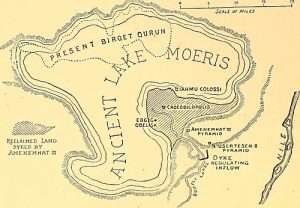 From a different perspective: "We have been discussing the different forms of prayer: blessing, adoration, thanksgiving, praise, intercession, petition. But where does all this prayer come from. Where is its source? Where's the water that's going to spring up from within? Like we talked about at Ash Wednesday? Its the holy spirit itself. Now i remember walking up in the northern parts of the Holy Land, and its a place called Dam. Abraham went there....lots of water in the form of springs that literally spring forth from the earth. The holy spirit being a wellspring, like an underwater river or big lake. The heart of the Trinity....This is where we have to go to "sit next to the water" {'right hand of god'?}. This is where the source is...."Where the life of the Trinity exits in order to drink from it - to enable something from within to spring forth."
From a different perspective: "We have been discussing the different forms of prayer: blessing, adoration, thanksgiving, praise, intercession, petition. But where does all this prayer come from. Where is its source? Where's the water that's going to spring up from within? Like we talked about at Ash Wednesday? Its the holy spirit itself. Now i remember walking up in the northern parts of the Holy Land, and its a place called Dam. Abraham went there....lots of water in the form of springs that literally spring forth from the earth. The holy spirit being a wellspring, like an underwater river or big lake. The heart of the Trinity....This is where we have to go to "sit next to the water" {'right hand of god'?}. This is where the source is...."Where the life of the Trinity exits in order to drink from it - to enable something from within to spring forth."
"The sacred scripture and the liturgy of the church are such wellsprings. Liturgy means public worship by a group. There's something called Liturgy of the Hours. A divine way of working. The work of god that we are jumping into. There's seven hours plus one. Seven being the perfect number. Eight being a link to Beatitude. 8th day of the week - resurrection. [Day sixteen: Pilgrimage: Lent 2024 / Magdala].
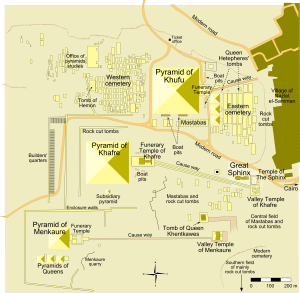
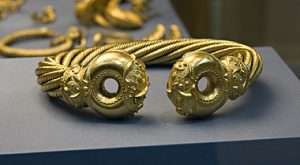
Eight strands each. Sixtyfour in total.
And/or: The monastic rule drawn up by Benedict of Nursia (c. 480 – c. 547) distinguishes between the seven daytime canonical hours of lauds (dawn), prime (sunrise), terce (mid-morning), sext (midday), none (mid-afternoon), Vespers (sunset), compline (retiring) and the night-time canonical hour of vigil. It links the seven daytime offices with Psalm 118/119:164, "Seven times a day I praise you for your righteous rules";[34] and the one nighttime office with Psalm 118/119:62, "At midnight I rise to praise you, because of your righteous rules",[35][36][37]
In this reckoning, the one nocturnal office, together with Lauds and Vespers, are the three major hours, the other five are the minor or little hours.[38][39][40]
 According to Dwight E. Vogel,[41] Daniel James Lula[42] and Elizabeth Moore[43] the diurnal offices are Terce, Sext, and Nones, which are distinguished from the major hours of Matins, Lauds and Vespers and from the nighttime hours of Compline and Vigil.
According to Dwight E. Vogel,[41] Daniel James Lula[42] and Elizabeth Moore[43] the diurnal offices are Terce, Sext, and Nones, which are distinguished from the major hours of Matins, Lauds and Vespers and from the nighttime hours of Compline and Vigil.
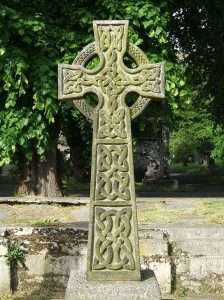
'Knots' to enlarge.
A work in progress: ''Follow the line of the Great Stretcher up to karariwari. The star that does not move. The CHIEF star {North star}....And the three stars in Orions belt we call Rahurahki, the deer. When they all point straight down that's south. Over there Cupiriktaka, Evening star West. And there Hupirikucu, Morning star East, give or take a little.'' ['The English' {26 minutes} / S1 EP5 / BBC].
N.B. From the viewpoint of Colorado on the Wyoming BORDER.
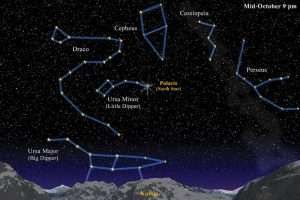 And/or: Most American Indian tribes used the stars as indicators of the time for seasonal ceremonies and their position when they were traveling across the land, but only one tribe was called the Star People. These were the Pawnee. Their oldest traditions assert that their people came from the southwestern U.S., where they would have had contact with Indians from Central and South America. From there, they traveled east to the Mississippi River and settled near the Red River. In this area, they became part of the Caddoan tribes, who called them 'Awahi,' the Star People. The term 'Caddo' meant 'true chiefs,' and these people were descendents of the Mound Builders, who worshipped the Serpent and the Star. The Star that fell to earth was represented by a secret fire. The Caddo, as well as the early Pawnee, may have been influenced in their stellar cosmology by the more southern tribes, including the Maya.''
And/or: Most American Indian tribes used the stars as indicators of the time for seasonal ceremonies and their position when they were traveling across the land, but only one tribe was called the Star People. These were the Pawnee. Their oldest traditions assert that their people came from the southwestern U.S., where they would have had contact with Indians from Central and South America. From there, they traveled east to the Mississippi River and settled near the Red River. In this area, they became part of the Caddoan tribes, who called them 'Awahi,' the Star People. The term 'Caddo' meant 'true chiefs,' and these people were descendents of the Mound Builders, who worshipped the Serpent and the Star. The Star that fell to earth was represented by a secret fire. The Caddo, as well as the early Pawnee, may have been influenced in their stellar cosmology by the more southern tribes, including the Maya.''
And/or: ''One of the most iconic figures of the Old West, who spent time in Livingston and Bozeman during her notorious life, is Calamity Jane. How Martha Jane Canary acquired her provocative nickname is a matter of speculation, but the most plausible account has the city editor of the Cheyenne Daily Sun bestowing the moniker for her reputation of getting into trouble.
There’s a constellation in the sky that can relate.
Look north on fall evenings after dark, and you’ll find the equally iconic figure of the Big Dipper swinging low above the horizon. Follow its Pointer Stars (the two stars of the bowl farthest from the handle) up to the North Star and beyond, and you’ll find another familiar starry shape in the sky: the “W” of Cassiopeia the queen (though personally, I think it looks like an “M”).

Folded or UNfolded? Any 'gap'?
The five-star shape is often seen as outlining the chair on which the queen sits, but it is perhaps better seen as a Ferris Wheel seat than a throne, for as the sky turns, we can watch the queen go round and round the central spoke of the North Star.

Easter bonnet.
This actually fits with her story—but a calamitous queen was not the only thing seen in these stars. Every culture had its own opinion. The Pawnee saw here the south end of a rabbit heading north, for example, with the stars marking the bunny haunches and tail. The Snohomish people saw the skin of a giant elk; the stars marked the holes punched in the pelt when it was staked out to dry. Arabs saw the hump of a great camel, Laplanders a moose antler, Marshall Island natives the tail of a great dolphin. And the Siberian Chukchee saw a small herd of five reindeer in the sky.
To the Chinese, the stars marked Wang Liang, a famous charioteer of their own iconic past. Arabs additionally saw a female hand anointed with henna to protect it against the desert heat—and some in the Middle East called the pattern “The Lady in the Chair,” bringing us back to the ill-fated Cassiopeia.''

Bridge over troubled waters?
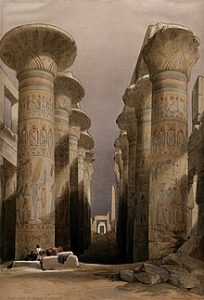
The middle ground. Hump in the middle with OPEN papyrus buds. ALL other columns - 'buds' closed.
Side note: The term “Hump Day” is a popular slang expression that refers to Wednesday, the midpoint of the traditional workweek. The phrase suggests that once you get over the “hump” of Wednesday, you are on the downhill slope toward the weekend {wednesday's child?}. This concept has resonated with many people as they navigate their weekly schedules, making the term a common part of modern workplace vernacular....The phrase “Hump Day” gained prominence in the late 20th century, particularly in the business world. It’s likely inspired by the metaphorical use of the word “hump” as a hurdle that one must overcome. The expression underscores the psychological relief that many feel at the arrival of Wednesday, knowing that the weekend is near.
Day of rest?
Silent vowels?
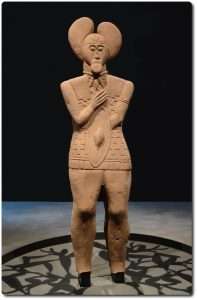

Born on Monday, fair in the face,
Born on Tuesday full of God's grace,
Born on Wednesday, sour and sad,
Born on Thursday, merry and glad,
Born on Friday, worthily given,
Born on Saturday, work hard for your living,
Born on Sunday, you will never know want.[7]
Yet another prediction begins the list on a Sunday, rather than ending on that day:
Sunday's child is full of grace,
Monday's child is full in the face,
Tuesday's child is solemn and sad,
Wednesday's child is merry and glad,
Thursday's child is inclined to thieving,
Friday's child is free in giving,
And Saturday's child works hard for his living.[8]

The tail end of the ''stinger'' = two swimming ducks. What are duck feathers made into?
And/or: "A warren is a network of interconnected burrows, dug by rabbits. Domestic warrens are artificial, enclosed establishments of animal husbandry dedicated to the raising of rabbits for meat and fur. The term evolved from the medieval Anglo-Norman concept of free warren, which had been, essentially, the equivalent of a hunting license for a given woodland....The cunicularia of the monasteries may have more closely resembled hutches or pens, than the open enclosures with specialized structures which the domestic warren eventually became. Such an enclosure or close was called a cony-garth, or sometimes conegar, coneygree or "bury" (from "burrow").....
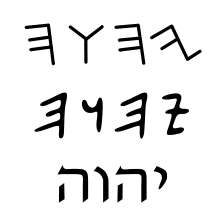
In a different form.
The most characteristic structure of the "cony-garth" ("rabbit-yard")[1] is the pillow mound. These were "pillow-like", oblong mounds with flat tops, frequently described as being "cigar-shaped", and sometimes arranged like the letter ⟨E⟩ or into more extensive, interconnected rows. Often these were provided with pre-built, stone-lined tunnels. The preferred orientation was on a gentle slope, with the arms extending downhill, to facilitate drainage. The soil needed to be soft, to accommodate further burrowing.[2]
This type of architecture and animal husbandry has become obsolete, but numerous pillow mounds are still to be found in Britain, some of them maintained by English Heritage, with the greatest density being found on Dartmoor."
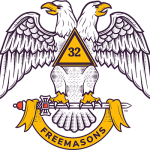
'Freedom' to enlarge.
A free warren—often simply warren—is a type of franchise or privilege conveyed by a sovereign in medieval England to an English subject, promising to hold them harmless for killing game of certain species within a stipulated area, usually a wood or small forest. The sovereign involved might be either the monarch or a marcher lord....
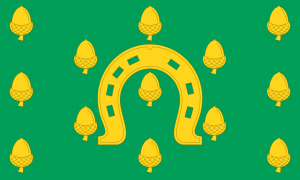
''Heart of oak are our ships, heart of oak are our men.''
The Mediaeval Latin form of the word warenna was used in legal documents such as Magna Carta.[citation needed] In addition, the office of warden is used for the overseer of a warren....The most cited authority on forest law, John Manwood, cites these beasts of warren..."The beasts and fouls of Warren are these, The Hare, the Cony, the Pheasant, and the Partridge, and none other..... However, Manwood is mistaken in his assignments, since the roe deer was transferred to "beast of warren" from "beast of the forest" in the fourteenth century.[7] Roe deer are still found within woodlands named "Warren" in contemporary England.....
The 1911 Encyclopedia adds roe, woodcock, quail, rail and heron to Manwood's list.[8] On the other hand, grouse are not birds of warren.[9] Fox, wolf, cat, badger, and squirrel are sometimes also added....Sometimes domestic swine are mistakenly thought to be beasts of warren, due the right of pannage."

''Down, down, down. Would the fall never come to an end? "I wonder how many miles I've fallen by this time?" she said aloud, "I must be getting somewhere near the centre of the earth.''
''What does rabbit hole mean? Used especially in the phrase going down the rabbit hole or falling down the rabbit hole, a rabbit hole is a metaphor for something that transports someone into a wonderfully (or troublingly) surreal state or situation.''
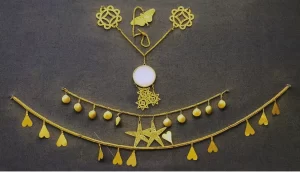
Flies. Golden ones.
And/or: Partridges become so deeply absorbed in their dance that even if a man comes up close and kills some of the dancers the rest continue undeterred; a habit of which the ancients took full advantage. In the mating-season they used to put a decoy cock-partridge in a cage at the end of a long narrow winding brushwood tunnel and gave it corn to eat. Its lonely cry, combining the call to love with the call to food, attracted the hens along the tunnel, and when they reached the cage and it uttered its usual challenge call, other cocks would come running up, only to be knocked on the head with sticks by the waiting hunters as soon as they emerged from the tunnel. Thus in / Samuel, XXVI, 20 Saul is taunted for his unkingly behaviour in hunting David, who is not only as insignificant as a flea but as easily caught as a mountain partridge. The decoy partridge was one that had dislocated its leg in trying to escape from the horse-hair slip-knot in which it was snared. This lame, and therefore easily tamed, decoy was fattened in a cage like a sacred king in his palace—both honoured prisoners—and the more numerous its victims, the more gleeful its cry. In Ecclesiasticus (XI, 36) the caged partridge is an allegory of the proud man who rejoices at the disasters into which he has decoyed his neighbours. This form of sport is still practised in Mediterranean countries as far west as Majorca....
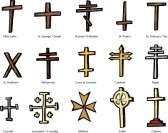
Which one represents 'lame'?
It seems, then, that in the pesach a bull-cult had been superimposed on a partridge cult; and that the Minotaur to whom youths and maidens (from Athens and elsewhere) were sacrificed had once represented the decoy partridge in the middle of a brushwood maze, towards which the others were lured for their death dance....
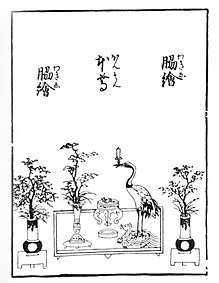
Long necked crane.
He was, in fact, the centre of a ritual performance, originally honouring the Moon-goddess, the lascivious henpartridge, who at Athens and in parts of Crete was the mother and lover of the Sun-hero Talus. But the dance of the hobbling cock-partridge was later transformed into one honouring the Moon-goddess Pasiphae, the cow in heat, mother and lover of the Sun-hero, the bull-headed Minos. Thus the spirally-danced Troy-game (called the 'Crane Dance' in Delos because it was adapted there to the cult of the Moon-goddess as Crane) had the same origin as the pesach. [Page 328/9 'The White Goddess'].
Side note: "In Greek mythology, Glaucus /ˈɡlɔːkəs/ (Ancient Greek: Γλαῦκος Glaukos means "greyish blue" or "bluish green" and "glimmering") was a Cretan prince as the son of King Minos. Glaucus' mother was Queen Pasiphaë, daughter of Helios, and thus, brother to Acacallis, Ariadne, Androgeus, Deucalion, Phaedra, Xenodice, and Catreus.
One day, while playing with a ball[1] or chasing a mouse[2] Glaucus fell into a jar of honey and died. Unable to find their son, his parents went to the Oracle at Delphi who told them "A marvelous creature has been born amongst you: whoever finds the true likeness for this creature will also find the child." They interpreted this to refer to a newborn calf in Minos' herd. Three times a day, the calf changed color from white to red to black. Polyidus (or Asclepius, god of medicine) observed the similarity to the ripening of the fruit of the mulberry plant, and Minos sent him to find Glaucus."

long or short? Made from within the bowels of the earth?
From a different perspective: {in the abstract SENSE of the word}: ''She was silent for a while as she reviewed the whole journey, which had seemed so terribly LONG and in some places cruelly difficult and even impossible. She thought of the altars which she had built along the way; at the time she had stood with Him {the Shepherd} at the trysting-place in the Valley, when He had called her to follow Him to the Heights. She remembered the walk to the foot of the mountains {eastern ones?}; the first meeting with Suffering and Sorrow and of learning to accept their help. She recalled the shock of what had seemed such a heart-breaking detour down into the desert, and of the things she had seen there. Then their journey along the shores of Loneliness; the empty cove which the sea had filled to the brim; and then the agony of disappointment and frustration experienced in the wilderness when the path had once again turned away from the High Places. She remembered crossing the great sea-wall, walking through the woods and valleys until the rapturous moment when the path had turned back towards the mountains.''

Giving directions?
AND/OR: It is difficult for people, especially people who are crystallized in their sense of right and wrong, to understand that there is no absolute right and wrong, but that right and wrong are relative. People are offended when told this, especially people who are vain enough to think they are right. Right and wrong depend on a third factor. As they are themselves, they are merely opposites, which cancel each other. The third factor is aim. If your aim is to go to Edinburgh, then it is right to go north and wrong to go south. But if your aim is to go to Brighton it is right to go south and wrong to go north. But people like to be told that it is always right to do this or that —e.g. to go north—and always wrong to go south. Many inflexible ideas of this kind dominate people’s minds and render their development sterile. The general formulation of right and wrong in the Work is that everything that awakens you is right. But this formulation requires a great deal of understanding in order to understand it...
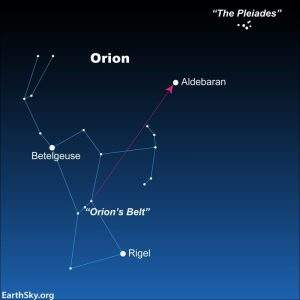
Lepus constellation lies in the northern sky, just under the feet of Orion. The constellation’s name means “the hare” in Latin. Lepus is not associated with any particular myth, but is sometimes depicted as a hare being chased by the mythical hunter Orion or by his hunting dogs, represented by the constellations Canis Major and Canis Minor. Lepus was first catalogued by the Greek astronomer Ptolemy in the 2nd century.
The constellation is home to the famous variable star R Leporis, better known as Hind’s Crimson Star, and it contains several notable deep sky objects: Messier 79 (NGC 1904), the irregular galaxy NGC 1821, and the Spirograph Nebula (IC 418).

The Hare nome, also called the Hermopolite nome (Ancient Egyptian: wnt "Cape hare") was one of the 42 nomoi (administrative divisions) in ancient Egypt; more precisely, it was the 15th nome of Upper Egypt.[2]
The Hare nome's main city was Khemenu (later Hermopolis Magna, and the modern el-Ashmunein) in Middle Egypt. The local main deity was Thoth, though the inscriptions on the White Chapel of Senusret I links this nome with the cult of Bes and Unut.
SIDE NOTE: "The Hare nome was already recognized during the 4th Dynasty of the Old Kingdom as shown by the triad statue of pharaoh Menkaure, Hathor, and an anthropomorphized-deified depiction of the nome.[1] It is known that during the 6th Dynasty its nomarchs were buried in the necropolis of El-Sheikh Sa'id.[4]
The nome kept its importance during the First Intermediate Period and the subsequent Middle Kingdom; its governors were also responsible of the alabaster quarrying at Hatnub in the Eastern Desert, they owned exclusive offices such as "director of the double throne" and great one of the five", and also were high priests of Thot.[2] Since the First Intermediate Period they moved slightly northward their official necropolis to Deir el-Bersha, where their remarkable though poorly preserved rock-cut tombs were excavated. During the Middle Kingdom the Hare nome was ruled by a rather branched dynasty of nomarchs usually named Ahanakht, Djehutynakht or Neheri. The last known among them, Djehutihotep, was also the owner of the most elaborate and preserved tomb of the Deir el-Bersha necropolis; he ruled until the early reign of Senusret III who is known to have put into action serious steps to minimize the power held by all nomarchs.[2][5]
During the Second Intermediate Period the Hare nome assimilated the neighboring Oryx nome (16th of Upper Egypt).[6]
A 'leap' of faith or an intuitive one?
Leap year?
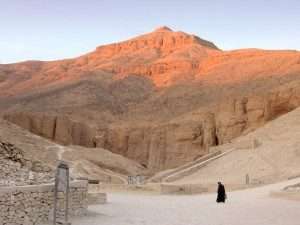
'She who loves silence'.
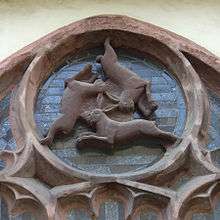
Leap = 'jump'?
Continued: Help, which comes from the direction of higher centres, cannot reach the Second State of Consciousness ; it can only reach as far as the Third State of Consciousness. Today, when so many people are hypnotized by war, there is more force available in the worId than at other times for those who seek it, if they can only touch it. But it cannot be touched by associated thinking which only keeps a man on the same level as if he were saying again and again: “I must jump”, not realizing that if he wishes to reach a higher level he must really jump. It is no use saying: “I must remember myself.” You must actually remember yourselves." {'Psychological Commentaries on Gurdjieff and Ouspensky' / M. Nicoll}.
Side note: ''Pharos was a small island located on the western edge of the Nile Delta. In 332 BC Alexander the Great founded the city of Alexandria on an isthmus opposite Pharos. Alexandria and Pharos were later connected by a mole[6] spanning more than 1,200 metres (0.75 miles), which was called the Heptastadion ("seven stadia"—a stadion was a Greek unit of length measuring approximately 180 m). The etymology of “Pharos” is uncertain. The word became generalized in modern Greek (φάρος ‘fáros’), and was borrowed by Italian (‘faro’) and French (‘phare’).
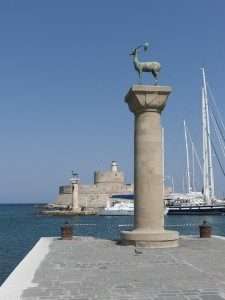
Stag and deer.
The east side of the mole became the Great Harbour, now an open bay; on the west side lay the port of Eunostos, with its inner basin Kibotos now vastly enlarged to form the modern harbour. Today's city development lying between the present Grand Square and the modern Ras el-Tin quarter is built on the silt which gradually widened and obliterated this mole. The Ras el-Tin promontory, where Ras el-Tin Palace was built in the 19th century, represents all that is left of the island of Pharos,[7] the site of the lighthouse at its eastern point having been weathered away by the sea. The lighthouse was constructed in the third century BC. After Alexander the Great died, the first Ptolemy (Ptolemy I Soter) declared himself king in 305 BC, and commissioned its construction shortly thereafter. The building was finished during the reign of his son, Ptolemy II Philadelphus, and took twelve years to complete at a total cost of 800 talents of silver.[8] The light was produced by a furnace at the top, and the tower was said to have been built mostly with solid blocks of limestone and granite. In his encyclopedic manuscript Geographica, Strabo, who visited Alexandria in the late first century BC, reported that Sostratus of Cnidus had a dedication to the "Saviour Gods" inscribed in metal letters on the lighthouse.''
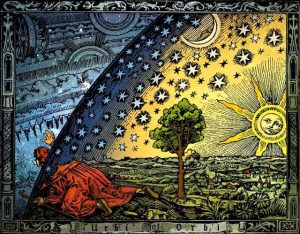 And/or: {something hinted at}: ''Ten thousand is the upper limit in the decimal series. In China,10000 years means immortality, and the 10,000 things are everything that exists. When the Germans speak of the Obere Zehntausend {the upper 10,000} however, thet are referring to an exactly defined social elite....Lately there have been attempts to establish relations between these enormous numbers and those used in modern physics, but nothing concrete has been established. We cannot lose ourselves in such speculations. Humans have tried to solve the mystery of numbers for millennia. As the architect Le Corbusier tells us: 'Behind the WALL, the 'gods' play. They play with numbers of which the Universe is made up.'' [' The Mystery of Numbers' / A. Schimmel].
And/or: {something hinted at}: ''Ten thousand is the upper limit in the decimal series. In China,10000 years means immortality, and the 10,000 things are everything that exists. When the Germans speak of the Obere Zehntausend {the upper 10,000} however, thet are referring to an exactly defined social elite....Lately there have been attempts to establish relations between these enormous numbers and those used in modern physics, but nothing concrete has been established. We cannot lose ourselves in such speculations. Humans have tried to solve the mystery of numbers for millennia. As the architect Le Corbusier tells us: 'Behind the WALL, the 'gods' play. They play with numbers of which the Universe is made up.'' [' The Mystery of Numbers' / A. Schimmel].
'Veil'?
Akashic records and/or Jung's collective unconscious to enlarge.

karnac
A working example: ''Year 2, second month of the inundation, day 15. Horus: Lord of the Two Lands, Two Ladies: Lord of the Two Lands, Gods of Gold: King of Upper and Lower Egypt, Nebtawyra, Son of Ra, Mentuhotep, who lives forever. My majesty sent the prince, mayor of the city, vizier, chief of royal works, royal favourite, Amenemhat, with a troop of 10000 men from the southern nomes of Upper Egypt, and from the {garrisons} of Thebes, in order to bring me a precious block of the pure stone of this mountain, whose excellence was made by Min, for the land of life, who recalls eternity even more than the monuments in the temples of Upper Egypt, as a mission of the king who rules the Two Lands, so as to bring him his hearts desire from the desert lands of his father Min. He made it as his monument to his father Min of Coptos, lord of desert lands, ruler of Bowmen that he may give many {Jubilees} and to live like Ra forever.'' [Off a Stela from Deir el-Medina, depicting the Syrian goddess Qadesh, who became the consort of Min during the eighteen{th} Dynasty / Page 25 'Ancient Egypt' / May-June 2023}.
'Fifty'.
3:1 TO ENLARGE.
"The most common name for a group of monkeys is a troop, while other accepted names for monkey groups are a tribe, a cartload, and a barrel. Generally, a group of monkeys consists of up to 40 members, but the number can vary depending on the species."
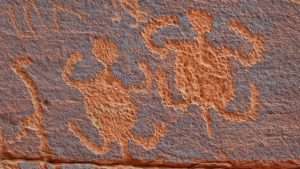
Possible turtle people emerging from a horizontal crack.

Whats the remedy?
And/or: ''Starting around 550BC roughly 10000 Aegean turtle coins were made each year for nearly seventy years. The name {New one?} Aegean is thought to have come from Aegea, mythical Queen of the Amazons, who died at sea. It was the principle world trade coin until the Athenian Owl replaced it in the 5th century BC. Were made in silver {and possibly electrum}. Silver for the coins was taken from the island of Sifnos, eighty miles S/E of the city of Aegina. The turtle ones came before the tortoise ones: 'No one knows why. Nor it it recorded'.... '' ['Pawn Stars' / S15 EP7].
The word ''Carapace'' mentioned: ''Because its the perfect shape for striking coins.''
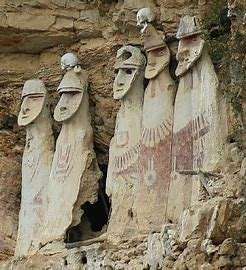
Above or below? 'Flat' Top hats?
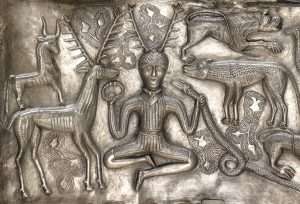
Seated on what?
Continued: ''Her thoughts turned to the Precipice of Injury, the Forests of danger and Tribulation, the great storm during which they had sheltered in the hut. And then the mist - the endless mist, and the awful moment when the path suddenly turned down into the Valley of Loss, and the nightmare abyss of horror into which she had looked when she had thought of turning back. She recalled the descent down into the Valley of Loss and the peace she had found there before re-ascending to the heights in the aerial chairs, and of the days spent in that place where she had been prepared for her burial. Then that last agonising ascent, and the cave where they sheltered from the FLOODS and where she had been tempted to quit {''cast away the promises''}. Then the spring called Marah, and finally the mist-shrouded grave up among the peaks {'clouds of unknowing'?} where she had been bound to the altar {'gravity'?}. How little she had imagined when first she set out on that strange {'peculiar'?} journey, what lay ahead of her and the things she would be called upon to go through.'' [Pages 147/8 'Hinds Feet on High Places' / H. Hurnard].
'Seat of the Soul' to enlarge.
Refresher: ''Not out but through.'' {C. Jung}.
 A working example: 'They broke my heart, and they killed me, but i didn't die. They tried to bury me but they didn't realise i was a seed....To get to the joy, one has to release the pain....'' {'Nothing Compares' / 2022}.
A working example: 'They broke my heart, and they killed me, but i didn't die. They tried to bury me but they didn't realise i was a seed....To get to the joy, one has to release the pain....'' {'Nothing Compares' / 2022}.
'Soul' and 'spirit' as a means...?
The morphing of Mineral/Vegetable/Animal as a means....?
Question. H/V? Which and why?
Understanding those universal {spiritual?} concepts gets us closer to defining such places as Napta Playa and especially Denderah beyond JUST constellational configurations.
Question. Have any coming together of planets been studied within all that research?

Offset or a ''centering within'' ?

'Stamp of the feminine'. Real or symbolic?
REFREHER: "The potential literature for an intellectual study of this is vast. We hope we have provided a few simple pointers on the way. It is however, a 'centering' in, rather than a wandering in the labyrinthine fields of intellectual speculation, that is the direct way of truth. The 'rose' blooms at the center of the cross. And those who are prepared to contemplate the imagery and take it unto their inmost hearts are the more likely to be met by Beatrice from the triumphal car {'chariot'}, and 'led' to places where even the intellectual genius of a Virgil cannot go." [From the book by G. Knight]. Try ''maze''.
Question. How would that be represented by within a landscape? Hebrew equivalent {i.e.,Deuteronomy}: "If you return to your god. If with all your heart and soul you obey his 'voice'. Then he will brink back your captives. Should you have been banished to the very sky's end your god will gather you again - even from there." Recall part 1.
'Great turning at hand'?
Working example: "Overcoming our wrong work leads to the possibility of re-channeling that energy with the help of knowledge and understanding in order to create new 'being'." ['Wisdom of the 4th Way']. Try ''leak''.
And/or: ''The labyrinth is a reflection of the labyrinthine canals of the inner ear that regulate balance on the ground, for to slay the minotaur, or engage with the vitality of life, is to do so in a balanced way, in a way that harmonises the VERTICAL of the quest, the journey for vision, and the HORIZONTAL of the ground {sensation}....Theseus and Ariadne {spirit and soul} together provide the alchemy of relationship necessary to release instictual vitality from its routine existence and ENTRAPMENT at the heart of the labyrinth.'' [Page 198/201/2 'Fruits of the Moon Tree' / A. Bleakley].

Stroking each others ego? Which one feels ''humiliated''#? Working buddies or sweethearts? Should he have gone to specsaves!
Understanding the above defines {or at least gives a very good attempt to} the following... "In order to heal the 'wounded', disorientated soul, it will not do to propose remedies that are crippled in their effectiveness by their implicit presumption that the prison in which the soul is trapped is the whole of reality. But the escape from this 'prison' is not easy. Re-orientation { ''inversion'' link} requires a revolution of consciousness so profound {you can almost hear the music!} that it may well threaten the sanity of the unguided ego {dramatic effect}. The ego must be wholly and painfully transformed in order for the encounter with the 'Angel' to occur {''sun at midnight' link}. Spiritual birth requires the death of the ego. As Jung would have it, 'A victory for the Self is always a defeat for the ego'. " [From the book 'The World Turned Inside Out'. Mentioned elsewhere. All emphasis/parenthesis, this readers].
Remember - objectivity at ALL times. Without it - those dramatic effects may seem real ,i.e.,
 "...the anima appears in 'her' proper positive role - that is, as a mediator between the ego and the self." ['Man and his Symbols' / C. Jung].
"...the anima appears in 'her' proper positive role - that is, as a mediator between the ego and the self." ['Man and his Symbols' / C. Jung].
'On Having No Head: Zen and the Rediscovery of the Obvious' / D. E. Harding.
Side note: Funniest 'put down' in history: Tom Hanks visiting DiCaprio in prison - ''Frank, would you be interested in working for the F.B.I. ?'' DiCaprio: ''I'm going to have to think about it - i've already got a job in here....'' ['Catch Me if You Can' / 2002].
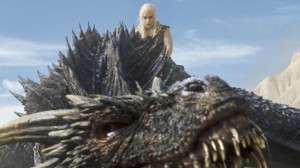
Spirit{M} / Soul{F}?

Gemini.
"In Christian mythology the disciples are symbols of the 'eidolon', or ego. Actually, of course, we are all eidolons, or images of the Christ. In the ancient world the eidolon and Consciousness - the false self and the true Self - were imagined as 'twins'. To make it clear that the disciples Thomas, Judas and Simon Peter are to be understood as eidolon figures, they are all represented as Jesus 'twin' brother. Thomas means 'twin' in Aramaic. In the Book of Thomas the Contender - Jesus; representing Consciousness, instructs his disciple and twin brother 'doubting Thomas', representing the incarnate self, in the path of self knowledge: 'Brother Thomas, while you are in the world for a time, listen to me, and i will reveal to you the things you have been thinking about. Since it has been said that you are my twin and true companion, examine yourself and learn who you are, in what way you exist, and how you will come to be. Since you will be called my brother, it is not fitting that you be ignorant of yourself'. " [From the book by T. Freke and P. Gandy]. Try ''twin''. Gemini?
N.B: Gemini / Taurus {i.e.,northern gate. Southern 'gate' = Sagittarius / Scorpio} as a means...?
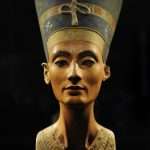
Foreign spirit?
Side note: "As a rule, the specialist's is a purely masculine mind, an intellect to which fecundity is an alien and unnatural process; therefore it is an especially ill adapted tool for receiving and bringing to birth a 'foreign' spirit. But a greater mind bears the stamp of the feminine; to it is a receptive and fruitful womb {'Venus'?} which can reshape what is strange into a familiar form. Wilhelm possessed in the highest degree the rare charism of spiritual motherhood {'Sophia'?}. To it we owe his as yet unequalled ability to make incomparable translations." [Jung on 'The Secret of the Golden Flower' / R. Wilhelm].
Embossed/Debossed?
Grand Gallery/'Kings' Chamber?
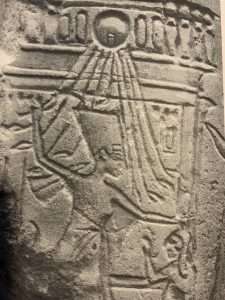
Magdalene to enlarge.
Working example: ''We have briefly met Kiya, the other known wife of Akhenaten, noting that she held a title, Greatly Beloved Wife of the King, that appears never to have been borne by any other individual in Egyptian history. Her origins are wholly unknown, although, like Nefertiti, there have been speculations that she might have been a foreigner....'' [Page 50 'Nefertiti' / A. Dodson].
Question. Which sounds the 'greater' title: The ''beautiful lady has come'' OR ''greatly beloved''?
Landscape equivalent: A 'stamp'' of two triangles can be seen on the left hind part of a headless Sphinx on the east side of the river at Gebel el Silsila. One pointing up the other down. Apex's of both meeting in the middle of the 'whole'. Horizon?
Mother of Dragons?
And/or: ''To plant a life giving seed one has to dig into the earth.'' IN RELATION to the journey Mary and Joseph took on their way to Bethlehem. [ 2nd Week of Advent / Magdala / K. Nickhols / 2021].

'7' and '9' . Opposite ends on the same pole? Whats the common factor?
A working example: ''The story records the 'sacrifice' of foreigners; that an attempt was made upon Heracles, who was a sky god who eventually died by 'fire'; that Heracles reached Egypt from Libya; that Busiris tried to sacrifice this FOREIGNER, but that Heracles 'turned the tables' on him - in which the king himself was sacrificed and finally that this was one of the results of a nine year drought. The nine year period is significant....Hierakonpolis and Heracleopolis is where the 'great place of burning' is found {Companions of Seth + 'goat' link}....The scattering of ashes is a well known rain charm for fertility of the 'fields'...'' [Pages 30-37/81 'The Sky-Religion of Egypt].
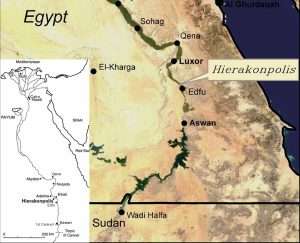
"Hierakonpolis, the City of the Hawk, ancient Egyptian Nekhen, is one of the most important archaeological sites for understanding the foundations of ancient Egyptian society. Best known as the home of the ceremonial Palette of Narmer..."
And/or: "They examined the residues in the Lindow Man's gut, and concluded that, unlike the Danish bog victims, he had eaten a carefully burned portion of unleavened barley bread, not a coarse porridge or cereal....
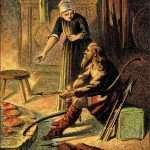
Leavened or UNleavened?
It did not look as if the burning had been caused by careless cooking {ESR analysis}, it seemed rather to be the result of a deliberate and rapid scorching or searing of a particular part of the cake, possibly after baking. It would appear that the 'cake' could only have been touched quickly with something very hot indeed, almost as if it had been branded." {'The Life and death of a Druid Prince' / A. Ross and D. Robins}. 'Echo' / 'Sealed' / 'Stamped' / 'Passover' to enlarge. Question. Whats the difference between barley and wheat?

Heracleopolis: 'Child' of the king and Hercules link.
"The siren heralds a friend - the bee a stranger."
''Truth is stranger than fiction.''

"Its going to be a bloodbath." Did he get one right?
"Wisdom is a flower from which the bee its honey makes and the spider poison, each according to its own nature." [Chapter 2, 'Alchemists Handbook' by F. Albertus]. Link to the word ''chakra'' and/or ''karma''.
Seb Jubilee? {i.e., running/Hoeing the fields}.
Spirt {fire} . Soul {water} as a means....?
Recall bones {ashes?} in fiftysix pits at stone henge.
Glauberg to enlarge.
A working {mindset} example: ''Initiates know that our science, although purely natural and simple, is in no way vulgar; the terms we use, following the masters, are no less so....Thus hoping to enlighten the studious and to divert the blind, the greedy, and the unworthy. Learn, you who already know, that all our purifications, are igneous, that all our purifications are made in fire, by fire, and with fire...These actions described as calcination, because the matter subjected to the flame, yields its impure scorched parts to it....'' [Page 152/385 'The Dwellings of the Philosophers' / Fulcanelli].
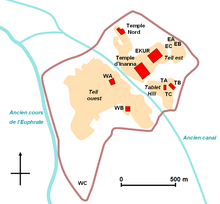
Nippur. In the 'middle' of the city states: ''The only place where Enlil is worshipped...The city of King makers.'' ['Blowing Up History' / S9 EP5]. Hierakonpolis to enlarge.
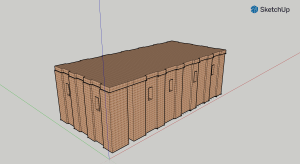
Temple of Enlil. Recall the sarcophagus of Menkaure.
And/or: ''Nippur (Sumerian: Nibru, often logographically recorded as 𒂗𒆤𒆠, EN.LÍLKI, "Enlil City;"[1] Akkadian: Nibbur) was an ancient Sumerian city. It was the special seat of the worship of the Sumerian god Enlil, the "Lord Wind", ruler of the cosmos, subject to An alone. Nippur was located in modern Nuffar in Afak, Al-Qādisiyyah Governorate, Iraq. It is roughly 200 kilometers south of modern Baghdad and about 60 miles southeast of the ancient city of Babylon. Occupation at the site extended back to the Ubaid period (Ubaid 2 - Hajji Muhammed), the Uruk period, and the Jemdet Nasr period. The origin of the ancient name is unknown but different proposals have been made. Nippur was situated on both sides of the Shatt-en-Nil canal, one of the earliest courses of the Euphrates, between the present bed of that river and the Tigris, almost 160 km southeast of Baghdad. It is represented by the great complex of ruin mounds known to the Arabs as Nuffar, written by the earlier explorers Niffer, divided into two main parts by the dry bed of the old Shatt-en-Nil (Arakhat). The highest point of these ruins, a conical hill rising about 30 m above the level of the surrounding plain, northeast of the canal bed, is called by the Arabs Bint el-Amiror "prince's daughter".
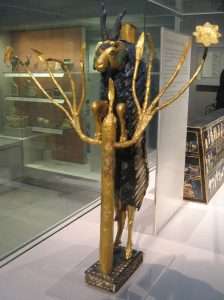
Found at Nippur: ''Ram in a thicket.'' Side note: At the BURNING BUSH: God said to Moses, "I AM WHO I AM. This is what you are to say to the Israelites: `I AM has sent me to you. '" God also said to Moses, "Say to the Israelites, `The LORD, the God of your fathers--the God of Abraham, the God of Isaac and the God of Jacob--has sent me to you.'' Question. Where was Abraham from and what animal is connected to the story of Abraham-Isaac?
Nippur never enjoyed political hegemony in its own right, but its control was crucial, as it was considered capable of conferring the overall "kingship" on monarchs from other city-states. It was distinctively a sacred city, important from the possession of the famous Ekur temple of Enlil. Ninurta, son of Enlil, also had his main cult center, the E-shumesha temple, in the city-state....One of the few instances of Nippur being recorded as having its own ruler comes from a tablet depicting a revolt of several Mesopotamian cities against Naram-Sin, including Nippur under Amar-enlila. The tablet goes on to relate that Naram-Sin defeated these rebel cities in nine battles, and brought them back under his control. The Weidner tablet (ABC 19) suggests that the Akkadian Empire fell as divine retribution, because of Sargon's initiating the transfer of "holy city" status from Nippur to Babylon.''
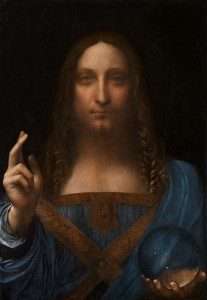 A working example: ''In Northern Georgia's Jackson County along the new River Glen near the banks of the upper Oconee River {S/E America} - were found fiftysix stone mound features. Many had unusual hexagonal shapes, while at least seven resembled animals or other figures i.e., birds. Built along veins of rock quartz AS HAD two other well known stone effigy mounds called Rock Hawk {encircled by a wall} and Rock Eagle - some 50 miles south. Built by Native Americans. Hardwood trees covered the hills where the mounds were located surrounded by cotton fields.'' [Pages 57-60 'Archaeology' / July/August / 2022].
A working example: ''In Northern Georgia's Jackson County along the new River Glen near the banks of the upper Oconee River {S/E America} - were found fiftysix stone mound features. Many had unusual hexagonal shapes, while at least seven resembled animals or other figures i.e., birds. Built along veins of rock quartz AS HAD two other well known stone effigy mounds called Rock Hawk {encircled by a wall} and Rock Eagle - some 50 miles south. Built by Native Americans. Hardwood trees covered the hills where the mounds were located surrounded by cotton fields.'' [Pages 57-60 'Archaeology' / July/August / 2022].
And/or: ''In the woods we often see innumerable heaps of small stones in those places, where according to tradition some of their distinguished people were either killed or buried - till the bones could be GATHERED.'' [same].
Upstream or Downstream?
''Plutarch says that Typhon fled from the battle on an ass for seven days {recall the Jesus chap ''coming into'' somewhere on same animal} and that in the Pythagorean system 'Typhon' was produced in the EVEN number of fiftysix. For 56 happens to be a multiple of 7....In a 19th Dynasty papyrus - one of the periods allotted to Typhonian men is eightyfour years.'' [Pages 80/1 'Sky Religion'].
Recall the the wooden horse of Troy story.


Fire and Ice = 'Flood'. That Great One?
AND/or: "It is said that each form, each scent, is the Middle Way. This speaks of the basis of the Middle Way; the Middle Way itself is the extremes, and is neither extreme nor not extreme. It is all there, nothing lacking - do not stick to words at the expense of completeness, misconstruing the intent of the sage. If you attain this understanding, in the momentary arising of mind in the relation of sense faculties and data, the sense faculties are the repository of the 'eightyfour' thousand teachings, and so are the data.....The identity of the birth-death cycle and nirvana is called the truth of suffering. Each sense datum is trifold {'three' / 'Pyr' link}, each mental state is trifold {'metal of the mind'}. Each datum has 84000 doors of affliction, and so does each mental state. Greed, anger, and folly, too, are none other than enlightenment; this is called the truth of causality....
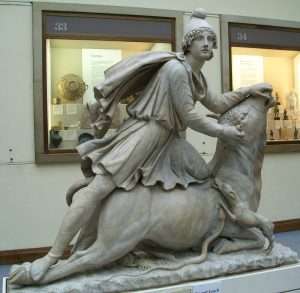
Length in relation to WIDTH: Dog {Sirius i.e., Dog star}. Scorpion {Scorpio}. Snake {Ophiuchus?}. Sirius below Orion. Scorpion - opposite. Snake?
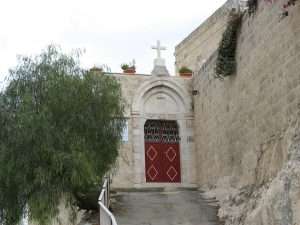
Lozenge?
Overturning each door of affliction is the 84000 doors of concentration, and it is also 84000 doors of specific cures, and it also accomplishes the 84000 ways of transcendence. When ignorance is overturned it transmutes into enlightenment. It is like melting ice into water; it is not something apart and does not come from elsewhere. ALL IS CONTAINED IN A SINGLE MOMENT OF MIND. It is like a wishfilling jewel...." [Pages 35/6 'Stopping and Seeing' / Translated by T. Cleary].
84 divided by 'three' = 28.
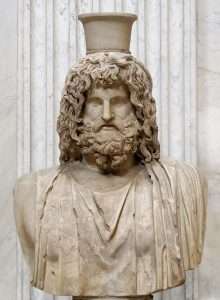
"Head Jar"?
"Twentyeight is much more frequently used in connection with the moon because the four phases are completed once it has wondered through the 28 mansions....From an arithmetical point of view it is a perfect number - it can be seen as the sum of its divisions: 1, 2, 4, 7, and 14. This double significance, known since antiquity, was taken over in later traditions {'grafted'?} - culminating in the idea expressed by Albertus Magnus that the mystical body of Christ in the Eucharist appears in 28 phases....It appears predominantly in religious traditions where SEVEN is central. A monument to Mithras in Siebenburgen, for example, repeats in 4x7 fields - a dagger, a fire altar, a phrygian cap, and a cypress, thus totalling 28 objects connected with the Mithraic cult." [Page 239 'Mystery of Numbers'].
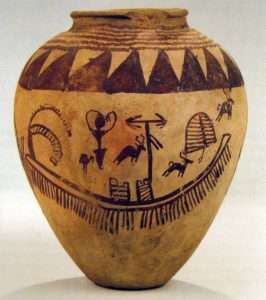
In what direction?
Side note: ''On a clay vase {'fired'} from predynastic era {4000BC} can be seen a broad hipped female figure {'triangular' in form} - with up raised arms surrounded by animals. The boat is decorated with the regional standard of Min {'Lord of the snake stones' i.e., archaic reference to dual signs of upper/lower Egypt} - shaped like a double headed arrow over the cabin {of the 'boat' that they are 'journeying' in}... 56 'tassels' can be seen in the form of the keel from stern to prow {or POOP DECK?}. A gap {'gate'?} can be seen which lines up with the gap of the 'twin' cabin {i.e., in two pieces}. 29 to the rear. 27 to the 'prow'. [Page 83 'Hathor Rising' / A. Roberts].
'Two snakes'?
And/or ''broad hipped'' = 'hippo' link?
'Mooring Post' therefore an anchor point of something?

Any neck?
North wind behind - on their way to the Land of Punt? i.e., border to border {'wet/dry'} REPRESENTED as delta to marshland i.e., 'ladder to hut' as seen in 'Punt' {in the 'Macro' sense of the word i.e., now represented with the female aspect i.e., fat short neck/Thin long neck?}.
Giraffe?
Turtle mentioned/seen - S/E corner. Enlarged elsewhere.

'Fat or thin'?
''The spells or 'utterances', of the pyramid texts are primary concerned with protecting the pharaoh's remains {'GROUNDING'?}, reanimating his body after death, and helping him to ascend to the heavens, which are the emphasis of the afterlife during the Old Kingdom. The 'Spells' delineate all the ways the pharaoh could travel, including the use of ramps, stairs, ladders, and most importantly 'flying'....They were first discovered in 1881 by Gaston Maspero....The oldest version consists of 228 Spells and comes from the Pyramid of Unas who was the last king of the 5th Dynasty'' ['The Pyramid Texts' / W. Budge].
Side note: In the swamp on Oak Island is found a ramp {a foot below sea level} that connects the 'paved' area with the stone {'cobbled'?} path {S/E corner}, i.e., above sea level. {'The Curse of Oak Island' / S10 EP19}.
Wet / Dry.
A wooden platform {'pedestal'?} found at the northern end of the swamp close to the cobbled area. {'The Curse of Oak Island' / S12 EP8}.

"Blue-lidded lady of the dawn, carrier of her fathers wisdom, let this old one rest in your arms." [Day seven: The Temple of Hathor at Denderah' from the book 'Invoking the Scribes of Ancient Egypt'].
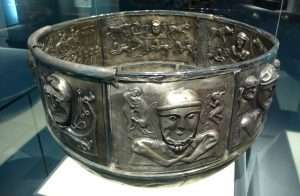 Perhaps Queen Tawosret ruled in his place. I walked slowly beneath the gaze of Maat. Mine own arms outstretched like her wings as i try to feel the energy of this place. This place feels familiar. I crave to remember all that i have forgotten....The dry, sere landscape of rocks and sand lies in a small valley between the Theban Hills, dominated by the pyramid shaped mountain. Ancient Egyptians called Ta Dehent, indicating the top of the forehead or the third eye. Modern Egyptians have named it Al Qurn, the horn....Egypt is a kiln used in the process of becoming a cauldron of possibilities for all....We enter the tomb of Tawosret and Siptah, as one, in silence. The tomb had been destroyed in 1977 by rains {'floods'?} and now was restored.... At the entrance, we are greeted by Maat, her wings folded in prayer. As we descend the wooden plank stairs, we pass a processional of gods and goddesses on the right wall. The dead would have to name each god and give an account of their lives as they pass to the judgement hall....A large stone sarcophagus stands in the center of the room at the end of a ramp. We flash lights under the LID and see the night sky of the goddess Nut painted on the inside lid {songs/prayers}....Light returns. We turn and walk up the ramp beneath a stone archway past the gods to the light. In the blazing sun a piece of stone with the eye of Horus is found underfoot." [Pages 200-207 'Invoking the Scribes of Ancient Egypt'].
Perhaps Queen Tawosret ruled in his place. I walked slowly beneath the gaze of Maat. Mine own arms outstretched like her wings as i try to feel the energy of this place. This place feels familiar. I crave to remember all that i have forgotten....The dry, sere landscape of rocks and sand lies in a small valley between the Theban Hills, dominated by the pyramid shaped mountain. Ancient Egyptians called Ta Dehent, indicating the top of the forehead or the third eye. Modern Egyptians have named it Al Qurn, the horn....Egypt is a kiln used in the process of becoming a cauldron of possibilities for all....We enter the tomb of Tawosret and Siptah, as one, in silence. The tomb had been destroyed in 1977 by rains {'floods'?} and now was restored.... At the entrance, we are greeted by Maat, her wings folded in prayer. As we descend the wooden plank stairs, we pass a processional of gods and goddesses on the right wall. The dead would have to name each god and give an account of their lives as they pass to the judgement hall....A large stone sarcophagus stands in the center of the room at the end of a ramp. We flash lights under the LID and see the night sky of the goddess Nut painted on the inside lid {songs/prayers}....Light returns. We turn and walk up the ramp beneath a stone archway past the gods to the light. In the blazing sun a piece of stone with the eye of Horus is found underfoot." [Pages 200-207 'Invoking the Scribes of Ancient Egypt'].

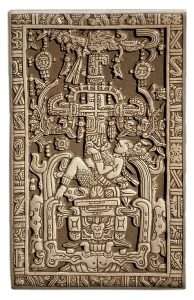 Question. Did Tut have a lame foot?
Question. Did Tut have a lame foot?
Who else?
And/or: A Celtic woman buried beneath a massive stone tumulus {slightly 'oval' in shape}, along the River Seine at a site known as Vix {Mont Lassois}, in the Burgundy region of central France. Laid on a wagon whose wheels had been removed and propped up {'stacked'?} against the tombs eastern wall....Around her neck a gold torc with globe shaped terminals at both ends, each decorated with a lion's foot and the winged horse Pegasus. In the grave objects including a five foot tall Greek bronze krater used for mixing wine and water. Vessel's surface decorated with warriors in horse drawn chariots, its handles with Gorgon's heads and the top of its lid with the figure of a woman.''
Turquoise was said to protect warriors, especially on horseback. Especially from falling off horses. In Egypt it meant "joy in the light." ['Pawn Stars' S20 EP10].

'Spirit' or 'Soul'?
 Side note: ''The word tumulus is Latin for 'mound' or 'small hill', which is derived from the Proto-Indo-European root *teuh2- with extended zero grade *tum-, 'to bulge, swell' also found in tomb, tumor, tumescent, thumb, thigh, and thousand.''
Side note: ''The word tumulus is Latin for 'mound' or 'small hill', which is derived from the Proto-Indo-European root *teuh2- with extended zero grade *tum-, 'to bulge, swell' also found in tomb, tumor, tumescent, thumb, thigh, and thousand.''
Thumb/Thigh to enlarge.
Refresher: "In ancient Egypt, the sign of the lotus flower meant 1000 and that of the boat, 10000. " ['Mystery of Numbers' from the chapter 'Ten' - what the author defines as 'Completeness and Perfection'].
A work in progress: The hauntingly beautiful festival of Toro Nagashi (literally, “floating lanterns”) is one of the major events in Japan’s yearly calendar. Each August, thousands of Japanese lanterns are floated on rivers, traditionally to celebrate the end of O-bon, a Buddhist festival. Here’s the low-down on the lantern festival’s history and how to take part as a visitor to Japan.
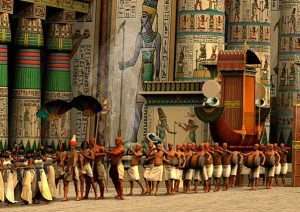
float?

Senusret II was the fourth pharaoh of the Twelfth Dynasty of Egypt who ordered for the construction of the Pyramid of Lahun before his death. Known as the 'floating' pyramid. The ancient ruler took a great deal of interest in the Faiyum oasis region and began work on an extensive irrigation system from Bahr Yussef through to Lake Moeris in Middle Egypt.
For three days in late August each year, Toro Nagashi sees thousands of Japanese lanterns set afloat at dusk to commemorate the souls of the dead. The resulting scene is a spectacular play of light and dark as the lanterns’ glow slowly fades into the distance.
In terms of the most observed celebrations in Japan, Toro Nagashi is second only to New Year’s Eve.
Toro Nagashi is often referred to by the alternative name of the Festival of Recovery, which ties into the sad origins of the custom. It was first held in 1946 as a way to commemorate the lives lost in the US bombings of Tokyo and other Japanese cities during World War II. This is why you’ll find bigger public Toro Nagashi festivals at places such as Hiroshima, where 10,000 lanterns are set afloat. In Tokyo, the Asakusa celebration, held on the Sumida River, commemorates those lost to the Great Kanto Earthquake of 1923.
Atlantis to enlarge.
Side note: Ashtāpada (Sanskrit: अष्टापद) or Ashtapadi is an Indian board game which predates chess and was mentioned on the list of games that Gautama Buddha would not play. Chaturanga, which could be played on the same board, appeared sometime around the 6th century in India; it could be played by two to four participants.
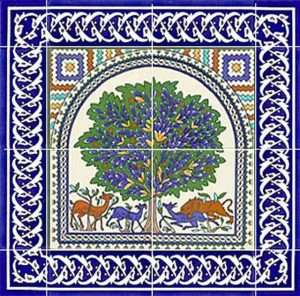
"Clearly the attainment spells the eclipse of the Dragon. Where light shines no darkness can there abide. For being the basis of the instinctual life, harnessed and chained to the needs and clearly perceived ideals of the psyche, the dragon shuns the sunbeams and the daylight. No longer do its projections and compulsive automatisms haunt the light of consciousness. No longer is the personality tortured as by some foul and evil presence. Its needs and dictates, once so imperious, cease their urgency, finding their proper place within the natural economy." Dappled?
AND/OR: According to Stewart Culin, chaturanga was first described in the Hindu text Bhavishya Purana.[9] The Bhavishya Purana is known to include modern additions and interpolations, however, even mentioning British rule of India.....An early reference to an ancient Indian board game is sometimes attributed to Subandhu in his Vasavadatta, dated between the 5th and 7th centuries AD: The time of the rains played its game with frogs for pieces [nayadyutair] yellow and green in colour, as if mottled by lac, leapt up on the black field squares. The colours are not those of the two camps, but mean that the frogs have two colours, yellow and green.

Chariot?
Chaturanga may also have much older roots, dating back 5000 years. Archeological remains from 2000 to 3000 BC have been found from the city of Lothal (of the Indus Valley Civilisation) of pieces on a board that resemble chess.[2] Another argument that chaturanga is much older is the fact that the chariot is the most powerful piece on the board, although chariots appear to have been obsolete in warfare for at least five or six centuries, superseded by light and heavy cavalries.[citation needed] The counter-argument is that they remained prominent in literature and continued to be used for travel and transport, in processions, for games, and in races.
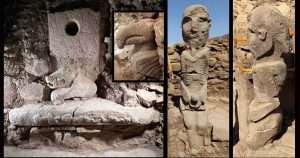
Karahan Tepe: 'Eight' fingers. 'Giant' to enlarge.
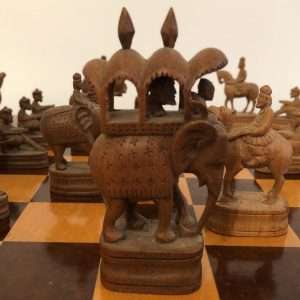
Carrying one?
Continued: Owen’s genius was not that he focused on what made the various skeletons different. What he found, and later promoted in a series of lectures and volumes, were exceptional similarities among creatures as different as frogs and people. All creatures with limbs, whether those limbs are wings, flippers, or hands, have a common design. One bone, the humerus in the arm or the femur in the leg, articulates with two bones, which attach to a series of small blobs, which connect with the fingers or toes. This pattern underlies the architecture of all limbs. Want to make a bat wing? Make the fingers really long. Make a horse? Elongate the middle fingers and toes and reduce and lose the outer ones. How about a frog leg? Elongate the bones of the leg and fuse several of them together. The differences between creatures lie in differences in the shapes and sizes of the bones and the numbers of blobs, fingers, and toes. Despite radical changes in what limbs do and what they look like, this underlying blueprint is always present....

Buddha's hand.

The hand of Sabazios. Thumb = pinecone?
What is it about the hand that seems quintessentially human? The answer must, at some level, be that the hand is a visible connection between us; it is a signature for who we are and what we can attain. Our ability to grasp, to build, and to make our thoughts real lies inside this complex of bones, nerves, and vessels. The immediate thing that strikes you when you see the inside of the hand is its compactness. The ball of your thumb, the thenar eminence, contains four different muscles. Twiddle your thumb and tilt your hand: ten different muscles and at least six different bones work in unison. Inside the wrist are at least eight small bones that move against one another. Bend your wrist, and you are using a number of muscles that begin in your forearm, extending into tendons as they travel down your arm to end at your hand. Even the simplest motion involves a complex interplay among many parts packed in a small space....The relationship between complexity and humanity within our hands has long fascinated scientists. In 1822, the eminent Scottish surgeon Sir Charles Bell wrote the classic book on the anatomy of hands. The title says it all: The Hand , Its Mechanism and Vital Endowments as Evincing Design. To Bell, the structure of the hand was “perfect” because it was complex and ideally arranged for the way we live. In his eye, this designed perfection could only have a divine origin.
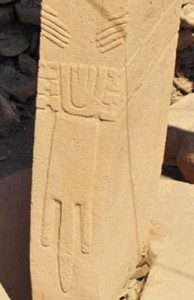 But this conflict avoidance meant something much deeper to us. We can trace many of the structures of our own limbs to the fins of these fish. Bend your wrist back and forth. Open and close your hand. When you do this, you are using joints that first appeared in the fins of fish like Tiktaalik. Earlier, these joints did not exist. Later, we find them in limbs.....The important, and often surprising, fact is that most of the major bones humans use to walk, throw, or grasp first appear in animals tens to hundreds of millions of years before. ['Your Inner Fish' / N. Shubin].
But this conflict avoidance meant something much deeper to us. We can trace many of the structures of our own limbs to the fins of these fish. Bend your wrist back and forth. Open and close your hand. When you do this, you are using joints that first appeared in the fins of fish like Tiktaalik. Earlier, these joints did not exist. Later, we find them in limbs.....The important, and often surprising, fact is that most of the major bones humans use to walk, throw, or grasp first appear in animals tens to hundreds of millions of years before. ['Your Inner Fish' / N. Shubin].
A work in progress: "In preparation for this momentous transformation in the life of the community {Orkneys}, a series of interesting deposits were laid out on the uppermost floor of the interior. These included whole or large parts of animal carcasses, probably the remains of feasting events to mark the occasion. Whole pots were laid on the floor and smashed in situ. We now know, through the wonders of modern DNA analysis, that a large fin whale, presumably having stranded itself on a nearby beach, was also distributed across the last surface of the broch, as well as its lower infill."
Night or Day journey?
Night journey or Underworld?
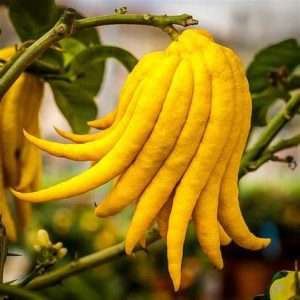
Citrus medica var. sarcodactylis, or the fingered citron, is an unusually-shaped citron variety whose fruit is segmented into finger-like sections, resembling those seen on representations of the Buddha. It is called Buddha's hand in many languages including English, Chinese, Japanese, Korean, Vietnamese, and French.
And/or: "In Greek mythology, Glaucus (/ˈɡlɔːkəs/; Ancient Greek: Γλαῦκος, romanized: Glaûkos, lit. 'glimmering') was a Greek prophetic sea-god, born mortal and turned immortal upon eating a magical herb. It was believed that he came to the rescue of sailors and fishermen in storms, having earlier earned a living from the sea himself.
The story of Glaucus's apotheosis was dealt with in detail by Ovid in Metamorphoses and briefly referenced by many other authors.[7][8][9][10][11][12] According to Ovid, Glaucus began his life as a mortal fisherman living in the Boeotian city of Anthedon.[13] He found a magical herb which could bring the fish he caught back to life, and decided to try eating it. The herb made him immortal, but also caused him to grow fins instead of arms and a fish's tail instead of legs (though some versions say he simply became a merman-like being),[14] forcing him to dwell forever in the sea. Glaucus was initially upset by this side-effect, but Oceanus and Tethys received him well and he was quickly accepted among the deities of the sea, learning from them the art of prophecy.
John Tzetzes adds to the above story that Glaucus became "immortal, but not immune to aging"....Alexander of Aetolia, cited in Athenaeus, related that the magical herb grew on the island Thrinacia sacred to Helios and served as a remedy against fatigue for the sun god's horses. Aeschrion of Samos informed that it was known as the "dog's-tooth" and was believed to have been sown by Cronus.[6]

'She who loves silence'.
According to Ovid and Hyginus, Glaucus fell in love with the beautiful nymph Scylla and wanted her for his wife, but she was appalled by his fish-like features and fled onto land when he tried to approach her. He asked the witch Circe for a potion to make Scylla fall in love with him, but Circe fell in love with him instead. She tried to win his heart with her most passionate and loving words, telling him to scorn Scylla and stay with her. But he replied that trees would grow on the ocean floor and seaweed would grow on the highest mountain before he would stop loving Scylla. In her anger, Circe poisoned the pool where Scylla bathed, transforming her into a terrible monster with twelve feet and six heads."[20][21]

"Sirius is the brightest star of the constellation Canis Major, the "Greater Dog," in Latin. According to Burnham's Celestial Handbook other names for it include "The Sparkling One" or "The Scorching One." Question. Roasting or boiling?
Side note: ''Each tongue has its particular cadence, rhythm and tone, and finds a natural partner in one musical form or another. German is a march. Italian carries the thrills of baroque chamber music. The Irish language, when i first overhear it in a pub in western Ireland, reaches my ears like an old hymnal, its chordal twang ancient and elegiac....It leaves me feeling, in the words of Irish writer Maurice O'Sullivan: 'Like a dog listening to music.'.....The Gaeltacht regions, or An Ghaeltacht, are the root from which the shamrock has bloomed....In the western part of the country {especially the western coast} the native language connects to Gaelic culture.''
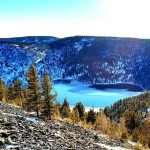
Burkhan Khaldun.
''Dingle Peninsula, a finger of land sticking out into the Atlantic...I ask what phrase will best serve me during my time in Ireland....'mile buiochas' is the reply - {a thousand thanks}. When i tell someone of my plans to hike out to the most western point of the peninsula i am told: 'That the whales are in, so keep a good lookout. The waters like a sheet of GLASS.'' ['Readers Digest' / November 2023].
'Logos' / 'Theme' / to enlarge.
''Shamrock'' for a deeper read. A possible ancestral one.
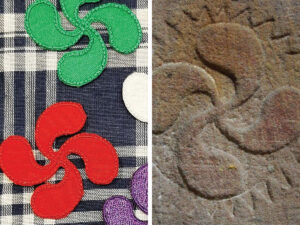
The lauburu (from Basque lau, "four" + buru, "head") is an ancient hooked cross with four comma-shaped heads and the most widely known traditional symbol of the Basque Country and the Basque people.[1] In the past, it has also been associated with the Galicians, Illyrians and Asturians. [citation needed]
A variant of lauburu consisting of geometrically curved lines can be constructed with a compass and straightedge, beginning with the formation of a square template; each head can be drawn from a neighboring vertex of this template with two compass settings, with one radius half the length of the other.
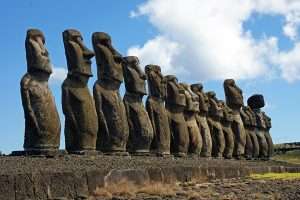
Built from volcanic ash - in the horizontal. 'Walked' to their final 'resting place' - in the vertical. 'Seven' look inward? Large 'ANCHOR' seen on the island. Delos to enlarge.
Continued: ''Valley of Ten Thousand Smokes, volcanic region, southern Alaska, U.S., 265 miles (425 km) southwest of Anchorage. The valley was created in 1912 by the eruption of the Novarupta and Mount Katmai volcanoes. ...Heat trapped in the ash took decades to cool. Any water buried by the ash or that percolated into it flashed into steam. The vents where the superheated steam emerged became the fumaroles that inspired the name Valley of Ten Thousand Smokes.''
And/or {from a different perspective}: ''The ring cannot be destroyed by any craft that we here possess. The ring was made in the fires of Mount Doom, only there can it be unmade. It must be taken deep into Mordor, and cast back into the fiery chasm from which it came. One of you must do this....

Wedding ring?
One does not simply walk into Mordor. Its black gates are guarded by more than just Orc's. There is evil there that does not sleep. And the great eye is ever watchful. It is a barren wasteland riddled with fire, ash and dust. The very air you breath is a poisonous fume. Not with 10000 men could you do this....
I will take it. I will take the ring to Mordor'', speaks out Frodo Baggins. {'The Lord of the Rings: The Fellowship of the Ring' / JRR Tolkien}.

90 V 180?
'Ishon' to enlarge.
Question. How many men accompanied the body of Genghis Khan to his final resting place?
Continued: ''The Vix tomb is one of two burials of elite women discovered in the Seine Valley...Very similiar to each other even though 100 years apart. Both women buried on top of a wagon {with bronze nails and bronze hooks}, upon which they were likely conveyed during funeral processions. Walls may have been covered in fabrics {'garment' link?}.....Vix mound 130' at its broad{est} point. Front of tomb most likely N/W. Excavated there and found a stone facade and a ramp leading up to the entrance. On one side of this entryway, was identified a rectangular stone podium that MAY have served as an altar or base for a statue of the deceased or ancestors.'' [Page 39/40 'Archaeology' / July-August 2023].
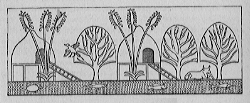
'Reed' huts? Pavilion?
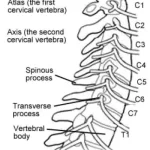
Atlas = ''the first cervical vertebrae.''
And/or: ''An Ibu or embalming tent {from the 'middle' of a scene in a funeral procession}...a temporary tent {'pavilion'?} made for the deceased. For 'purification' purposes. The word ''Ibu'' made up from the reed leaf for ''eeh'', then the leg for the ''b'' sound. Then the quail chick for the ''ooh''. Whats so striking about the ibu is its shape. A 'rectangular' structure {''double?''} with a ramp in the MIDDLE {'gap'?} - and the two equal rooms on each side. Which coincides with the structure now found around shaft 24 at Saqqara {southern end?}.''
'The Reed of God' / C. Houselander.
When the Israelites fled Egypt, after over four hundred years of slavery, they spent forty years wandering in the wilderness before they entered the Promised Land. During this time, God provided substance for them to eat every day in the form of quail (meat) and manna (Exodus 16).
Side note: "The common quail (Coturnix coturnix), or European quail, is a small ground-nesting game bird in the pheasant family Phasianidae. It is mainly migratory, breeding in the western Palearctic and wintering in Africa and southern India.

Metal of the mind.
With its characteristic call of three repeated chirps (repeated three times in quick succession), this species of quail is more often heard than seen. It is widespread in Europe and North Africa, and is categorised by the IUCN as "least concern". It should not be confused with the Japanese quail (Coturnix japonica), native to Asia, which, although visually similar, has a call that is very distinct from that of the common quail. Like the Japanese quail, common quails are sometimes kept as poultry.... This is a terrestrial species, feeding on seeds and insects on the ground. It is notoriously difficult to see, keeping hidden in crops, and reluctant to fly, preferring to creep away instead. Even when flushed, it keeps low and soon drops back into cover. Often the only indication of its presence is the distinctive "wet-my-lips" repetitive song of the male. The call is uttered mostly in the mornings, evenings and sometimes at night. It is a strongly migratory bird, unlike most game birds. The common quail has been introduced onto the island of Mauritius on several occasions but has failed to establish itself and is now probably extinct....
This is a terrestrial species, feeding on seeds and insects on the ground. It is notoriously difficult to see, keeping hidden in crops, and reluctant to fly, preferring to creep away instead. Even when flushed, it keeps low and soon drops back into cover. Often the only indication of its presence is the distinctive "wet-my-lips" repetitive song of the male. The call is uttered mostly in the mornings, evenings and sometimes at night. It is a strongly migratory bird, unlike most game birds. The common quail has been introduced onto the island of Mauritius on several occasions but has failed to establish itself and is now probably extinct....
Males generally arrive in the breeding area before the females. In northern Europe laying begins from the middle of May, and with repeat laying can continue to the end of August. The female forms a shallow scrape in the ground 7–13.5 cm (2+3⁄4–5+1⁄4 in) in diameter which is sparsely lined with vegetation. The eggs are laid at 24-hour {'twentyfour'} intervals to form a clutch of between 8 and 13 eggs. These have an off-white to creamy yellow background with dark brown spots or blotches."

Twice as broad as long? Birket Habu?
Continued: What the narrator {Ramadan Hussein} does not explain is the symbol next, close to the 'ramp' - an 'altar' type form - which would fit in with the two extra canopic jars found next to the most S/E sarcophagus at the base of shaft 'twentyfour' belonging to the mother of an occupant on the 'west' side {Didi Bastet}. One a jackal headed jar the other falcon {lower/higher} - in relation to that S/E position. Cedar oil found to be used instead of the usual myrrh. Vertical in relation to horizontal. Horizontal cedar BEAMS in relation to Holy oil {'vertical'}. ['Kingdom of Mummies' / 2020 / S.1 EP.1].
Top/down V Bottom/up. Which and why?
''Whose height is like that of cedar trees'' [Amos ii9].
'Beams' of cedar used throughout, especially in the Old Kingdom, but more often than not in the HORIZONTAL position. With that height 'in mind' i.e., the next cycle.
Just as Djoser's tunnels of limestone were purposely 'dressed' on the INSIDE - but no curves - all right angles/straight lines. But 'across the way' {'Ibu' link?} - begins the Serapeum. Apis 'bulls' within their own 'weighty' sarcophagus. Rough internal walls but smooth ARCHWAYS.
King Djoser within his own heavy granite 'tomb' can see above him the patterned sky - a blue one - with FIVE POINTED stars.
'Five' and ''pattern'' to enlarge. ''Hung'' to enlarge.
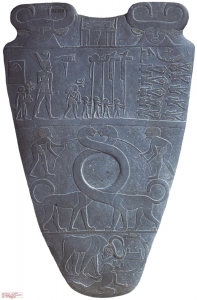 TENT in the 'Wilderness' years? i.e., a different take on the same THEME i.e., funeral procession {'leg' link?} HEADING for the 'promised land' {'death/rebirth'}. Middle of the journey = Mount Sinai Peninsula {'ramp'?}. Resurrection = 'crossing over to the other side' {i.e., what are the meanings of the symbols of its 'twin' compartment} . ''Purification'' = water element. ''Incense'' = 'Cloud of Unknowing'? Most of which can be gotten from what that ''peninsula'' represents. 'Lead'' also mentioned in the same program. 'Lead into gold'? Internal/ external which is the reason that to do it properly {ritually correct} it has to be done in the 'bowels' of the earth {the underworld}. That process of death/rebirth is an INTERNAL one.
TENT in the 'Wilderness' years? i.e., a different take on the same THEME i.e., funeral procession {'leg' link?} HEADING for the 'promised land' {'death/rebirth'}. Middle of the journey = Mount Sinai Peninsula {'ramp'?}. Resurrection = 'crossing over to the other side' {i.e., what are the meanings of the symbols of its 'twin' compartment} . ''Purification'' = water element. ''Incense'' = 'Cloud of Unknowing'? Most of which can be gotten from what that ''peninsula'' represents. 'Lead'' also mentioned in the same program. 'Lead into gold'? Internal/ external which is the reason that to do it properly {ritually correct} it has to be done in the 'bowels' of the earth {the underworld}. That process of death/rebirth is an INTERNAL one.
'Clouds by day and 'fire' by night'. Question. Was it therefore carried out at night { 'underground'}, but 'salted' during the day?
Seti 1st to ENLARGE.
Question. A 'foot' print in the bottom of K 24. Toehold? Big or little 'toe' Mother? S/E? All as a means.....
Any ''sandals'' Golden ones? {see Tutankhamun}.
Question 2 . Left or right foot? 'Turn around'? i.e., the return jouney as anyone knows who studies this subject is UPSTREAM NOT DOWNSTREAM!
Side note: ''A full summer moon graced the city sky. This was the salmon moon...which for the Native Americans and Celts, was a symbol of the soul's capacity for divine questing and transformation. And this was the moon when the salmon made their ancient upstream journey of death and rebirth.'' [Page 225 'The Book of Shadows'].
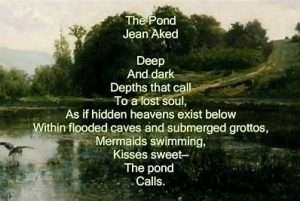
Lozenge?
''I am the wind that blows across the sea; I am the wave of the deep; I am the roar of the ocean; I am the stag of seven battles; I am the hawk on the cliff; I am the ray of sunlight; I am the greenest of plants; I am a wild boar; I am a salmon in a river; I am a lake on a plain; I am the word of knowledge; I am the point of a spear; I am the lure beyond the ends of the earth; I can shift my shape like a god.'' ['The Song of Amergin' / Ancient Irish Text].
Duration 'Six' minutes.

''stretched''?
A working example: ''The master of the house said to me: 'You have stretched your neck upward and attempted to see what is done. The brazen man is the priest who sacrifices and is sacrificed and spews forth his own flesh. Power is given to him and this water and over the people who are punished'. At last i was overcome with the desire to mount the seven steps and to see the seven punishments, and, as was suitable, in a single day; so i went back in order to complete the ascent. Passing it several times i at length came upon the path. But as i was about to ascend i lost my way again....discouraged i fell asleep....saw a barber in a robe of royal purple who stood outside the place of punishments. I followed him to the place ....He entered and was consumed by fire....I understood this to be the barber as the brazen man....Further on he meets ''an old man whitened by years,'' {Agathodaimon the leaden man}, who asks: ''Why are you stretched out''....who later on ''changes'' from lead to silver to gold. And/or ''Meridian of the Cinnabar'' in relation to the ''fourth step'' and ''from the east a person with a sword and a person behind ''clad in white and comely to see who was named Meridian of the Sun.'' All of which ''concerns the liquids in the art of the metals... a procedure called embalming'' [Page 61-64 ''Alchemical Studies'].
And/or: ''There are seven step pyramids that are attributed to either Huni - the last king of the 3rd Dynasty - or Sneferu - the first king of the 4th Dynasty. Located in different provinces in Egypt, from Seila near the Faiyoun in the North to Elephantine in the South. All stand alone. None have entrances, internal CORRIDORS, or chambers. Could not therefore have been tomb locations.'' [Page 96 'Shamanic Wisdom in the Pyramid Texts' / J. Naydler].
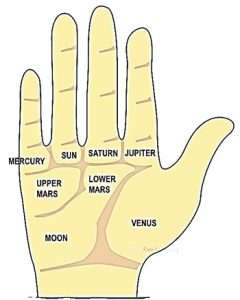
''The little finger is sometimes referred to as a pinky.''
And/or: ''It was called the floating pyramid - because it was surrounded by water. Butterfly {copper?} connectors between each block, with the pharaohs cartouche made the edifice secure. Socket joints at the base did the same for the foundation {'anchored'?}. Senusret built the first dam in the Faiyum {Fayoum}. Chapels found east and north but no entrance into the pyramid. Entrance found - by way of a deep shaft - on its south side {ALL others have north at the entry point}. Burial chamber made of pink granite from Aswan. A solid gold wadjet snake found with blue head. ['Blowing Up History' S5 EP9].

'Head to toe'?
Continued: ''....The body of the mummy was declared divine - every part of its flesh taken into the spiritual body of Osiris-Re and made holy. Such divine recognitions include: 'His breast is the Becoming One' {Khepri}, 'His breast is Opener of the Ways', 'His Two feet are he who Passes Through the Mysteries', 'His Toes are the Two Cobras' ...'' [Page 204/5 'Imagining the World Into Existence' / N. Ellis].
Abraxas?
Khufu to enlarge.
Side step: Understanding that helps in defining : "Of course i have scarcely touched upon the question which must be asked by anyone who makes himself familiar with the esotericism of San Miniato al Monte. Who built the church, and for what reason?...They were well aware of the role which Florence {'Aries' link} would play in the destiny of Europe. [P. 95/6. 'The Secret Zodiac' / F. Gettings]. Try ''Saturn'' and/or Khufu.
And/or: "This fish {in relation to his Taurus/ Pisces hypothesis} which was not originally a fish but some sort of crocodile." Try ''crocodile''.
Capricorn to enlarge.
Side note: That very ancient constellation symbol {Pisces?} with a fish in a {goats?} mouth? Enlarged elsewhere.
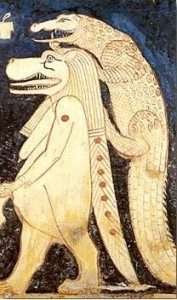
Try 'Uas' to enlarge. {Part 4:5}.
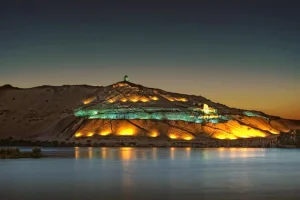
The tomb of Hirjuf is located at Qubbet el-Hawa, also known as the Valley of the Princes, a rocky location across Aswan. There are tombs from the Middle and New Empires as well as the Old Empire, which offer valuable insights into the lives of prominent officials.
The Dome of the Wind is a rocky mountain with a height of about 130 m. It is located on the west bank of the Nile near Aswan. The reason for the popularity of this mountain is that it contains tombs of priests, nobles, and governors of Aswan throughout the different ages, such as: The era of the Old Kingdom (Sixth Dynasty).
The Middle Kingdom (for the Twelfth Dynasty).
They also recently discovered tombs belonging to the modern state and the late era.
The reason for naming the air dome by this name
There is a tomb on the southern summit of the mountain belonging to one of the righteous saints and he is called “Sidi Ali Abu Al-Hawa”. It is a different and distinctive tomb, as its dome is painted white, and it is prominent so that you can see it from afar. The tomb is also distinguished by the fact that it was built on the ruins of a Coptic monastery (St. George). Tomb of Sidi Ali Abu Al-Hawa. AND/OR: "The name is derived from the dome of the tomb of an Islamic sheikh, but archaeologically, it is usually understood as referring to the site of the tombs of the officials lined up on artificial terraces below the summit of the Nile bank upon which the Islamic tomb stands." 'Assembly' to enlarge.
As ONE example: "The three 'divinities' of the Cycle Triad {that number 'three' again} - have a transcendental connection to cosmic epochs as well as natural cycles on earth. Hapi: the waterways of the Nile in Egypt - and the Milky Way in the heavens - dividing the shores and the E/W of the sky. Taurt {Hippo} contains and distributes the recurring manifestation {i.e., as a known value} - of vital force in nature, and also maintains the cyclic rhythm of great ages foretold by the shift of polestars, in her role as keeper of the ''mooring post'' in the northern heavens {S/N}. At the same time, Apep {Crocodile} expedites ''involution'', the decline of the spirit BACK into matter. In the sky, he heralds {'oracle' link?} the descent of darkness in storms {whirlwinds?} and the appearance of comets." [Page 110 from the book by R. Clark].
All {including 'comets'} as a means...?
'Folds of Nature'.
Question. Above {of?} / Below {in?} the Horizon? In the Macro sense of the word. And/or: Above/below the 'waistline' {navel?} in the Micro sense of the word {logos?} = ''Heart'' of Eagle / ''Thigh'' of Ox?
Recall Dionysus 'start' point. His relationship with Ariadne. 'See' it all in the inner sense of the word, i.e., in relation to that universal ''bit''.
Understanding that one paragraph gives clues to understanding the overall subject as a whole {mind set?} - which such authors as Hancock and Collins are still in the 'dark' about.
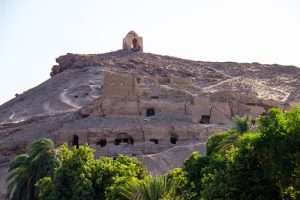
Qubbet el-Hawa or "Dome of the Wind" is a site on the western bank of the Nile, opposite Aswan, that serves as the resting place of ancient nobles and priests from the Old and Middle Kingdoms of ancient Egypt.[1] The necropolis in use from the Fourth Dynasty of Egypt until the Roman Period. The site was inscribed on the UNESCO World Heritage List in 1979 along with other examples of Upper Egyptian architecture, as part of the "Nubian Monuments from Abu Simbel to Philae" (despite Qubbet el-Hawa being neither Nubian, nor between Abu Simbel and Philae). AND/OR: Ten Ancient crocodiles found 'side by side'. Two different species. West and Nile crocs {east}. Wrapped in linen. 'Twisted' rope found. Surrounded by rock {stone} structures that are "part of a bigger complex." Not mummified {no resin present} - therefore naturally embalmed. All found in 'Tombs of the Nobles' the layout of which very similar to Tutankhamun. Found in the 'lower' terrace which unlike the higher ones are of more lavish {"involution?"}. Had 'twentyfive' hatchlings on its back. [ 'Secrets in the Sand' / S1 EP2].
All the above para. in relation too: 'The Vision of Ezekiel' and that link to the Merkabah {''chariot''}. Hippo in relation to Hayyot. Croc. in relation to Ofannim. ''Man'' above it in relation to 'Throne', i.e.,''as the appearance of a sapphire stone, the likeness of a throne'' AND ''the likeness of the appearance of man above it.'' {ver.26}. Try ''whiteness'' to 'see' something further.
'FOLDS OF NATURE'.
Continued: Put the two together in relation to: "Had any other axis than the Cancer/Capricorn been selected then, Taurus would not have been directed towards sunrise nor towards that stellium of 1207. That is perhaps a sufficient argument for the orientation of the zodiac on the Cancer/Capricorn axis {i.e.,N/S} of the basilica." [Page 95. 'The Secret Zodiac'].
''Saturn 'rules' Capricorn. The Moon - Cancer''. Same book.
And/or: "There are other related associations - for example- Capricorn has rule over the skeleton system - but we need not consider these at this point." Try ''bones'' to 'see' something from that universal {mind set} point of view. Hence the final statement...
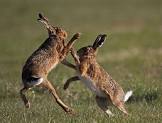
'Mad' march hare?
"To stop short at such associations , is to miss the whole tendency of mediaeval thought,, which is towards allegorizing - towards establishing anagogic connections between things." Same book.

Hussein Abdul Rasoul - 'The 'Water-Boy' - whose 'heel' found the first step of 'sixteen' that led to the tomb of the 'golden child'. Question. What about the 'toe' . Golden sandals?
Continued: 'Stage' {performance? and/or 'ritual?} analogy: "As a practicing Fool ourself, we had been puzzled by the fact that Fulcanelli seems merely to have glossed over what must have been the most interesting aspect of mediaeval festivities - the Feast of Fools. We suspected that, hidden away in the esoteric account of the Feast of Fools, there would be some important lessons to learn about the inner life of the fool. One of Fulcanelli's unwritten precepts was that most of the pagan -like festivities of the mediaeval period reflected esoteric doctrines......
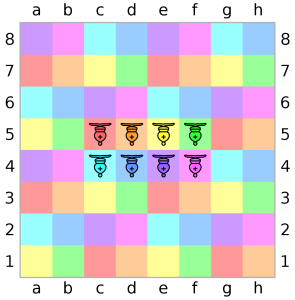
"The alfil can only reach one-eighth of the squares on the chessboard. Each of the eight alfils (represented by inverted bishops) can only move on squares of one colour (either red, orange, yellow, green, cyan, blue, violet, or magenta)."
The Feast of Fools, with its bawdy, its strange language, its open mockery of the religious life and of god's servants - its election of a boy as a mock Bishop - must have offered a reservoir of arcane material to someone like Fulcanelli...During this feast, the priests would dress as clowns or women and generally 'act the fool'...It is reasonable to assume that the Fool Feast was a throwback to the Roman Saturnalia, during which slaves were allowed to change places with their masters...The inversion was almost total. Something of this inversion of the 'natural order' of society was continued into the Feast of Fools in the mediaeval period...Yet much to our surprise, he had given only passing reference to the 'Feast' and its 'Mad Mother'. What was the esoteric background to the Feast of Fools. Who was that Mad Mother?" ['The Zelator' / M. Hedsel].
Try 'Hera' for the astronomical equivalent.
Question. 'Hare' anagram of Hera?

Antique Indian elephant chess piece representing the king. And/or: "The Bishop was introduced to the European chessboard in the 12th century, replacing the elephant of Islamic tradition. The substitution of a man of the church for an animal used in battle may seem curious, but medieval bishops frequently served with armies." Horemheb to enlarge. Sheep decans?
Side note: ''No chess piece elicits a wider range of epithets across Europe than the bishop. It starts as another elephant, except that this piece was actually called “elephant” in Sanskrit (hasti) and in Persian (pil). That was Arabized as al-fil, which was Latinized as alphilus.
In French, that became fil, fol, and finally fou, which means “fool” or “jester.” That term was the result of a chain of whispers, which was then faithfully translated into Romanian. Another whisper changed alphilus, which means nothing in Italian, into alfiere, which means “standard bearer” in Italian.
The wide range of this piece’s movements explains terms such as “runner” (e.g., Läufer in German), “hunter” (e.g., lovac in Serbian), “gunner” (e.g., strelec in Slovak), and “spear” (oda in Estonian). The Russians are among those who have maintained the original “elephant,” called slon in Russian. But in the past, it has also been called a durak (“fool,” probably a loan from the French) and an offizer.

Senet board game: The 'middle' way. Found in most Pharaonic tombs.
Side note: Harry Potter looking for the Philosophers Stone under the trap door guarded by the three hounds - comes across a chess board game: "What's happening? The staircase changes - remember?.... This is the 'third' floor; its forbidden. Door's locked, i'll use the spell from chapter 'seven' of the Standard book of Spells.....{Later on}: "What's that noise, sounds like wings: 'Flying keys'...have to get that key belonging to the one with the 'broken' wing. {Upon entering the chamber below}. "Looks like a graveyard. It's not a graveyard its a chess board. We have to play our way across the room to get to the door on the other side. Harry, you take the empty Bishop's square. Hermione, you'll be the Queen's Side Castle. As for me, i'll be a knight...White moves first {opposing side}."
H. Potter = the 'youngest' seeker.
Objective subject material within a universal mindset or fantasy?
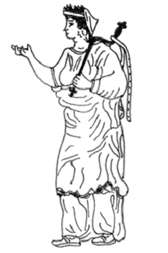
Laconian key: Handle made of Ivory.
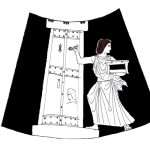
'Bower' to enlarge.
"Nicolas Flamel (French: [nikɔla flamɛl]; c. 1330 – 22 March 1418)[1] was a French scribe and manuscript seller. After his death, Flamel developed a reputation as an alchemist believed to have created and discovered the philosopher's stone and to have thereby achieved immortality. These legendary accounts first appeared in the 17th century.
According to texts ascribed to Flamel almost 200 years after his death, he had learned alchemical secrets from a Jewish converso on the road to Santiago de Compostela. He has since appeared as a legendary alchemist in various fictional works."
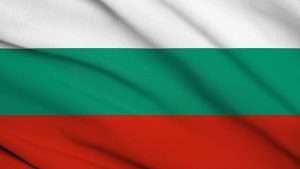
Bulgaria. Purposely chose green to differentiate from the Russian middle colour of blue.
Continued: Officer and/or nobleman is a rather generic term. A notable alternative to the official Bulgarian term ofitser (“officer”) is fritz, derived from the nickname for German troops during World War II—a relatively recent innovation, probably helped by the fact that it sounds similar to the official term.
Apart from English, only a few other languages call this piece the “bishop”: Icelandic, Faroese, Irish, and Portuguese. Why? Nobody really knows. The miter-shaped appearance came after the name. The term does have some pedigree: The Lewis chessmen, carved from walrus ivory in the 12th century, already have the bishops dressed in recognizably ecclesiastical garb.''

Made from sixtyfour strands of wire. Eight cables of eight strands each. 'Cable-tow'.
A work in progress: Boudicca {'red' haired warrior} . Queen of the Iceni tribe. Chariots used. Hare sacred {not to be eaten?}. Runs to the right or left to determine victory. Hairdresser = 2nd in command of army. Poison's herself after battle {myth?}. Daughters also not found. ''A costly funeral'' {Torc/Feast link?}. ['Mystic Britain: Boudicca'].
Known also as the 'horse people'. 3:9.
And/or: ''Three stools were found in the burial {Qurna 'queen'}, a further indicator of wealth, as wood was scarce in Egypt, and furniture was relatively rare. Two smaller stools are made of costly cedarwood imported from Lebanon. The largest stool has elegantly carved legs imitating cattle hooves. This was a style that had been used centuries earlier, before falling out of fashion, replaced by leonine feet. However, bovine feet were used on Nubian funerary BEDS at this time.'' ['World Archaeology' issue 116].
'Folded' bed of Tutankhamun?
"The cable tow represents the binding agreement that initiates make to keep the order’s secrets, contributing to a sense of duty and responsibility among Freemasons. This symbolism helps shape their understanding of the ancient mysteries and true secrets of Freemasonry, encouraging them to seek further enlightenment through study and exploration."

Mona?
And/or: ''There’s also Lughnasadh, or Lúnasa, the cross-quarter day marking the beginning of harvest time, halfway between the summer solstice and autumn equinox. (Alas, Lughnasadh has not inspired any traditions of prophetic rodents or dressing up to demand treats and threaten tricks, and remains relatively obscure today.)
For the early inhabitants of the British Isles, the most important cross-quarter day of the ancient agrarian calendar wasn’t Imbolc, Lughnasadh, or Samhuinn. It was Beltane (other spellings include Beltaine and Bealltainn), which marked the start of summer. It was celebrated midway between the spring equinox and summer solstice which, astronomically speaking, varies each year but falls around May 5 or 6.
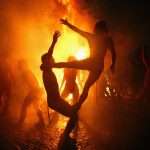
'Triangular' in shape? Womb or tomb?
In The Encyclopedia of Celtic Mythology and Folklore, Patricia Monaghan wrote that Beltane “was essentially an agricultural festival,” and marked the time when cattle, particularly important in ancient Ireland, were driven from sheltered winter locations to buaile, summer pastures bright with fresh grass. She noted that the famous fires of Beltane, now associated with purification, “may have originated simply in the need to burn off brush before the fields and pastures were put into use.” ['Atlas Obscura'].
Biblical Burning Bush?

'Bulls eye' = Eye of the needle?
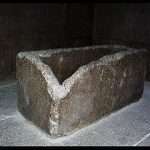
Place of the skull = Kings chamber link? And/or: Calvery = 'Bald head'.
Side note: ''In in ancient Israel both FATHERS would negotiate a 'brides price'. After exchanging a glass of wine to seal the agreement - the couple were then formally engaged. The bridegroom would then inform his fiancee that: 'He was to go home to his fathers house to prepare a place. Building a new house on to his fathers existing one - the completion of which was only determined by the father. When finished he would return to make her his wife.'....Jesus says the same thing in the Upper Room of the last supper after taking a glass of wine....The bride meanwhile { typically a 'young' woman} would remain at home preparing the wedding and everything to do with the 'household'; known as: 'The one who has been bought for a price'....She might have to wait 6-7 months before the bridegroom returned to announce that the wedding day had arrived....When Jesus spoke of the kingdom of heaven he too compared himself to a bridegroom who was engaged to be married. In effect he said: ' i love you as my bride so i will pay the bride price for you...I will go to my fathers house and prepare the many rooms for you - then return to take you with me into heaven.'' [Day 41. Lent 2022. Holy Week. Pilgrimage of Grace. K. Nichols].
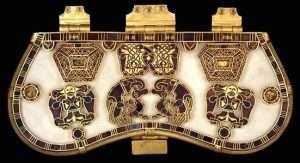
Sutton Hoo purse clasp: Wolfs / eagles and ducks.
North?
Side note: ''Some time at the end of the Amarna period a 'queen' writes to the Hittite King, saying that her husband had died and she had no sons, and as she was unwilling to take {as she says} ''a servant of hers to be her husband'' she asks the king of the Hittites to send one of his sons ''a prince'' to marry her and be king in Egypt.'' ['Nefertiti' / 07/08/03].
''Sons of'' / ''Daughters of'' as a means....?
'Foreign' to enlarge.

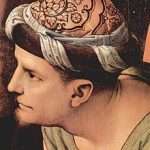
Bald?
Continued: ''Morning came...in the heart of the sacred temple {'sancuary' and/or grove?}, i stood on a wooden platform {'pallet'?} on which i took my stand, as bidden. I was a striking sight, since though my dress was only of fine linen it was colourfully embroidered, and from my shoulders they fell behind me to my ankles a costly cloak. Wherever you looked, i was decorated all over with pictures of multicoloured animals: here Indian serpents, there Hyperborean griffins with bird like wings, creatures of 'another' world. This is what initiates call an Olympic robe....'' [Page 210 'The Golden Ass' / Apuleius].
SIDE NOTE: "Today we go to the temple honouring Khnum, Neith, and their son Hak at Esna....On the walls of Esna intriguing combinations of hieroglyphs are found that are not found anywhere else. We walked into the hypostyle hall with our heads up, amazed at the birds chirping and roosting on top of the papyrus blossom columns while we stared at the stunning hieroglyphs all around us. Rather than inscriptions of a cosmological zodiac on the ceiling as in many Egyptian temples, there are odd representations of the hours of the day and night that contain, for example, a slug with two human heads and a crowned centipede or serpent with multiudinous legs. On the walls frogs crouch and crocodiles swagger in virulent abundance. The rams march through the hieroglyphic inscriptions like a herd of animals sojourning while jackals gallop after owls." [Page 123 'Invoking the Scribes of Ancient Egypt'].
Esna (Arabic: إسنا IPA: [ˈʔesnæ], Ancient Egyptian: jwny.t or tꜣ-snt;[2][3] Coptic: ⲥⲛⲏ or ⲉⲥⲛⲏ Snē from tꜣ-snt;[4] Koine Greek: Λατόπολις Latópolis[5] or πόλις Λάτων (Pólis Látōn)[6] or Λάττων (Lattōn);[7][8] Latin: Lato) is a city of Egypt. It is located on the west bank of the Nile some 55 km (34 mi) south of Luxor. The city was formerly part of the modern Qena Governorate, but as of 9 December 2009, it was incorporated into the new Luxor Governorate. This city of Latopolis (πόλις Λάτων) in the Thebaid of Upper Egypt should not be confused with the more northerly city of Letopolis (Λητοῦς Πόλις), ancient Khem, modern Ausim, in the Nile Delta in Lower Egypt.[12][13][14]

The tail end of the ''stinger'' = two swimming ducks.
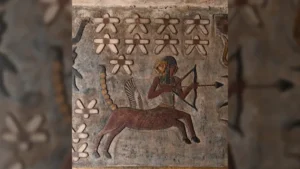
This zodiac sign depicts Sagittarius. While the zodiac signs at Esna were known before cleaning was done the work allows them to be seen more clearly. Here we see a centaur with a scorpion's tail aiming a bow and arrow. And in another scene.... a scorpion with claws at the front, eight legs and a sharp stinger at the end of its tail.
The name "Latopolis" is in honor of the Nile perch, Lates niloticus, the largest of the 52 species which inhabit the Nile,[16] which was abundant in these stretches of the river in ancient times, and which appears in sculptures, among the symbols of the goddess Neith, associated by the ancient Greeks as Pallas-Athene, surrounded by the oval shield or ring indicative of royalty or divinity.[17] Held sacred, the Lates niloticus was buried in a cemetery west of the town.[18]

“Most certainly, I tell you, one who doesn’t enter by the door into the sheep fold, but climbs up some other way, is a thief and a robber."
The temple of Esna, dedicated to the god Khnum, his consorts Menhit and Nebtu, their son, Heka, and the goddess Neith,[19] was remarkable for the beauty of its site and the magnificence of its architecture. It was built of red sandstone, and its portico consisted of six rows of four columns each, with lotus-leaf capitals, all of which however differ from each other.[20]
According to inscriptions carved on the walls of the Temple of Esna, those who entered this temple were expected to fastidiously cut their fingernails and toenails, remove other body hair, wash their hands with natron (a natural occurring salt), "be dressed in linen (they were forbidden from wearing wool), and not to have had sexual intercourse for several days."[24]
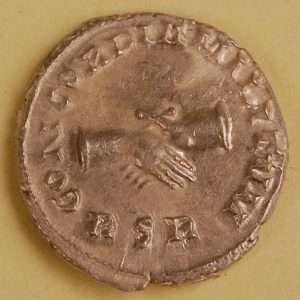
Reverse of a Carausius silver denarius from the Hoard, showing two clasped hands (symbolising the unity of the ruler and the army), alongside the abbreviation 'RSR'. This alludes to a line from Virgil's Eclogues - Redeunt Saturnia Regna or "The Golden Ages have returned".

The coin of 50 Piastres has the value of half an Egyptian pound. On the 50 piastres piece is the portrait of Cleopatra, ruler of Egypt, with a falcon on her head. The brass-plated steel coin weighs 6 1/2 grams and has a diameter of 23mm.
Continued: From a different perspective: "William G. Gray once remarked that there are no handouts in magic, only earnings collected when they fall due This is as true today as it ever was, and is one of the first things we ought to remember before embarking on any esoteric work. It was the first precept of the magicians of the past, and to the degree which they either accepted or denied it were their work and lives full or empty, beneficial or harmful." {Page 310 'The Western Way'}.
Side note: The Druid calender over 5 years divided into 16 columns {'80'}. Headed by lunar months. Punctuated with feast days. Carved into a single panel of bronze. Beginning in autumn. ['The Celts: Blood, Iron and Sacrifice'].
'The Feast of Maturity' / J. Houston {'A Mythic Life'].
Bitter / Sweet.
Question. Can all the above be used to find a ''location''?
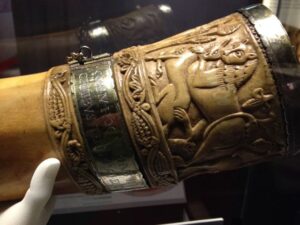
'Grip' to enlarge.
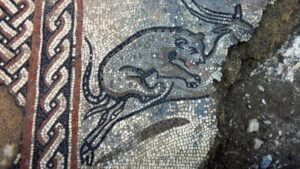
Found in Rutland.
A working example: "The ornately carved drinking-horn is fashioned from an elephant tusk, and its presentation was a Viking tradition signifying the completion of a deal. It was given by a Danish nobleman, Ulf, who donated the land on which the first church in York was built.
The story was that Ulf, a favourite of King Cnut (Canute) rode into York shortly before his death in about 1029, bearing his favourite drinking-horn. There he filled it with wine, knelt before the altar, and bestowed upon "God and the blessed St Peter, Prince of the Apostles, all his lands and tenements".
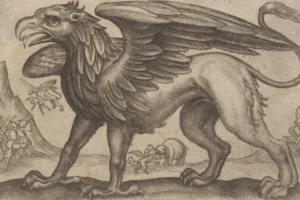
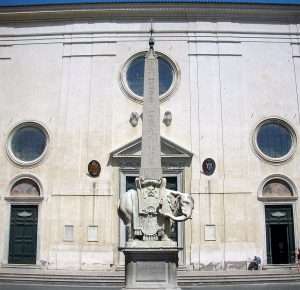
Round the corner from....?
Experts believe that it is Persian, and dates from the tenth century. The scholar Cyril Bunt once suggested that it might have been exchanged by Viking traders for Anglo-Saxon slaves.
It is a real treasure. It is of the few surviving artefacts from the beginning of the eleventh century, believed to have been carved by Islamic carvers in Salerno. It had travelled some distance then to Jorvik to the lands of Ulf. Ulf owned large estates around York and throughout Yorkshire. But the story goes that Ulf happened to overhear his two sons Archil and Norman discussing how they would divide up his land after his death.
"Fired with indignation he jumped on a horse and rode hot-haste to York. He took with him a beautiful horn which had come from the Holy Land and was said to be already a thousand years old. Arrived at York, he presented his lands at Salton and Brawby, and also some other manors, to York Minster.

An example of typical mythology in the Talmud exists as a discussion about a giant deer and a giant lion which both originated in a mythical forest called "Bei Ilai".
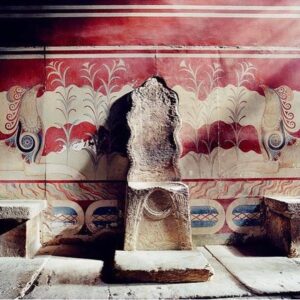
The throne of Minos.
"The band of carvings is about four inches in width, and there are four chief figures. One appears to be an unicorn performing the act that, in the credulous natural history of long ago, it with its one horn, and so fixing itself and being at the hunter’s mercy. The unicorn is the symbol of chastity. At the other side of the tree is a lion {killing?} and devouring a deer. Next, facing another tree with palmated leaves and grape-like fruit {pine cone?}, is a gryphon, a creature having the body of a lion and the head and wings of an eagle. At the other side of this tree, and facing the gryphon {griffin}, is a similar monster, which has, however, the head of a dog or wolf. The lion’s tail is foliated, while those of the winged beasts end in ludicrous dogs’ or wolves’ heads. Three wolves’ heads, collared, rise from the ground-line, and a wolf runs in the upper part, and it is not unlikely that Ulphus (or Ulf, equal to our word wolf) is so hinted at. The form of the animals, especially whose which have wings, are Assyrian in feeling and treatment, while the treatment of the trees still further adds to the opinion that the horn is not a specimen of European carving."

Elephant Island: Three boulders began the temple construction through many generations. Avebury?

"We are warriors." Action man or Barbie?
And/or: "An olive grove in Southern Greece was the scene of a spectacular discovery in May 2015 when archaeologists discovered the tomb of a man they dubbed the “Griffin Warrior.” Crammed with artefacts, the grave offers up new insights into the origins of the Mycenaean culture whose mythical heroes starred in the Trojan War. The Griffin Warrior’s tomb is located near Pylos in the Peloponnesian peninsula in southern Greece. The area had been well excavated in the 20th century, leading many to believe there was little left to discover. When the intact warrior’s tomb was uncovered in 2015, experts were surprised and delighted with the discovery. It surely promised to deliver new insights into ancient Greece."

Strong with the weak {Zelensky} and weak with the strong {Putin}.

Griffins can be seen climbing on the 'handles'. AND/OR: Hurling is played over two halves in 'seventy' minutes. Hurling uses sticks {MADE OF ASH WOOD} similar to hockey, but with a larger "toe" to pick up the ball and hit it more easily. Teams are comprised of 'fifteen' players. Points are scored by hitting the ball over the crossbar {'H'} (1 point) or into the goal (3 points).
Scores are counted separately with goals first, e.g. 1-3 to 0-4. The scores are then added up to decide a win, so in this example the first team wins 6-4.
The excavation began in a spot where three stones appeared to form a corner. A two meter by one meter shaft was discovered. Inside the shaft there was a stone-lined chamber containing a wooden coffin. Several offerings were found inside the chamber and on top of the coffin.
The findings were jewelry, sealstones, carved ivories, combs, gold and silver goblets, and bronze weapons, hence the warrior suggestion. The artifacts included a gold box-weave chain with “sacral ivy,” a meter-long sword with a gold-coated hilt, a gold-hilted dagger, and multiple gold and silver cups. On these cups were carnelian, amethyst, amber, and gold beads, four gold rings, many small, carved seals with etched depictions of combat, goddesses, reeds, altars, lions, and men jumping over bulls. A plaque of ivory with a representation of a griffin in a rocky landscape, a bronze mirror with an ivory handle, thin bands of bronze from the warrior’s armour, and boar tusks, possibly from the warrior’s helmet, were amongst the things found."
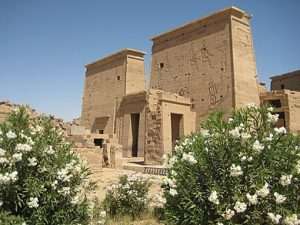
''H'' = Face to face?
Side note: "In Northern Ireland's northwest, the history of a rarely contested piece of sporting silverware that was long thought lost has now come to light. "The Derry Senior Hurling Championship trophy's story is a remarkable one, historian Dónal McAnallen said.
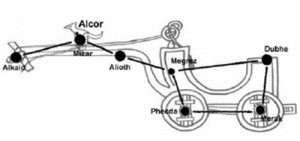
In North Germany Alkor, as there written, has been der Hinde, the Hind, or Farm Hand; in Lower Germany, Dumke; and in Holstein, Hans Bumken, Hans the Thumbkin, — the legend being that Hans, a wagoner, having given the Saviour a lift when weary, was offered the kingdom of heaven for a reward ; but as he said that he would rather drive from east to west through all eternity, his wish was granted, and here he sits on the highest of the horses of his heavenly team. A variant version placed Hans here for neglect in the service of his master Christ ; and the Hungarians call the star Oontzol, with a somewhat similar tale. Another Teutonic ston was that their giant Orwandil, our Orion, having frozen one of his big toes, the god Thor broke it off and threw it at the middle horse of the Wagon. where it still remains.
That's because it is possibly the Gaelic Athletic Association's (GAA) "oldest county championship trophy". And yet only once - in its inaugural year of 1891 - was it contested for in the sport for which it was made.....On 5 August 1891, the paper noted a "large and enthusiastic field of supporters" had gathered two days previously in the city's Waterside for a match between Hibernians and St Patrick's, which was won by St Patrick's.....The next we see of it is at a football tournament in 1934," he said. That was the GAA's golden jubilee year. The trophy then disappeared again and would not be seen for another 'fifty' years. "It wasn't heard of again until 1984, the GAA's centenary year, when it emerged out of the Waterside parochial house."
Romans 13:11-12
In the moment....
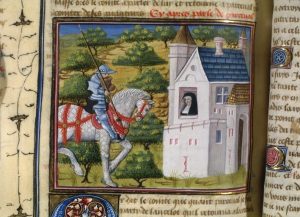
Perseus: - Wood / forest in Wales {N/W} - vermilion armour - Fisher king while returning to 'mother'.
11: And do this, understanding the present time: The hour has already come for you to wake up from your slumber, because our salvation is nearer now than when we first believed.
12: The night is nearly over; the day is almost here. So let us put aside the deeds of darkness and put on the armour of light.

Elephant?
Light oxen?
Refresher: "Dawn begins in the bones."
Femur?
Vermilion (sometimes vermillion)[1] is a color family and pigment most often used between antiquity and the 19th century from the powdered mineral cinnabar (a form of mercury sulfide). It is synonymous with red orange, which often takes a modern form, but is 11% brighter (at full brightness).[contradictory].....
Used first in English in the 13th century, the word vermilion came from the Old French word vermeillon, which was derived from vermeil, from the Latin vermiculus – the diminutive of the Latin word vermis for worm.[2]

Coming or going?
And/or: "In late medieval Europe the end-game of native spirituality and magic was being played out with the pieces of dynastic greed and clerical exactitude. Just as in the Chessboard Castle of Chretien de Troyes’ Conte du Graal, fantastic pieces were moving of their own volition across a landscape whose interior focus was forever shifting away from the shining turrets and splendid pavilions to a new Hermetic vision. The medieval blindfold was off and other rosy-coloured spectacles were donned in its place." {Page 301 'The Western Way'}.
'Tower of the flock'?
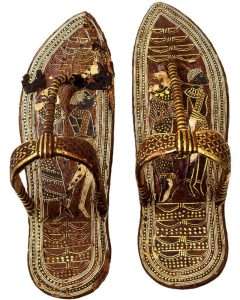
The meaning of ankh in the ancient Egyptian language is 'life' and derivative words such as 'to live' or 'living' and 'alive'....A single stroke determinative indicated when the word was exactly what the sign depicted and, in the case of the ankh, this was a sandal strap." [Page 49 'Ancient Egypt' / NOV-DEC 2023]. Question. How many 'cup' symbols in each HEEL? 'Garland' / 'mirror' / 'papyrus' to enlarge.
 ''Sixteen is a number of perfect measure and wholeness. In the Roman system 1 foot, pes, was formed by adding 4 palms, and each palm or breadth of the hand measured 4 fingers. Thus the foot was 16 fingers. A similar system is known in ancient Greece. In many languages there is a break after 16, as there is after 4....'' [Chaptrer entitled 'Symbol of Wholeness' from the book 'The Mystery of Numbers' / A. Schimmel].
''Sixteen is a number of perfect measure and wholeness. In the Roman system 1 foot, pes, was formed by adding 4 palms, and each palm or breadth of the hand measured 4 fingers. Thus the foot was 16 fingers. A similar system is known in ancient Greece. In many languages there is a break after 16, as there is after 4....'' [Chaptrer entitled 'Symbol of Wholeness' from the book 'The Mystery of Numbers' / A. Schimmel].
1 foot = 1 hour or is it 1 yard?

'153'?
''When all this had been duly performed, the voices of the faithful were raised to salute the dawn and announce the first hour of a new day.'' [Page 206 'The Golden Ass'].
What about the number '5' ?
Question. How many 'fingers' does the Sphinx have?
Head scratcher: ''Using a grid superimposed on a photogrammetric image of the frontal view of the Nefertiti bust. Rolf Krauss has demonstrated the sculpter used a grid to calculate the proportion of the bust, employing the 'fingerbreadth', the smallest measurement of length used by the Egyptians, as the base unit. Everything can be measured in fingerbreaths so that, for example, the crown is nine fingerbreaths tall aboves the queen's forehead, and measures thirteen fingerbreaths at its widest point. The mouth is one fingerbreath tall, the ear three, and the distance between the eyebrows one.'' [Pages 112/113 'Nefertiti's Face' / J. Tyldesley].

Truncated: shortened in duration or extent.
The glabella, in humans, is the area of skin between the eyebrows and above the nose. The term also refers to the underlying bone that is slightly depressed, and joins the two brow ridges......

Fire AND water.
It is a cephalometric landmark that is just superior to the nasion.[1]....The term for the area is derived from the Latin glaber, meaning 'smooth, hairless'.[2]{'BALD'?}......The skin of the glabella may be used to measure skin turgor in suspected cases of dehydration by gently pinching and lifting it. When released, the glabella of a dehydrated patient tends to remain extended ("tented"), rather than returning to its normal shape.[3]
Sight / Sound / Taste / Smell.
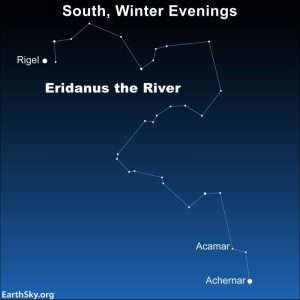
Cetus to enlarge.

Shepherd Kings?
Side note: "What is an Achilles heel? The term Achilles heel references a vulnerability or weakness. It is rooted in the myth of Achilles' mother dipping him in the River Styx, making his entire body invulnerable except for the part of his foot where she held him—the proverbial Achilles heel."

“Most certainly, I tell you, one who doesn’t enter by the door into the sheep fold, but climbs up some other way, is a thief and a robber."
What would the remedy be?
"There is a consensus among scholars that John the Baptist was from Qumran: the location on the Jordan river where tradition tells us John performed his baptisms, is exactly where the Jordan river connects with the Dead Sea near Qumran, and everything we know about John matches up perfectly with what is known about the Qumran Essenes." {'The Wisdom of the Fourth Way' / T. Nottingham}.
'Dipping'?
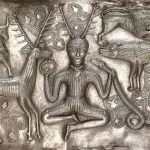

Glauberg Warrior: Closed Torc around the neck with flower petals? Mad or Joyous expression? ''Melancholy''? Hour glass figure or an 'X'? Center = 'navel'?
A {working?} example: "But are you not able to foresee what is going to happen to each of us,'' somebody asked, ''that is to say, foretell what result each of us will reach in work on himself and whether it is worth his while to begin work?"...'It is impossible to say,' said G. 'One can only foretell the future for men. It is impossible to foretell the future for mad machines. Their direction changes every moment. At one moment a machine of this kind is going in one direction and you can calculate where it can get to, but five minutes later it is already going it quite a different direction and all your calculations prove to be wrong. Therefore, before talking about knowing the future, one must know whose future is meant. If a man wants to know his own future he must first of all know himself. Then he will see whether it is worth his while to know the future. Sometimes, maybe, it is better not to know." ['In Search of the Miraculous'. Includes italics].
Follow the title of the book to 'see' it in its broader context.
From a different perspective {i.e., the animus one}: ''In those rehearsals i felt my soul truly flame forth. The great speech of the Madwoman, in which she expresses her philosophy of daily life, became my extended mantra, the code by which i would live.'' [Page 258 'A Mythic Life' / Jean Houston].
The 'middle' way between Sekhmet and Athene - both {'aspects'} of which the author identifies with.
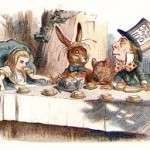 Landscape equivalent?: Conversation between archeologist Dr. J. D. Hill and the narrator Bettany Hughes in relation to decommissioned grain pits {Winchester} which archeologists had supposed were used {afterwards} as a rubbish bin for anything and everything - but now : "One of the most important developments in Iron Age archeology has been to recognize that the rubbish we find in these pits is extremely unusual rubbish - its probably the end result of a ritual feast or sacrifice or even an offering to the gods...As part of that feast and gathering at least 12 cows were slaughtered, several adult horses, sheep, pigs, dog and they had also gone out and hunted at least ONE hare." The narrator concludes: "A flamboyant gesture of excess. An orgy of killing to thank god for a surplus of food...To trade, to party, to score social points." [' Seven Ages of Britain' / Series 1. Episode 2].
Landscape equivalent?: Conversation between archeologist Dr. J. D. Hill and the narrator Bettany Hughes in relation to decommissioned grain pits {Winchester} which archeologists had supposed were used {afterwards} as a rubbish bin for anything and everything - but now : "One of the most important developments in Iron Age archeology has been to recognize that the rubbish we find in these pits is extremely unusual rubbish - its probably the end result of a ritual feast or sacrifice or even an offering to the gods...As part of that feast and gathering at least 12 cows were slaughtered, several adult horses, sheep, pigs, dog and they had also gone out and hunted at least ONE hare." The narrator concludes: "A flamboyant gesture of excess. An orgy of killing to thank god for a surplus of food...To trade, to party, to score social points." [' Seven Ages of Britain' / Series 1. Episode 2].
As one example: "Many years ago the English psychologist, F. W. H. Meyes, suggested that - ''hidden in the depth of our being is a rubbish heap as well as a treasure house''. Enlarged throughout.
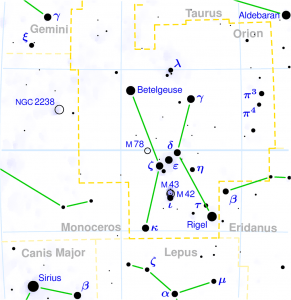
Fire AND water. Which and why?

"Behind Will, stands desire."
A working example {in the 'ritual' SENSE of the word}: Though Fire and Water, warmth and moisture, feeling and emotion raised to their maximum intensity are essentially creative, their stimulation within the being of the Neophyte draws his attention, perhaps for the first time, to the chaotic condition of his natural existence, and the complete psychic muddle into which his ignorance and spiritual impotence have stranded him. Evocative of the highest within his soul, equally these elements call forth that which is base and low, those parts of himself which because of undue repression have grown revengeful and cruel. The first steps in the magical work, as in alchemy, are analytical - the levelling down of all that man formerly held true and holy. An unhappy state but a very necessary one if progress is to be made and if the chaos is to be transcended. From these ruins may be erected the new temple of Light; it is always from the rubbish heap that are selected the materials for the manifestation of god-head. These symbols have a dual application. Not only do they refer to the epochs of creative evolution whose memory has long since faded even from the visible memory of Nature, but also to the recapitulation of those periods within consciousness itself....
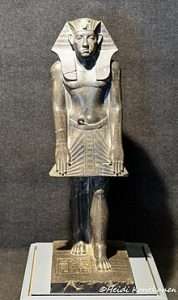
Fire or water?

First or second?
And it is in connection with these recapitulations that “the aspirant on the threshold of Initiation”, observes Aleister Crowley, “finds himself assailed by the ‘complexes’ which have corrupted him, their externalization excruciating him, and his agonized reluctance to their elimination plunging him into such ordeals that he seems (both to himself and to others) to have turned from a noble and upright man into an unutterable scoundrel”. These are the experiences and events which occur to every aspirant when initiation forces the realization upon him that “all is sorrow”. In fact, the hallmark of successful initiation and alchemical practice would seem to lie in the occurrence of these or similar experiences - the increased awareness of conflict. The whole universe under the stimulation of the magical elements and inward analysis seems to tumble like a pack of cards crazily about one’s feet. This is the first half of the alchemical solve et coagula formula. Analysis or dissolution must precede synthesis. Corruption is the primitive base from which the pure gold of the spirit is drawn. So far as the nature of the environment and personal understanding and creative capacity permit, the task implied by the coagula formula is to assemble them and remould them nearer to the heart’s desire. ['The Philosophers Stone' / I. Regardie].
2nd?
Bulford to enlarge.
 From a different perspective: but from which 'nuggets' can be gleamed from it: ''Almost 3500 years go someone dropped a broken piece of inscribed IVORY in a courtyard in the royal city of Amarna....Found in 1912...Only in 1983 was it recognised as a horse blinker...It was found next to the house of a SCULPTOR in Amarna {Thutmose}...It was found in a pit that had been identified as a rubbish pit. The pit had been dug initially for some trees....The Egyptians employ two words for 'sculptor' 'gnwt' and s'ankh'....The second one is the word as seen on the INSIDE of the blinker, it translates as: 'the one who makes alive'....Sculptors like gods were creators...'' [Pages 27/32/55 'Nefertiti's Face' / J. Tyldesley].
From a different perspective: but from which 'nuggets' can be gleamed from it: ''Almost 3500 years go someone dropped a broken piece of inscribed IVORY in a courtyard in the royal city of Amarna....Found in 1912...Only in 1983 was it recognised as a horse blinker...It was found next to the house of a SCULPTOR in Amarna {Thutmose}...It was found in a pit that had been identified as a rubbish pit. The pit had been dug initially for some trees....The Egyptians employ two words for 'sculptor' 'gnwt' and s'ankh'....The second one is the word as seen on the INSIDE of the blinker, it translates as: 'the one who makes alive'....Sculptors like gods were creators...'' [Pages 27/32/55 'Nefertiti's Face' / J. Tyldesley].

Seventytwo to enlarge.

Begins at the left foot of Orion.
And/or: "On a Minoan gem from Kydonia, a ruler of at least part of the world of living things appears without wings - lord of the wild beasts. His relationship to the two lions flanking him {'Aker' link?} is expressed in his gesture of his hands resting on the heads of the animals....The god {Dionysus} holds fast the 'lions', two living beasts of prey - with his bare hands. He tames them as it were, by a ''laying on of hands''. He draws them into his sphere of influence and holds them captive. In Greek, a hunter who catches living animals is called Zagreus - great hunter and by analogy zatheos - ''thoroughly divine''. But the Ionian word zagre, signifying ''pit for the capture of animals'', proves that the name contains within it the root of zoe and zoon, ''life'' and ''living thing''. An exact translation of Zagreus would be 'catcher of game'.....Crete was a great hunting ground before the introduction of viticulture and remained one after the vineyards died out. Divine hunters and huntressess played there role in Cretan mythology. Orion was hunting on Crete when he threatened to exterminate all the animals on earth, and when the earth for this reason sent the 'scorpion' against him...." [Pages 81/2 'Dionysus: Archetypal Image of Indestructible Life' / C. Kerenyi].
That ''duality'' at play again. Dead animals / live ones. Feasting / fasting. The 'eating of' by 'fire' or 'gathering together' for something {deeper?}. Hunter the hunted. Land / sky. Both aspects within the symbolgy of the ''scorpion''. 'Zoe' in relation to 'bios' - As a means....?
Roasting/Boiling? {i.e., by 'fire' or 'water'}.
N.B. ''Hunter'' in the spiritual {internal} SENSE of the word. Hence......

Fire AND water. Truncated pits?
In Greek mythology, Orion was a hunting companion of the huntress-goddess Artemis. In some versions of this story, Artemis killed Orion. Then her father, Zeus, the king of the gods, immortalized the giant huntsman by placing him in the sky as a constellation....Accounts of his death vary widely: some legends have him killed by Artemis for trying to rape her, others of Apollo's jealousy over Artemis' love of Orion; still other legends have him killed by a monstrous scorpion.''
'Shepherd' to enlarge.

Birds 'foot' for a 'navel'? lion cloth? Under ''ones belt''? Try ''Running the fields'' or ''Sed Jubilee'' to enlarge. And/or: The alternative name - for the Lynx constellation {now in disuse} was the Tiger - and with others it was the Little Fox with the Goose." [Page 280]. All as a means...? 'Spots and stripes'?
''The Māori people of New Zealand named Rigel as Puanga, said to be a daughter of Rehua (Antares), the chief of all-stars.[82] Its heliacal rising presages the appearance of Matariki (the Pleiades) in the dawn sky, marking the Māori New Year in late May or early June. The Moriori people of the Chatham Islands, as well as some Maori groups in New Zealand, mark the start of their New Year with Rigel rather than the Pleiades.[83] Puaka is a southern name variant used in the South Island.''
Side note: ''We don’t really know how Genghis Khan died, but that didn’t stop an early European emissary to the Mongols from reporting that the Khan had been struck by lightning. Marco Polo, however, said the Khan had died from an arrow wound to the knee. Other commentators claimed he had been poisoned, or killed by a magic spell cast by the vengeful Tangut king.''
Question. What would the remedy be?
''A less sensationalist source merely relates how the Khan’s wife Yesui prepared his body for burial in the simple way in which he had lived: dressing him in a white robe, felt boots, and hat. She then reportedly wrapped the body up in a white felt blanket filled with fragrant sandalwood, the blanket bound with three golden straps. The funeral procession heading back into Mongolia included a riderless horse that carried Genghis Khan’s empty saddle.''
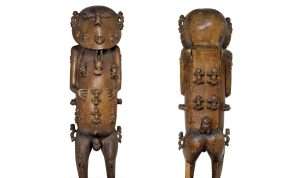
Filling up a void??

Sweat of the brow? Wide or narrow nose? Follow ones nose?
''Sandalwood is a class of woods from trees in the genus Santalum. The woods are heavy, yellow, and fine-grained, and, unlike many other aromatic woods, they retain their fragrance for decades. Sandalwood oil is extracted from the woods. Sandalwood is often cited as one of the most expensive woods in the world. Both the wood and the oil produce a distinctive fragrance that has been highly valued for centuries. Consequently, some species of these slow-growing trees have suffered over-harvesting in the past.
Sandalwood oil has a distinctive soft, warm, smooth, creamy, and milky precious-wood scent. Its quality and scent profile is greatly influenced by the age of the tree, location and the skill of the distiller. It imparts a long-lasting, woody base to perfumes from the oriental, woody, fougère, and chypre families, as well as a fixative to floral and citrus fragrances. When used in smaller proportions in a perfume, it acts as a fixative, enhancing the longevity of other, more volatile, materials in the composite. Sandalwoods are medium-sized hemiparasitic trees, and part of the same botanical family as European mistletoe. Sandalwood is indigenous to the tropical belt of the peninsular India, Malay Archipelago and northern Australia.[6][7] The main distribution is in the drier tropical regions of India and the Indonesian islands of Timor and Sumba.[8] It spread to other regions through the Incense trade route by the vast Indian and Arab mercantile networks and the Chinese maritime trade routes until the sixteenth century CE''

The Pillars of Hercules: the Pillars indicated the limit of the known world: “grasping the Pillars” was a metaphor for reaching the ultimate in human achievement. For mere mortals, they marked the end of the journey, the point at which one must turn back.'' Stretching ones boundaries?
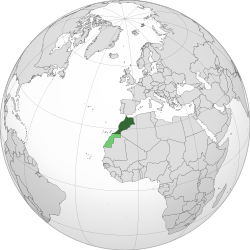
The Kingdom of Morocco. And/or: ''The temple of Luxor teaches us that through its main gates - represented as the human body - we receive the nourishing 'breath' of the Master in the guise of the four qualities: warm, dry, cold, and humid, combined into 4 elements. The human body is the living synthesis of the essential vital functions of the universe. Through its organs and their living functions, it epitomizes all of nature, which analyzes these organs in typical lineages classifiable into the mineral, plant, animal and human kingdoms.'' [Page twentysix 'The Egyptian Miracle: Wisdom of theTemple' / R. Schwaller de Lubicz].
As an example - feasting gear found in the Atlantic zone in the Late Bronze Age: cauldrons, flesh hooks and roasting spits. Although feasting was an important aspect of Celtic society, right across Europe, the Atlantic feasting gear represented a specific type of behaviour that was localized to the Atlantic zone, extending from southern Spain and Portugal up to Shetland. It was a 'community of behaviour' that showed connectivity between these places.''
Fire/roasting V Boiling. And/or Apollo V Dionysus.
''Straight South'' to enlarge.
'Decomposition/Putrefy'.
'Feast of Maturity' to enlarge.

Bridge over troubled waters?
And/or: Late Bronze Age log boats discovered in the river Nene in Norfolk. Eight in total. All in good working order - "in pristine condition." Possibly for ritual purpose. Swords also found. Close to, if not on, the Fenland. ['Digging For Britain' / S3 EP1].
Can any of the above tell us anything about that GAP {200 years?} between the Bronze and Iron Age?
The River Nene (/ˈnɛn/ or /ˈniːn/: see below) is a river in the east of England that rises from three sources in Northamptonshire.[1] The river is about 105 miles (169 km) long,[2] about 3.7 miles (6.0 km) of which forms the border between Cambridgeshire and Norfolk. It is the tenth-longest river in the United Kingdom, and is navigable for 88 miles (142 km), from Northampton to The Wash.

The journey.

True or false?
Spelling of the river's name has altered over time; it was called the "Nenn" or "Nyn" in an 1810 engraving by draughtsmen George Cole and John Roper, while the Ordnance Survey of 1885 used what has since become standard spelling, "Nene".[3] The origin and meaning of the River Nene's name is unknown. The earliest known examples, which date back to the 10th century AD, have been linked to Indo-European root words for snow, rain, or washing, but a direct connection is purely speculative. According to the British toponymist and medieval scholar Victor Watts, "The name is certainly pre-English, possibly pre-Celtic'.[4] The same name appears in the Neen, the former name of the River Rea in Shropshire, which is retained in the hamlet of Neen Savage.
The pronunciation of the river's name varies by locality. In Northampton it is usually pronounced /ˈnɛn/ (NEN), and around Peterborough it is usually pronounced /ˈniːn/ (NEEN).[5] The point at which the pronunciation of the Nene changes has been moving further inland for many years; the current edition of the nautical publisher Imray's "Map Of The River Nene" suggests that it now begins at Thrapston.

Flag of Morocco: ''Living synthesis''?
Side note: "Endorsement of the view that the planets visible to the naked eye were represented by the gods came about in an unusual way. After two years cataloguing the Leigh papers, we began, warily at first, to derive astronomical images from the narrative. One of the first came from a few words in Book 1 that record the return of the gods after a few days feasting in Ethiopia: 'The immortal gods came back in a body {at dawn} to Olympus, and Zeus led the way.'..." Enlarged elsewhere.
Question. Saturn/Poseidon link? Enlarged elsewhere.
Refresher: ''Saturn is the furthest planet that can be seen with the naked eye."
Saturn conjunction with Jupiter as a means to a beginning? 2020 / 1603
Side note: "When translated and decoded, this inscription reveals the exact time and date on which the zodiac was laid down, and mentions the names of the planets involved in the satellitium in Taurus. The date contained within this coded Latin corresponds precisely to the date i arrived at independently...It is of course, the date on which this unique 'gathering' of planets took place...28th May 1207." ['The Secret Zodiac'].
Coincidence or a meaningful one? Try the title of the book.
N.B. Winchester. Smack bang in the middle - on the South coast.
"Saturn is also named the Lord of Decrease...his power manifests in the later stages of decay. He rules over the spoiled, the filth and the refuse of society..." ['Saturn and the Theoretical Foundations of an Emerging Discipline'].
A work in progress: Try Herod.
Question. What represents an ''increase''?
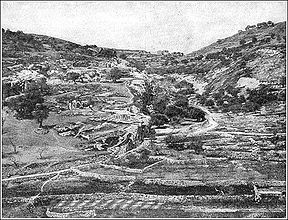
Ancient rubbish tip.
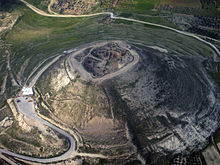 Side note: "Many years ago the English psychologist, F. W. H. Meyes, suggested that - ''hidden in the depth of our being is a rubbish heap as well as a treasure house''. Enlarged throughout.
Side note: "Many years ago the English psychologist, F. W. H. Meyes, suggested that - ''hidden in the depth of our being is a rubbish heap as well as a treasure house''. Enlarged throughout.
A practical example: ''My daughter was always teasing my husband about digging in the trash, but its just made us $7000 richer.'' {Diana} i.e., '1802 :Federalist Papers. Vol 1+2' written among others - by Alexander Hamilton. [ Pawn Stars / History Ch. 8.08.17].
And/or: "A planet is an astronomical body orbiting a star or stellar remnant that is massive enough to be rounded by its own gravity, is not massive enough to cause thermonuclear fusion, and has cleared its neighbouring region of planetesimals." ['Wiki'].
Continued: Recall recent discoveries in {similar?} pits at Bulford. Try among others ''grain'' for a further connection. Part 5.
"Many years ago the English psychologist, F. W. H. Meyes, suggested that - ''hidden in the depth of our being is a rubbish heap as well as a treasure house''. Try ''house'' and/or ''Herod''.
"I will give you the treasures of darkness and the secret places." {Isaiah 45,7}.
Also in same program/documentary - ONLY one piece of clothing - {a fox fur armband} found on the naked Lindow Man. And the White chalk horse in relation to boundary lines. Enlarged elsewhere.
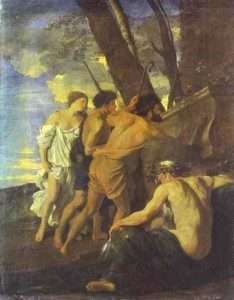
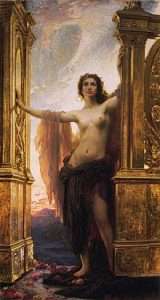
Goddess of Dawn. Gateway to the light.
Refresher: "...nothing is covered that will not be revealed, or hidden that will not be known." [Matthew X, 26].
'Swaddling cloth'.
A {working?} example {i.e., if only in the Old Testament sense of the 'word'}: "I will deliver thee into the hand of them that thou hatest, into the hand of them from whom thy mind is alienated. And they shall deal with thee hatefully, and shall take away all thy labour - and shall leave thee naked and bare...." [Ezekiel 23:29].
Cleromancy is a form of sortition (casting of lots) in which an outcome is determined by means that normally would be considered random, such as the rolling of dice (astragalomancy), but that are sometimes believed to reveal the will of a deity....Book of Proverbs 16:33: "The lot is cast into the lap, but its every decision is from Yahweh" and 18:18: "The lot settles disputes, and keeps strong ones apart."
'Eighteen'?
-
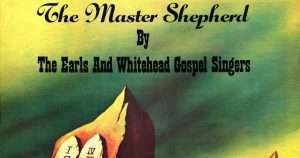
Then Odysseus of many wiles answered her, and said: “Lady, hard is it for one that has been so long afar to tell thee this, for it is now the twentieth year since he went thence and departed from my country. But I will tell thee as my mind pictures him. A fleecy cloak of purple did goodly Odysseus wear, a cloak of double fold, but the brooch upon it was fashioned of gold with double clasps, and on the front it was curiously wrought: a hound held in his fore paws a dappled fawn, and pinned it in his jaws as it writhed. And at this all men marvelled, how, though they were of gold, the hound was pinning the fawn and strangling it, and the fawn was writhing with its feet and striving to flee. And I noted the tunic about his body, all shining as is the sheen upon the skin of a dried onion, so soft it was; and it glistened like the sun.
 To Christian doctrine, perhaps the most significant ancient Hebrew mention of lots occurs in the Book of Psalms, 22:18 "They divide my garments among them, and for my clothing they cast lots." This came to be regarded as a prophecy connecting that psalm and the one that follows to the crucifixion and resurrection of Jesus, since all four gospels (for example, John 19:24) tell of the Roman soldiers at Jesus's crucifixion casting lots to see who would take possession of his clothing. That final act of profanation became the central theme of The Robe, a 1953 film starring Richard Burton.
To Christian doctrine, perhaps the most significant ancient Hebrew mention of lots occurs in the Book of Psalms, 22:18 "They divide my garments among them, and for my clothing they cast lots." This came to be regarded as a prophecy connecting that psalm and the one that follows to the crucifixion and resurrection of Jesus, since all four gospels (for example, John 19:24) tell of the Roman soldiers at Jesus's crucifixion casting lots to see who would take possession of his clothing. That final act of profanation became the central theme of The Robe, a 1953 film starring Richard Burton.
A notable example in the New Testament occurs in the Acts of the Apostles 1:23–26 where the eleven remaining apostles cast lots to determine whether to select Matthias, or Barsabbas (surnamed Justus) to replace Judas.
Try Gog/Magog. And/or ''trickster'' character. Its purpose. Then and now. Question. Were those bodies {Bog men} expected to be discovered?
AND: "...symbols are not obstacles that must be eliminated in order to arrive at knowledge of the truth, but rather means for receiving 'revelation'. The "clothes" - the symbols - of truth are for each not what hides it, but rather what reveals it." [Extract from the book by Tomberg].
AND: "O children of Adam. Indeed, we have given you garments to cover your 'nakedness',[key] and as a thing of beauty;...but the garment of god-consciousness is the best of all. This is one of gods messages....that human beings might take it to heart". [Quran 7:26].
Side note: Psalm 22 of the Book of Psalms (the hind of the dawn) or My God, my God, why hast thou forsaken me?[a] is a psalm in the Bible.....

The Sycamore Gap Tree or “Robin Hood Tree” is a sycamore tree (Acer pseudoplatanus) standing next to Hadrian's Wall in Northumberland, England. The lake of Crag Lough and the village of Once Brewed are nearby, as is the Twice Brewed Pub, useful for trekkers at days end.
 "Many bulls surround me; strong bulls of Bashan encircle me. 13 Roaring lions that tear their prey open their mouths wide against me. 14 I am poured out like water, and all my bones are out of joint. My heart has turned to wax; it has melted within me. 15 My mouth[a] is dried up like a potsherd, and my tongue sticks to the roof of my mouth; you lay me in the dust of death.
"Many bulls surround me; strong bulls of Bashan encircle me. 13 Roaring lions that tear their prey open their mouths wide against me. 14 I am poured out like water, and all my bones are out of joint. My heart has turned to wax; it has melted within me. 15 My mouth[a] is dried up like a potsherd, and my tongue sticks to the roof of my mouth; you lay me in the dust of death.
16 Dogs surround me, a pack of villains encircles me; they pierce[b] my hands and my feet.
17 All my bones are on display; people stare and gloat over me. 8 They divide my clothes among them and cast lots for my garment.19 But you, Lord, do not be far from me. You are my strength; come quickly to help me. 20 Deliver me from the sword, my precious life from the power of the dogs. 21 Rescue me from the mouth of the lions; save me from the horns of the wild oxen. 22 I will declare your name to my people; in the assembly I will praise you." [Psalm 22:10-22].
'Twentytwo'?
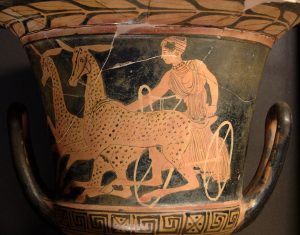
Biga of Artemis drawn by hinds (Boeotian red-figure kylix, 450–425 BC)
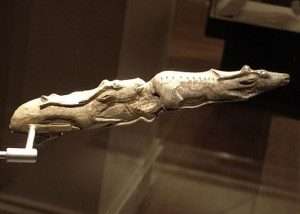
Two swimming reindeer. With or without 'horns'?
And/or: Ayelet Hashachar (Hebrew: "hind of the dawn") is found in the title of the psalm. It is probably the name of some song or tune to the measure of which the psalm was to be chanted.[7] Some, however, understand by the name some instrument of music, or an allegorical allusion to the subject of the psalms. In the recent literature,[which?] however, it is argued that "Hind of Dawn" is a cultic role of the priest designated person acting as מְנַצֵּחַ (menatseach), as head of the ritual.
Where English translations have "psalm", the underlying Hebrew word is מִזְמוֹר (mizmor), a song with instrumental accompaniment. This is part of the series of "Davidic Psalms" (mizmor le-david). Traditionally, their authorship was attributed to King David; however, in scholarly exegesis this attribution has been variously qualified or challenged since the late 19th century. The Hebrew particle le can mean "for", "about", or "by", so that it remains open to interpretation whether these psalms originate with David, or whether the heading refers, rather, to the chief character of the poetry, as being concerned with Davidic kingship in the narrow sense, or even divine kingship more generally.[8]
The heading further assigns the psalm as "for the conductor" (לַֽמְנַצֵּחַ). This is apparently a reference to the use of psalms in the (temple) liturgy. The exact meaning is unclear.[9]
"Dappled"?

"The stone which the builders refused has become the headstone of the corner." Psalm 18 {i.e., 144 divided by 'eight'}.

Eight strands each. Sixtyfour in total. Enduring mindset?
Continued: "When we think about the future, we envision a version of the present: that the TV shows, movies, and singers who matter most today will be the ones remembered in 100 years. History, says otherwise, Chuck Klosterman argues in 'But what if we're wrong? Thinking about the present as if it were the past'. The works that endure, he says, are the ones that future societies find meaningful, whether they're valued in their day or not. Herman Melville's 'Moby Dick' was scorned when it came out, and Franz Kafka was dead before 'The Trial' saw print. So which of today's writers will be remembered. Probably not Philip Roth or Jonathan Franzen, Klosterman says, but someone writing in obscurity {perhaps on the deep web}, representing an ultra-marginalised group and covering subjects that can be completely reinterpreted by future readers..." [From the 'Time Magazine' {June 2016} entitled 'Predicting the next great American novel' - including parenthesis].
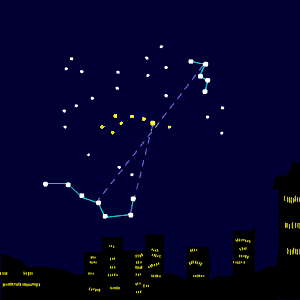 The ‘Pleiades’ and ’Bear’ constellations. Universally known by all cultures throughout millenniums. The ‘Seven sisters’ together with the ‘Seven Plough oxen’. [Septentriones. Old name of same ]. One symbolic, [as a representation] of that ‘unknown’ quantity. The other...a ‘known’ one. In relation to an awareness, from an unaware start point, [i.e.,''shadow'' aspect]. Link to 'Tomb' and 'Womb' symbolism.
The ‘Pleiades’ and ’Bear’ constellations. Universally known by all cultures throughout millenniums. The ‘Seven sisters’ together with the ‘Seven Plough oxen’. [Septentriones. Old name of same ]. One symbolic, [as a representation] of that ‘unknown’ quantity. The other...a ‘known’ one. In relation to an awareness, from an unaware start point, [i.e.,''shadow'' aspect]. Link to 'Tomb' and 'Womb' symbolism.
Question. Shadow/anima? Which and why? Remember - as a MEANS to represent something.
"The dolphin, it should be added, is a sea creature with a womb..." [Extract from the book by G. Knight]. Recall same word in Part 1.
Together with... ..."Long ago it was said at the time of the crucifixion, a strange voice was heard, calling out across the seas: 'Great pan is dead', and this was thought to mean that all the old gods and all their ways had been killed because the One True god had come. This is not quite accurate; though there is truth in it. Pan was not dead, but something connected with 'death' did come to earth. It changed." [Extract from the book by G. Knight].
Shadow in relation to 'light' and/or ''grace''. Its intent and {purpose?}.
Sufi equivalent...the 'Seventy Thousand' veils [of light and darkness], in relation to the 'Seven fold way', [introduction, 'The Niche of Lights'/ Al-Ghazali]. From something unveiled to... inspirations/aspirations ,['scratching']...to 'ploughing ones furrow'. [ 'Groove'. Key ]. Getting your head around it yet?
"Far away from America, the Society Islanders of the South Pacific divide the year into two seasons - Pleiades above the Horizon and Pleiades below." [Chapter 4, 'Cities of Dreams' by S. Gooch]. Can u see what the author cannot?
Try authors name or title of book.
As does..."Thoth is a moon god; and Hermes, who carries a staff around which two serpents are twined, comes originally from Arcadians, the people of the bear, who also worshiped Artemis and Pan. These various wisdom's have no discernible value at all - although the alchemists for example like the numerologists, did occasionally stumble across genuine scientific truths. We do not, i think, do this overlay material any great injustice if we describe it as mysticism for the sake of mystery, wrapped in endless philosophical and metaphysical meanderings." [Chapter 11, same book]. To evaluate correctly before deciding on the 'next course of action' understand 'metaphysical' in relation to signs and keys. [Explained throughout].
 As an example put ''Arcadia'' in the usual box.
As an example put ''Arcadia'' in the usual box. ![images[3]](https://esotericbasics.co.uk/wp-content/uploads/images31-150x150.png) And/OR: "The name of Ladon who guarded the 'apples' is something of a mystery: He was the snake within - the guardian of the 'inner riches'...The Hesperides are 'Daughters of the Evening'. In the Stellar lore, they are the Pleiades - from the Greek 'pleios' {many}...According to R. H. Allen, 'Star Names and Their Meanings' it is called the Greatest Snake, and says that it glides in the manner of a river, between two stellar 'bears'...It may be the source of the same name for the river in Arcadia into the Alpheus, and which was visualized as being the border of the Garden of the Hesperides..." ['The Zelator'].
And/OR: "The name of Ladon who guarded the 'apples' is something of a mystery: He was the snake within - the guardian of the 'inner riches'...The Hesperides are 'Daughters of the Evening'. In the Stellar lore, they are the Pleiades - from the Greek 'pleios' {many}...According to R. H. Allen, 'Star Names and Their Meanings' it is called the Greatest Snake, and says that it glides in the manner of a river, between two stellar 'bears'...It may be the source of the same name for the river in Arcadia into the Alpheus, and which was visualized as being the border of the Garden of the Hesperides..." ['The Zelator'].
'River' in relation to 'centering in' in relation to the 'apple of the eye'. Anything?
And/or 'shadow' in relation to 'light' {i.e., 'sisters' = anima. Aspects of.}: Enlarged throughout. ALL as a means...?
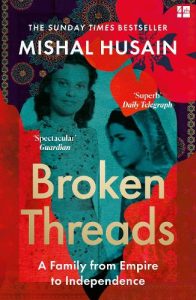 A different interpretation but now from a 'known' point of view..."Contemplation of Binah may bring a very real sense of being surrounded by Great Waters, and in this connection the Temple of Binah is an Ark on the supernal seas. This is the ''Ark of Isis'', a symbol of the Womb of the Great Mother. This symbol of the Ark of Isis or the Moon Ark is one of very great protection and is of immense antiquity, sometimes being associated with a Moon Tree. The earliest representation of the moon god {and by extension this means the divine feminine principle} are to be found in cones or pillars of stone, often of meteoric origin, sometimes carved and sometimes left UNworked, {'stalagmites/stalactites link? OR would that be a reference to the 'spirit' aspect?}. These are not phallic stones, although they are sometimes confused with them. When such a pillar is made of wood we have the Moon Tree, examples of which are found illustrated in Dr Esther Harding's 'Women Mysteries', an important text for anyone who wishes to understand the psychological implications of the goddess." [Extract from the book 'The Rose Cross and the Goddess'. All emphasis, this readers with the exception of the information underlined].
A different interpretation but now from a 'known' point of view..."Contemplation of Binah may bring a very real sense of being surrounded by Great Waters, and in this connection the Temple of Binah is an Ark on the supernal seas. This is the ''Ark of Isis'', a symbol of the Womb of the Great Mother. This symbol of the Ark of Isis or the Moon Ark is one of very great protection and is of immense antiquity, sometimes being associated with a Moon Tree. The earliest representation of the moon god {and by extension this means the divine feminine principle} are to be found in cones or pillars of stone, often of meteoric origin, sometimes carved and sometimes left UNworked, {'stalagmites/stalactites link? OR would that be a reference to the 'spirit' aspect?}. These are not phallic stones, although they are sometimes confused with them. When such a pillar is made of wood we have the Moon Tree, examples of which are found illustrated in Dr Esther Harding's 'Women Mysteries', an important text for anyone who wishes to understand the psychological implications of the goddess." [Extract from the book 'The Rose Cross and the Goddess'. All emphasis, this readers with the exception of the information underlined].
Spirit or Soul....as a means?
Woodhenge? IN RELATION TO Stonehenge?
 Side note: From a different perspective: "Almost every scientist who has ever kept a journal reports sudden flashes of insight....certain knowledge that reaches the surface by some unknown route: 'I felt an instant and complete certainty,' wrote the mathematician Poincare, who solved an incredibly difficult problem while 'daydreaming' on a bus. Of a similar experience the great Karl Friedrich Gauss wrote: 'As a sudden flash of light, the enigma was solved...For my part, I am unable to name the nature of the thread which connected that which I previously knew with that which made my success possible.'....The 'thread' has been named intuition - not that this explains its nature. It seems to be a second path to understanding. Reason is of course safer and surer {hint, hint}....The Minoan Geeks called her Ariadne {''most pure''}. Being a seafaring people, they recognized her power of drawing up the tides, as if by an invisible thread; they suspected that she likewise drew at the 'tides of human affairs'. Ariadne's thread is one of the great magic instruments of Greek
Side note: From a different perspective: "Almost every scientist who has ever kept a journal reports sudden flashes of insight....certain knowledge that reaches the surface by some unknown route: 'I felt an instant and complete certainty,' wrote the mathematician Poincare, who solved an incredibly difficult problem while 'daydreaming' on a bus. Of a similar experience the great Karl Friedrich Gauss wrote: 'As a sudden flash of light, the enigma was solved...For my part, I am unable to name the nature of the thread which connected that which I previously knew with that which made my success possible.'....The 'thread' has been named intuition - not that this explains its nature. It seems to be a second path to understanding. Reason is of course safer and surer {hint, hint}....The Minoan Geeks called her Ariadne {''most pure''}. Being a seafaring people, they recognized her power of drawing up the tides, as if by an invisible thread; they suspected that she likewise drew at the 'tides of human affairs'. Ariadne's thread is one of the great magic instruments of Greek 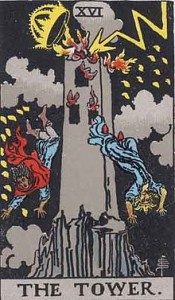 mythology. It was the clew that guided Theseus through the dark windings of the labyrinth. It has become one of the most powerful metaphors of all ages, so that even the word clew, which once meant only a ball of thread, now even means guidance to a hidden answer {center?}. Thus Gauss was guided through the labyrinth of his own unconscious by a thread he could not name. The usual place for lunar worship was the forest....The first Greek temples must have been groves of trees, for when they built stone temples, they continued to surround them with stone images of trees {'petrified'?}. Similar in Egypt - where the early temples were stone ''forests'' of artificial eucalyptus trees. Near the pyramid of Amenemhat III - lie the remains of the greatest of these temples, the Egyptian labyrinth" - it contains an estimated 36000 trees of 'stone'....[Page 40 'Arachne Rising: The Search for the Thirteenth Sign of the Zodiac' / J. Vogh].
mythology. It was the clew that guided Theseus through the dark windings of the labyrinth. It has become one of the most powerful metaphors of all ages, so that even the word clew, which once meant only a ball of thread, now even means guidance to a hidden answer {center?}. Thus Gauss was guided through the labyrinth of his own unconscious by a thread he could not name. The usual place for lunar worship was the forest....The first Greek temples must have been groves of trees, for when they built stone temples, they continued to surround them with stone images of trees {'petrified'?}. Similar in Egypt - where the early temples were stone ''forests'' of artificial eucalyptus trees. Near the pyramid of Amenemhat III - lie the remains of the greatest of these temples, the Egyptian labyrinth" - it contains an estimated 36000 trees of 'stone'....[Page 40 'Arachne Rising: The Search for the Thirteenth Sign of the Zodiac' / J. Vogh].
Why eucalyptus ? Any link to ''36'' ?
Reason = ''Tower''? Flat top? What replaces it?
Question. What is the difference between Tower/Castle/Temple?
Recall the forests that these islands were covered in from the very beginning. Matriarch? Followed by Patriarch 'religions'? But what does that really mean? Something 'unknown' becoming 'known'? Unconscious {unmanifested?} - Conscious {manifested?}. Lunar/Solar as a means.…? Which comes first and why? OR does it matter?
And/or: 'Petrified' {i.e., 'joining' of the two i.e., wood/stone} - in relation to 'Ossified' {Spine} of say Osiris? in relation to :
"The fire-wheel is in many myths, the 'masculine' form of the 'feminine' spindle." [Page 78 same book].
Anima/Animus as a means.....?
Gnosis in relation to the cognitive faculty? Enlarged elsewhere.
Etruscan.
Side note: "The word 'temple' comes from the prehistoric Indo-European root 'tem', - which means ''to cut'' . A temple is a sacred place, a place of retreat that is literally 'cut out' from busy demands of everyday existence. The Greek word temenos - the scared precinct in which a sanctuary is located - originates from the same root. The Latin word religio means to ''relink'' {i.e., to the universe} - back to the mysteries depths of our own being.....As Henry Corbin notes {'Temple and Contemplation'} - the word templum originally meant a vast space, open on all sides - from which one could survey the whole surrounding landscape as far as the horizon. This is what is meant to contemplate - to set ones sights on...." [Page 388 'Alexandria' Vol 3. D. Fideler].
''In ancient Europe, the Etruscans arranged their cities and temples according to the cross that gives shape to the world. In their wake, the church fathers saw the cross inscribed in a square as a symbol of global power of the cross of Christ.'' [Page 88 'The Mystery of Numbers' / A. Schimmel].
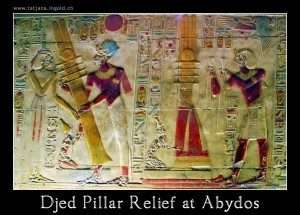
''Raising''?
A work in progress: ''Twentyfour finely worked bronze statues found in ''the warm muddy waters'' at an Etruscan - Roman sanctuary connected to the Bagno Grande {'great bath'} of San Casciano dei Bagni, Italy. The largest deposit of bronze statues found in Italy. Some depict the deities who were worshiped there {Hygeia/Apollo}, while others represent individuals who MAY have visited the site, including children {'young'}, matrons {'nurse'?} and even emperors. San Casciano dei Bagni is home to a natural thermal spring {aquae calidae}...First built by the Etruscans in the 3rd century BC.'' [Page 6 'World Archaeology' / issue117].
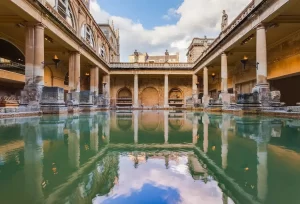 ''Waters of the GAP.'' {i.e., between the top of the spine and base of head}.
''Waters of the GAP.'' {i.e., between the top of the spine and base of head}.
Kundalini?
And/or: Bronze/Copper to enlarge.
Geese, Ducks or Swans?

'flat'?
A working example: Many Etruscan tombs carved out and built INTO the tops of mountains. Square {oblong} entrance with dome shape on top. Griffins guard the entrance. ''Stone made to look like wood beams'' {recall Stonehenge}. And/or: Carving of a book on a night table''. TWELVE major City States. Within each a necropolis that contain tombs, some with ''painted chambers''. Flora and fauna abound. Spotted lions {panthers?} - tongues exposed - take center stage in the upper levels. FACING EACH OTHER {as opposed to say, the Egyptian Aker lions}. A 'double' band of colour seperates lower from higher. Men and women in reclining positions {'feasting'} in the 'lower' realm/division {Hestia?}, partly covered with a 'cross stitching' garment. One woman in a 'striped' top. Flutes also seen. A flat topped roof instead of a triangular one: ''to look like a tent'' remarks the narrator. Circles abound within that flat top, ONE especially highlighted in a group of 'FIVE'. The word ''augury'' used in relation to a bird {duck?} with seven wing and tail feathers. NOT 'seen' or noted. Athletic game scenes also depicted with 'slaves' : ''that took place as part of the funerals of aristocratic {'noble?'} families.'' The 'bird' flying TOWARDS the reclining figures. ['Expedition Unknown' / S10 EP20].
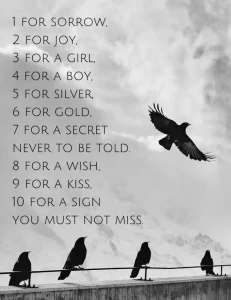
Refresher: ''To the Egyptians silver was more 'precious' than gold.'' And/or: ''The Codex Argenteus is a bible name for the precious metal silver.''
'Fate' one way or the other?
''Breastplate'' to see it from a different perspective.
Question. What universally represents the 'heart'. M/F?
Get into that universal mindset to 'see' something other than the obvious, i.e., ''to be impressive''.
Unas / migration / abroad / foreign - to enlarge.
A work in progress: The hunt for the Griffon - the first ship to be lost in the Great Lakes. Some call it ''the grail of shipwrecks.'' ['Expedition Unknown' / S6 EP6].
''The griffin, griffon, or gryphon is a legendary creature with the body, tail, and back legs of a lion; the head and wings of an eagle; and sometimes an eagle's talons as its front feet.''
Orkney?

The Columbarium of Pomponius Hylas is a 1st-century CE Roman columbarium, situated near the Porta Latina on the Via di Porta Latina, Rome, Italy. It was discovered and excavated in 1831 by Pietro Campana.
Though its name derives from Pomponius Hylas, who lived during the Flavian period (69–96 CE), the building itself has been dated to between 14 and 54 CE due to inscriptions on two of its niches (one dedicated to a freedman of Tiberius and the other to a freedman of Claudia Octavia, daughter of Claudius and Messalina). It was later bought by Pomponius Hylas for himself and his wife, and he added the mosaic panel over the entrance steps, which is decorated with griffins and reads: CN(aei) POMPONI HYLAE E(t) POMPONIAE CN(aei) L(ibertae) VITALINIS (Of Gnaeus Pomponius Hylas and Pomponia Vitalinis the freedwoman of Gnaeus)
The inscription also has a V (meaning vivit) over Pomponia's name, showing she was alive when the panel was added.
"An olive grove in Southern Greece was the scene of a spectacular discovery in May 2015 when archaeologists discovered the tomb of a man they dubbed the “Griffin Warrior.” Crammed with artefacts, the grave offers up new insights into the origins of the Mycenaean culture whose mythical heroes starred in the Trojan War. The Griffin Warrior’s tomb is located near Pylos in the Peloponnesian peninsula in southern Greece. The area had been well excavated in the 20th century, leading many to believe there was little left to discover. When the intact warrior’s tomb was uncovered in 2015, experts were surprised and delighted with the discovery. It surely promised to deliver new insights into ancient Greece."
Side note: The Codex Argenteus (Latin for "Silver Book/Codex") is a 6th-century illuminated manuscript, originally containing part of the 4th-century translation of the Christian Bible into the Gothic language. Traditionally ascribed to the Arian bishop Wulfila, it is now established that the Gothic translation was performed by several scholars, possibly under Wulfila's supervision.[1] Of the original 336 folios, 188—including the Speyer fragment discovered in 1970—have been preserved, containing the translation of the greater part of the four canonical gospels. A part of it is on permanent display at the Carolina Rediviva building in Uppsala, Sweden, under the name "Silverbibeln" (i.e. "The Silver Bible").
The Codex Argenteus (literally: "Silver Book") was probably written for the Ostrogothic king Theodoric the Great, either at his royal seat in Ravenna, or in the Po valley or at Brescia; it was made as a special and impressive book written with gold and silver ink on high-quality thin vellum stained a regal purple, with an ornate treasure binding. Under Theodoric's reign, manuscripts of the Gothic Bible were recopied.[3] After Theodoric's death in 526, the "Silver Bible" is not mentioned in inventories or book lists for a thousand years.''
Continued: ''Flora: flora means the plants naturally occurring in a particular area. Some examples of flora include- grasslands, forests, flowering and non-flowering plants and trees. Fauna: fauna means the animals naturally living in that area. Few examples of fauna include- birds, animals, fish, insects, etc.''
'Pan'?

'E'?
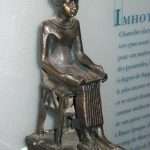
Scroll = 'book'? Question. Did Imhotep have any daughters that became priestesses? Menkaure to enlarge.
''The ancient Romans referred to the Etruscans as the Tuscī or Etruscī (singular Tuscus).[31][32][33] Their Roman name is the origin of the terms "Toscana", which refers to their heartland, and "Etruria", which can refer to their wider region. The term Tusci is thought by linguists to have been the Umbrian word for "Etruscan", based an inscription on an ancient bronze tablet from a nearby region.[34] The inscription contains the phrase turskum ... nomen, literally "the Tuscan name". Based on a knowledge of Umbrian grammar, linguists can infer that the base form of the word turskum is *Tursci,[35] which would, through metathesis and a word-initial epenthesis, be likely to lead to the form, E-trus-ci.[36]
Side note: ''Since ancient times, people have looked to the heavens for signs, and since birds fly, it makes sense that people would perceive birds as messengers of the gods or fates. After all, a bird's-eye-view is significantly more omniscient than an earthbound perspective. Birds know what the world looks like from 30,000 feet high; they have seen the insides of clouds, so looking to birds for perspective makes an odd kind of sense.

Birds eye view?
Augury—the art of interpreting birds as omens—has been around since before the ancient Romans. An "auspice" is a Latin term for the messages birds might convey. An "augur" (a word that means both omen and one who sees an omen) would "take the auspices" by looking at "aves" (birds) and "reading" their appearance and behavior. Those auspices (bird-signs) were sometimes auspicious (lucky) and sometimes inauspicious.''
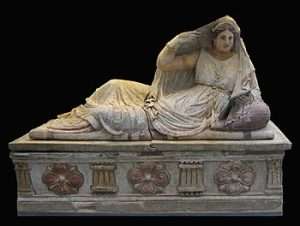
Etruscan 'noble' woman. 'Triangular' head gear? Right angle?
As for the original meaning of the root, *Turs-, a widely cited hypothesis is that it, like the word Latin turris, means "tower", and comes from the Greek word for tower: τύρσις.[37][38] On this hypothesis, the Tusci were called the "people who build towers"[37] or "the tower builders".[39] This proposed etymology is made the more plausible because the Etruscans preferred to build their towns on high precipices reinforced by walls. Alternatively, Giuliano and Larissa Bonfante have speculated that Etruscan houses may have seemed like towers to the simple Latins.[40] The proposed etymology has a long history, Dionysius of Halicarnassus having observed in the first century B. C., "[T]here is no reason that the Greeks should not have called [the Etruscans] by this name, both from their living in towers and from the name of one of their rulers.''

Something 'new'?
From a different perspective: ''For this author, the name Magdalum indicated “the towers and magnificent walls with which the castle was equipped”—in Aramaic, magdala means tower or fortress. And he adds: “This is why St. Jerome said that Mary was rightly called ‘Magdalene’, that is, ‘the one of the tower’, because of her singular faith and unwavering courage.”
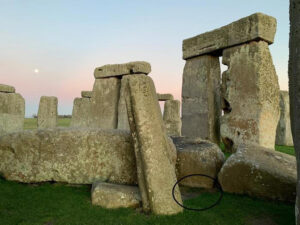
Menorca: 'Ramp'?
Fr. Quaresmio’s writing is interesting for several reasons, but I would like to underline just one: the symbolic interpretation of the Magdalene’s name. She was not only called this because she was originally from Magdala, but because she had a faith and love like a “magdala”, like a fortress. The Magdalene is like the holy city of Jerusalem, about which Isaiah sang: “We have a strong city; God makes salvation its walls and ramparts.”
'Tower of the Fish'?
'Bower' to enlarge.
Side note: A 'new city' found where Tutankhamun's temple should have been. Encircled within a snake pattern. Within its boundaries a cartouche found inscribed - on mud brick - to Amenhotep III naming it the ''shining Aten''. Also found one solitary large fish. ''Never before found in Egypt'' according to Zahi Hawass.
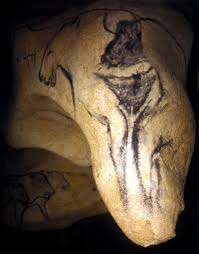
"The 'Venus and Sorcerer' panel from the Chauvet Cave." More importantly - protruding from the ceiling,i.e.,top-down? Recall what ''caves'' represent. Try Part 1. Question. 'Bear' - top-left?
Continued: To understand what is being implied - decipher those keys, i.e.,recall the position of Binah on the Hebrew equivalent of that universal ''moon tree''. Hence the link to ''waters'' and ''ark'' i.e., what it implies, i.e., sea/salt water {link to 'ark'} = 'UNmanifested aspect {something yet to be 'realised'}. Recall 'moon' {lunar, therefore 'top-down?} and 'sun' {solar, therefore 'bottom-up? represented with fresh water,i.e., in the Manifested sense of the 'word'} - symbolism,i.e.,UNknown/known {perspective?}. - as a means to impart an understanding - using 'male' and 'female' aspects {shadow/anima} to define a balance {equilibrium?} - to {project?} an understanding, i.e.,''you cant have one without the other; but one has to come before the other?"
"Mysticism is the source and root of all religions." [Quote from the book by Tomberg]. Link to the word ''Gnosis'' and what it implies, i.e.,in relation to that universal framework and/or the contents of this web page.
 From a different {perspective?}..."Swiss researcher Franz Gnaedinger has proposed that the woman's torso and genitalia represents the summer triangle, within which the young bison's head and shoulders are perfectly framed. This is an inspiring theory, although a more positive identification would be to suggest that the woman's vulva and scissorlike legs represent the area of the Milky Way known as the Great Rift {also known as the Dark Rift, Cygnus Rift, and Great Cleft}, which is framed within the summer triangle. This is the dark band of stellar dust and debris in line with the galactic plane that causes the Milky Way to appear to split into two separate streams in the region of the Cygnus constellation..." [Extract from the book 'Gobekli Tepe' by A. Collins].
From a different {perspective?}..."Swiss researcher Franz Gnaedinger has proposed that the woman's torso and genitalia represents the summer triangle, within which the young bison's head and shoulders are perfectly framed. This is an inspiring theory, although a more positive identification would be to suggest that the woman's vulva and scissorlike legs represent the area of the Milky Way known as the Great Rift {also known as the Dark Rift, Cygnus Rift, and Great Cleft}, which is framed within the summer triangle. This is the dark band of stellar dust and debris in line with the galactic plane that causes the Milky Way to appear to split into two separate streams in the region of the Cygnus constellation..." [Extract from the book 'Gobekli Tepe' by A. Collins].
Summer/Winter triangle - put them together. What ''symbol'' do you 'SEE' ?
For this reader a more telling piece of information is the fact that in ancient days the sign for Cygnus was the HEN. Enlarged elsewhere. Clue. ''Egg'' and ''Rooster'' link.
 "Analogy?..."Access to this world requires that true imagination which is the intermediary locus 'at the meeting place of the two seas' where Moses meets Khidr, the 'mundus imaginalis'. " [From the book 'The World Turned Inside Out']. Try ''Khidr''.
"Analogy?..."Access to this world requires that true imagination which is the intermediary locus 'at the meeting place of the two seas' where Moses meets Khidr, the 'mundus imaginalis'. " [From the book 'The World Turned Inside Out']. Try ''Khidr''.
'Eye of the Triangle' by I. Regardie.
Summer triangle?
Question. Coincidence or a ''meaningful'' one? Either way it endorses {proves?} the validity {benefit?} of including ALL available material - not just those that we are at ease {comfortable?} with. Yes or no?
 "All this is very interesting and might well be correct. Yet linking ice age cave art with the design of sacred enclosures created at Gobekli-tepe in southeast Anatolia thousands of years later might seem presumptuous. It is a fact, however, that in the early Neolithic, stalagmites and stalactites were removed from cave interiors and carried back to Catalhoyuk, where they were placed in cult shrines alongside statuettes, bucrania, vulture beaks, and painted frescoes of extraordinary beauty and sophistication. So many fragments from caves were found there that British archaeologist James Mellaart, who excavated the site in the 1960s proposed that the shrines at Catalhoyuk might have been the realm of chthonic deities ; that is, gods of the UNderworld. B.C. Dietrich, Ph.D., author of 'The Origin of Greek Religion', went further by suggesting that the ritual activities practiced, had formerly been celebrated in primordial cave settings, adding that: 'Though the locality of the cult may have changed, its form did not relax its curious hold on the mind of the worshipper who, over many generations, retained the aniconic stalagmite as an image of his goddess.' This of course, resonates with the manner in which the limestone cone in the Chauvet Cave was utilized in the creation of the Venus and Sorcerer panel." ['Gobekli Tepe' by A. Collins. Emphasis, this readers].
"All this is very interesting and might well be correct. Yet linking ice age cave art with the design of sacred enclosures created at Gobekli-tepe in southeast Anatolia thousands of years later might seem presumptuous. It is a fact, however, that in the early Neolithic, stalagmites and stalactites were removed from cave interiors and carried back to Catalhoyuk, where they were placed in cult shrines alongside statuettes, bucrania, vulture beaks, and painted frescoes of extraordinary beauty and sophistication. So many fragments from caves were found there that British archaeologist James Mellaart, who excavated the site in the 1960s proposed that the shrines at Catalhoyuk might have been the realm of chthonic deities ; that is, gods of the UNderworld. B.C. Dietrich, Ph.D., author of 'The Origin of Greek Religion', went further by suggesting that the ritual activities practiced, had formerly been celebrated in primordial cave settings, adding that: 'Though the locality of the cult may have changed, its form did not relax its curious hold on the mind of the worshipper who, over many generations, retained the aniconic stalagmite as an image of his goddess.' This of course, resonates with the manner in which the limestone cone in the Chauvet Cave was utilized in the creation of the Venus and Sorcerer panel." ['Gobekli Tepe' by A. Collins. Emphasis, this readers].
'Labyrinth' to enlarge.

'Thirtytwo' symbols used throughout cave art. [Genevieve von Petzinger]. Seen any elsewhere?

Charbagh gardens: But in stillness, in the shade of the Tree of Life, when we begin that inner dialogue with God that is our birthright, but which exists in its pure form only in the garden of the heart—in openness of eye and mind, there we will find the meanings and the joyfulness of those old texts, those doctrines that involve the heart, so that what they convey is not only thought, but felt. This reuniting of the thinking faculty to the heart might be described as the great secret of INNER Christianity, only it is not really a secret so much as something unnoticed because of our lack of understanding. AND/OR: That “other Christianity,” then, is still alive. The esoteric tradition is not a different form of Christianity, but an early strand in the tapestry of the Universal Church—a strand whose importance has long been forgotten, so that today it needs to be “lifted up,” to draw an analogy from the weaver’ craft, until it can once again be seen, be understood, and so be fitted back into its proper place in the fabric of the church. This is the thread of common experience that once stitched together the many churches into the One Church from which they sprang. {'A Different Christianity' / R. Amis}. 'To clothe one's nakedness'. Besides other keys highlighted "Hung" to enlarge. 'Hang'?
And/or: At Bruniquel {Southern France}, 300 meters past a tiny cave entrance an ancient circle of carefully crafted broken stalagmites. Made by Neanderthals. Fire pits found not for the use of cooking but to set fire to 'bones' that produced very little smoke, for lighting. Turns out to be 178,000 years old. Predates modern humans by 100,000 years. The oldest ever known human construction: ''This confirms the cognitive abilities of Neanderthals....But why build it?'' ['Who was the real Neanderthal?' / PBS America].
SIDE NOTE: It is in truth an ancient science, and the great hesychast master Saint Gregory Palamas wrote about it that “truly this seems to me to be a craft above all crafts, and a science above all sciences, to lead a man, the wiliest and most changeable creature.”* This craft is said to introduce us to the kingdom of heaven, in the bliss of the uncreated light of God: in the Greek this is theoria. So, say the fathers, on this Way the vision of God becomes light, and NOT fire for us.
Spirit and Soul....Which and why?
Continued: ''Previous research focussed on particular levels in the site where mammoth bones are concentrated, but this new study took a longer-term perspective, looking at how Neanderthals used it and explored the surrounding landscape for over 100,000 years.
The team, including academics from the British Museum, University College London (UCL) and the University of Wales found that Neanderthals kept coming back to this particular place, despite globally significant changes in climate and landscape. During glacial phases (Ice Ages), they travelled to the site over cold, open landscapes, now submerged under the sea. They kept visiting as the climate warmed up and Jersey became a striking highpoint in a wide coastal plain connected to France.
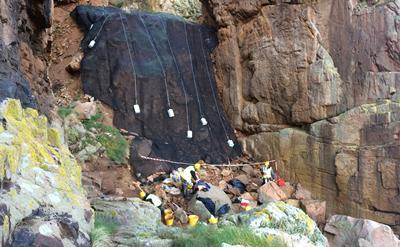
Dr Beccy Scott of the British Museum added: “We’re really interested in how this site became ‘persistent’ in the minds of early Neanderthals. You can almost see hints of early mapping in the way they are travelling to it again and again, or certainly an understanding of their geography. But specifically what drew them to Jersey so often is harder to tease out. It might have been that the whole Island was highly visible from a long way off – like a waymarker – or people might have remembered that shelter could be found there, and passed that knowledge on.” ['University of Southampton'].
N/S France.
Cliff side + Glacier to enlarge.

Hooked beak. Coincidence or a meaningful one?
Side note: The narrator Neil Oliver led into a cave {Sheffield} to be shown an Ibis bird with hooked beak on the ceiling. Elsewhere in the same program Deer antlers shown. Speculation about it being ''ritual'' - no details as to the purpose of such a ritual - other than the usual. All shortly after the last ''Big freeze''. ['World of Stonehenge' / Part 1].
Question. Is the Ibis bird native to Sheffield?
Its all about something internal NOT external. Natures examples {external} used to say {define?} something of an inner quality.
Try ''hooked'' and/or ''quality'' as opposed to say ''quantity'' {'duality' link}. Then try ''Deer'' - All as a means....?
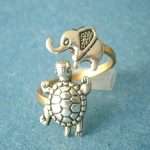 Side note: Glaciers {the 'creators' of hills/valleys} move 'backwards' northward from a southern perspective - in more {pleasing'?} warmer climates {'phases'?}. Caves exposed. The flood waters released moving in the opposite direction. Fresh water creating {'reflecting'?} lakes or 'meandering' rivers or mixing in with the salty sea. A process beginning or ending? Above or below the ''frost zone'' ? {5:9}.
Side note: Glaciers {the 'creators' of hills/valleys} move 'backwards' northward from a southern perspective - in more {pleasing'?} warmer climates {'phases'?}. Caves exposed. The flood waters released moving in the opposite direction. Fresh water creating {'reflecting'?} lakes or 'meandering' rivers or mixing in with the salty sea. A process beginning or ending? Above or below the ''frost zone'' ? {5:9}.
Question. At what stage {time?] of that retreat 'back to the 'north - was that cave in Sheffield exposed. Could a group of individuals - wanting to ''evolve'' their beliefs have followed that last glaciation as far as they could? Generation after generation. All 'members' sharing the same ideas. When were these islands first known as those at the ''back of the north wind''? Where did the likes of Hesiod or Homer or Hecataeus of Abdera {a Greek living in Egypt} get there 'ideas' from?
Oral tradition?
Refresher: ''Hecataeus of Abdera or of Teos (Greek: Ἑκαταῖος ὁ Ἀβδηρίτης; c. 360 BC – c. 290 BC[1]), was a Greek historian who flourished in the 4th century BC. Though none of his works survive, his writings are attested by later authors in various fragments, in particular his Aegyptica, a work on the society and culture of the Egyptians, and his On the Hyperboreans. He is one of the authors (= FGrHist 264) whose fragments were collected in Felix Jacoby's Fragmente der griechischen Historiker''.....No complete works of Hecataeus have survived, and knowledge of his writing exists only in fragments located in various ancient Greek and Latin authors' works, most of which concern religion. Eighth fragments are from his book about the Hyperboreans, the mythical people of the far north who reflect the Indian traditions about Uttarakuru. Six fragments survive from his Aegyptiaca and regard Egyptianphilosophy, priests, gods, sanctuaries, Moses, wine, and which makes mention of Clearchus and the gymnosophists.[6] Hecataeus wrote the work Aegyptiaca[7] (c. 320 – 305 BC)[8] or On the Egyptians (the same title of Manetho's later work.''
A work in progress: ''Samples from the Stonehenge bluestones fall into two groups: the first comprise the very few that have been taken directly from the blue stones themselves {orthostats}. The other much larger group contain the many thousands of small pieces - the so called debitage - that litter the Stonehenge landscape. Demonstrating that fragments from this latter group belong to a given orthostat and are not random rocks, or even GLACIAL erractics, has been and continues to be a challenge.'' [Page 46: 'Archaeology' / October 2022].
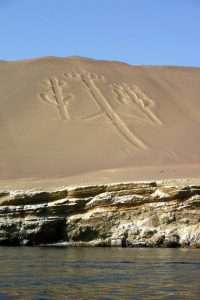
The very first symbol created by the ancestors of the Nazca people. Connects to the Humming bird figure that points {at right angles} to the rising sun at the summer solstice. The Heron figure whose beak points directly to the rising sun at the winter solstice.
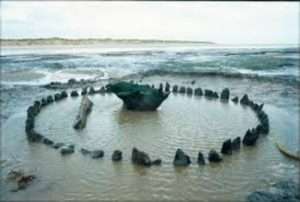
As for what the rituals at Holme I and II may have involved, Dr Nance’s paper delves into folkloric beliefs relating to the changing of the seasons, linking these to the solid wall formed by the original arrangement of Holme I’s posts, and explores ideas of the symbolic significance of the penned cuckoo, and of sacral kingship. He also highlights the monument’s alignment with the sun during the summer solstice. The full paper is published at https://link.springer.com/article/10.1007/s10708-024-11088-5.
Something extra: "The Lapwing, as Cornelius Agrippa, the early 16th century 'occult' philosopher, reminds us: 'Seemeth to have some royal thing and weareth a crown'. I do not know whether Agrippa seriously meant to include the Lapwing among royal birds, but if he did his best authority was 'Leviticus' X1,19. The Lapwing is mentioned as an unclean, that is to say tabooed, bird in the company of the eagle, the griffin-vulture, the IBIS, the cuckoo, the swan, the kite, the raven, owl, the barnacle goose, {solan goose?}, the stork, heron, and pious pelican. That these taboo's were of non semitic origin is proved by there geographical distribution: several of the birds {Ibis?} do not belong to the heat-belt which is the semitic homeland, and every one of them was sacred in Greece and Italy." [Page 49-53 'The White Goddess' / R. Graves].
N.B. ''The Greeks called the lapwing polyplagktos, 'luring on deceitfully', and had a proverbial phrase: 'more beseechful than lapwing' which they used for artful beggars.'' Same book.
Trickster?
A working example: ''Nekhen, (/ˈnɛkən/, Ancient Egyptian: nḫn) also known as Hierakonpolis (/ˌhaɪərəˈkɒnpəlɪs/; Greek: Ἱεράκων πόλις, romanized: Hierákōn pólis;[2] either: City of the Hawk,[3] or City of the Falcon, a reference to Horus;[4] Egyptian Arabic: الكوم الأحمر, romanized: el-Kōm el-Aḥmar, lit. 'the Red Mound'...The most famous artifact commonly associated with the main deposit, the Narmer Palette, ....The main deposit dates to the early Old Kingdom,[10] but the artistic style of the objects in the deposit indicate that they were from Naqada III and were moved into the deposit at a later date. The other important item in the deposit clearly dates to the late prehistoric.[12] This object, the Scorpion Macehead, depicts a king known only by the ideogram for scorpion, now called Scorpion II, participating in what seems to be a ritual irrigation ceremony.[13] Although the Narmer Palette is more famous because it shows the first king to wear both the crowns of Upper and Lower Egypt, the Scorpion Macehead indicates some early military hostility with the north by showing dead lapwings, the symbol of Lower Egypt, hung from standards.''
And/or: ''The lapwings poetic meaning is 'Disguise the secret'. and it is her extraordinary discretion that gives her the claim to sanctity. According to the Koran she was the repository of King Solomon's secrets and the most intelligent of the flock of birds that attended him.''
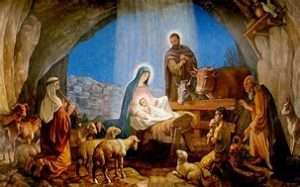
Manger: "to eat" or "to chew."
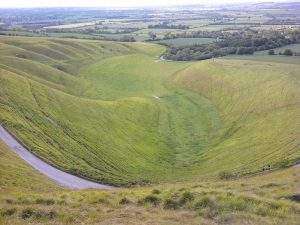
"The Manger - looking north west. The Manger is a strangely shaped valley, which is thought to have been formed by the melting of ice in the last Ice Age. Folklore suggests that the manger is the supernatural feeding place for the White Horse, which would travel from its vantage point on the crest of the hill on moonlit nights."
And/Or: ''The rabbit, though it chews the cud, does not have a split hoof; it is unclean for you. And the pig, though it has a split hoof completely divided, does not chew the cud; it is unclean for you. You must not eat their meat or touch their carcasses; they are unclean for you.'' [Leviticus 11].
A working example: ''Likewise here, on these doors of the shrine {Tutankhamun's golden one}, we see Ankhesenamun {his wife/'sister'} surrounding him with her Hathorian music, perfumes, flowers and jubilation....And now the king whom 'she' has renewed in the world in every way {'afar'?}, whom she has 'birthed' and vitalized, has become the radiant crown of Egypt....She has bestowed on this horizon king everything he needs to exercise rulership...through the radiating power of his life giving 'attraction'. The doors of the shrine wait to be OPENED, its contents wait to be revealed. Four royal cartouches, each one with a fiery uraeus {'snake'} coiled around it, each one resting on the sign for 'gold', emblazon the inner panels on each side. They proclaim the names of the king: 'The Lord of Transformations is Re' and the 'Living image of Amun, Ruler of Southern Heliopolis'. Beneath, lapwings on hieroglyphic neb signs raise human arms before a five pointed star = 'Adoration of all subjects'. And between these four 'golden' royal names Ankhesenamun brings her adoration yet again before the heavenly king, her name carved {carbon?} in the space between them {'coals'?}...'' [Page 46 'Egypt's Anointing Mysteries' / A. Roberts].

American or UN-American? Who exactly are HIS ancestors!
Side note: Analogy: ''This land i hold is the place where the Pelican Dreaming meets the Brown Snake Dreaming. It is the most sacred land, for it holds another world within it. It holds the Dreaming {'images/hieroglyphs' etc}. It holds the ancestors. It holds the future......The open PLAIN landscape is where the Dreamtime lives {'archetypes'}... It includes a mythological distant past when the CREATIVE spirits moved over the land, shaping it, NAMING it, calling it into BEING....Where those creative SPIRITS known as Pelican and King Brown Snake are said to have met {'crossroads'?}..... so that it seems that the mythic time beyond time {afar?} is overwhelming our little local time.'' [Page 12/13 'A Mythic Life' / J. Houston].
Sumerian Me's to enlarge.
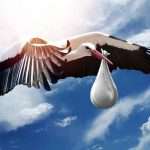 And/or: ''Yet, some wives pass year by year with no children, empty knit blankets and cleverly crafted cradles waiting at the hearth-side. The hope and gleam in their eyes dwindles and their patience washes out to sea like the chalk cliffs, pain etched deeper by each wave. Wishes gone unanswered, prayers unfulfilled... but then in the sad oceans of their minds, a half-forgotten memory of a tale surfaces and washes up in a fading dream. The adebarsteine. The offering. The storks. Desperation turns the warning veneer of old tales transparent. The wives remember a child's tale filled with sweets and storks and babies brought by birds. So silly, but they dare not dismiss even this least likely chance. Storks with their smooth bodies, white feathers and regal bearing. What could be more gentle? The last traces of fear slough off as easily and softly as preened down feathers.
And/or: ''Yet, some wives pass year by year with no children, empty knit blankets and cleverly crafted cradles waiting at the hearth-side. The hope and gleam in their eyes dwindles and their patience washes out to sea like the chalk cliffs, pain etched deeper by each wave. Wishes gone unanswered, prayers unfulfilled... but then in the sad oceans of their minds, a half-forgotten memory of a tale surfaces and washes up in a fading dream. The adebarsteine. The offering. The storks. Desperation turns the warning veneer of old tales transparent. The wives remember a child's tale filled with sweets and storks and babies brought by birds. So silly, but they dare not dismiss even this least likely chance. Storks with their smooth bodies, white feathers and regal bearing. What could be more gentle? The last traces of fear slough off as easily and softly as preened down feathers.

Stork or Crane or does it matter?
By the pale blush of starlight and the moon glow on luminous cliffs each decides to try this far-fetched plea, but no woman dares to tell another for fear of shame and desperation revealed. Small feet, quiet feet in soft shoes steal into the night, for these things must always happen in the night. Past the sleeping village and beyond the dark oak trees the women go, each in her own time, down to the sea. A rocky shore where pebbles are stacked in tiny cairns {'white ones'?}, each a game of gravity. There the whisper of waves and the rasp of the spray beckon, each surge of water a tongue licking at the stone.
Like altars, the adebarsteine wait.
Side note: ''Gravity'' in relation to: ''it is said that attraction from above {i.e., in the 'spiritual' SENSE of the word}, is as real as that from below.'' [Letter xii The Hanged Man. Page 306/7 'Meditations on the Tarot'].

''The Birth of the New Man.''
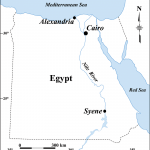
S/W?
And/or: ''In the mortuary complex at Hierakonpolis {'City of the Hawk'}, surrounding Tomb 16 (Fig. 1), ostrich egg- shells were also abundant and occurred in well-defined clusters {'carbuncle'?}. During the 2009 excavations of the fenced enclosure around Tomb 18 (see Friedman etal. this volume), several clusters of large shell fragments were found in the interior south-western corner of the tomb enclosure in conjunction with a mud plaster ring (Fig. 4). Presumably, the eggs had been placed in the ring, or ‘egg-cup’, in ancient times, as some fragments were still present within it. The size, position and quantity of the fragments in these clusters suggest that the shells had been whole at the time of deposition, but were subsequently broken and the fragments neatly stacked....Whole ostrich eggs, often in conjunction with pottery strainers, were also relatively common in A-Group graves, placed mainly (but not exclusively) with children in a practice that H.-A. Nordstrom (1972: 122) suggests may reflect a religious or social custom connected with childhood....''
Ishon to enlarge.
'Chick'?
Side note: ''Stacked'' = 'long' link?

When the north wind blows. Heading south? Ostrich feathers?

The hand of Sabazios. Thumb = pinecone?
Also found - that of a child with a necklace of about 60 roughly made beads in situ around its neck, and Burial 333, in which two small eggshell beads were found in a basket with a variety of other special objects and materials (Friedman 2003). In the elite cemetery at HK6, only four eggshell beads have been recovered during recent excavations, and when this amount is contrasted with the total amount of eggshell fragments collected in the elite cemetery, it is clear that ostrich eggshells were not in common usage, nor were they commonly being fashioned into beads. Set within this context, the rare whole ostrich eggs founds in Upper Egyptian graves take on added significance. A search of the literature revealed only four whole eggs with known provenance in tombs, all of which were amongst the richest in the cemeteries. At Naqada, Tomb 1480 contained a fragmentary decorated egg said to be found in the place of the owner’s missing head (Petrie & Quibell 1896: 28; Payne 1993: no. 2014). The tomb also contained copper finger rings and a variety of ivory ornaments (Baumgartel 1970: XLV)....More recently, the discovery of an intact egg carefully cached within a jar in the shrine at Tel el-Farkha (Cialowicz 2008, this volume) also indicates a special regard and meaning that operated beyond
in the funerary sphere.'' ['Analysis of Predynastic Ostrich Eggshells from Hierakonpolis' / Internet].
Head Jar to enlarge.

Any 'feathers'?
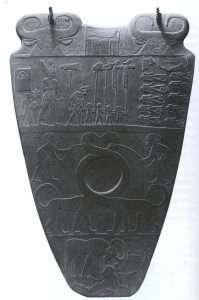
Narmer Palette. 'Middle' ground? Three dimensional 'coloured' ovoid?
''Ostriches normally spend the winter months in pairs or alone, but during breeding season they live in groups of five to 50 birds led by a top hen or queen and often travel together with other grazing animals. They are sexually mature when they are around two to four years old, and carry out rather elaborate mating rituals. A dominant male will usually have a ‘harem’ of two to seven (usually three) hens, one of which is the queen. He will mate with all of the females. Breeding is spurred by various environmental factors mainly related to the availability of food. In Sudan, the breeding season begins in October–December and continues into May and June, peaking mid-season (Cooper et al. 2009: 1674). When the birds are ready to lay their eggs, the male will dig a simple pit in the sand around 45 cm deep and 3 m wide. The queen will lay her eggs first and the other females in the harem (among others) later lay their eggs in the same nest, with up to 18 contributors recorded in modern times. The nest may contain fifteen to forty eggs, but typically around twenty–twentyfive.''
Continued: ''Each wife filled with a dwindling dream of motherhood shucks off her shoes and hitches up her skirts. It is only ever a short wade to the stork stones. Knee deep into the Baltic, generations of barren wombs and hope-filled hearts make this pilgrimage and then set the bag of 'sweets' upon the rock. Sugar, pure and white and sweet. It seems an easy trade.

Wife Swap for kneepads? Any shortage during covid?

Pebbles?
A bag of precious confections, cakes, candies and sugared bits left upon the adebarsteine. In return, each woman takes one small pebble, a bit of grit no larger than a grain of sand and swallows it with a mouthful of the Baltic Sea. With eyes squeezed shut and a final, fervent prayer each wife flees the shore to duck back into their cottage, slip quietly back beneath the down coverlet.'' ['A Little Ink More or Less' / internet].
'Ducks'?
REFRESHER: ''This land i hold is the place where the Pelican Dreaming meets the Brown Snake Dreaming. It is the most sacred land, for it holds another world within it. It holds the Dreaming {'images/hieroglyphs' etc}. It holds the ancestors. It holds the future......

Mad, bad or just sad?
The open PLAIN landscape is where the Dreamtime lives {'archetypes'}... It includes a mythological distant past when the CREATIVE spirits moved over the land, shaping it, NAMING it, calling it into BEING....Where those creative SPIRITS known as Pelican and King Brown Snake are said to have met {'crossroads'?}..... so that it seems that the mythic time beyond time is overwhelming our little local time.'' [Page 12/13 'A Mythic Life' / J. Houston].
Mercurius and/or the Hopi Great Spirit Masau'u ?
Dream Stela?
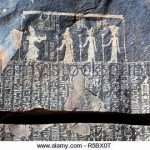
A ''crack'' in time?
A Working example: ''Khentiamenti comes to him. He has brought him the 'food' of Horus, who is at the Head of His Houses. On what he lives - Unas lives on it. On what he eats, Unas eats. On what he drinks Unas drinks. One 'joint' and one CAKE - this is his Offering. [Taken from 'The East Gable of the Sarcophagus Chamber. South to North}.
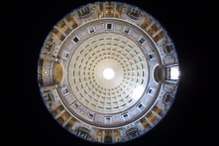
Oculus = ''Bulls eye''.
Continued: {from the West Gable - of same -NORTH TO SOUTH}: ''A Serpent is Entwined by a Serpent - when a young HIPPO coming on the 'pasture' is entwined - Earth - swallow that which came out of you! Monster, lie down and glide away. The Majesty of the Pelican falls in water, serpent TURN OVER, that Re may see you! The head of the great black bull is cut off....Scorpion, turn over and glide into the ground....A face falls on a face. A face has seen a face. The 'mottled' knife, black and green, went forth against it. It has 'swallowed' that which it tasted. This is the CLAW of Atum....Upon the Dorsal backbone {''vertebrae''} of the serpent which stopped the strife in Heliopolis...Two kites stand by...The mouth of the Followers tool is closed by the Lynx....'' ['Page 35 'The Pyramid Texts' / W. Budge].

Decorative gable roof at 176–178 St. John's Place between Sixth and Seventh Avenue in the Park Slope neighborhood of Brooklyn, New York City.
A gable is the generally triangular portion of a wall between the edges of intersecting roof pitches. The shape of the gable and how it is detailed depends on the structural system used....
Gable style is also used in the design of fabric structures, with varying degree sloped roofs, dependent on how much snowfall is expected. Sharp gable roofs are a characteristic of the Gothic and classical Greek styles of architecture.[1]The opposite or inverted form of a gable roof is a V-roof or butterfly roof.

'Three and four'?
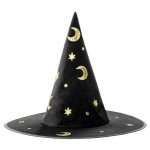 Continued: A working example: ''In the sarcophagus chamber of the pyramid of Unas, there are SEVEN east gable utterances, the main theme of which is the physical and spiritual nourishment of the king. These 7 texts are in a discrete sequence, as are the seven texts on the OTHER side of the wall {'fourteen' in total?} - on the antechamber west gable being that of the king's celestial rebirth {i.e., 'seventh heaven'}....Both sets of texts were incorporated into a single text at a later date.'' [Page 225 'Shamanic Wisdom in the Pyramid Texts' / J. Naydler].
Continued: A working example: ''In the sarcophagus chamber of the pyramid of Unas, there are SEVEN east gable utterances, the main theme of which is the physical and spiritual nourishment of the king. These 7 texts are in a discrete sequence, as are the seven texts on the OTHER side of the wall {'fourteen' in total?} - on the antechamber west gable being that of the king's celestial rebirth {i.e., 'seventh heaven'}....Both sets of texts were incorporated into a single text at a later date.'' [Page 225 'Shamanic Wisdom in the Pyramid Texts' / J. Naydler].
''The word for ''wisdom'' {sai} is identical with the phrase for ''to be sated'' or ''full up'' after a meal. It is the opposite of emptyness {shu}. [Page 230].
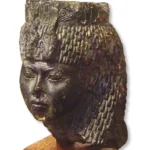
Tiye.
And/or: ''Of the five Old Kingdom Pyramid Texts found in the tombs at Saqqara, the text of the 5th Dynasty pharaoh Unas is the oldest. The appearance of these hieroglyphs is unusual in many respects, primarily because the religious texts seems to appear full-blown in the midst of the Old Kingdom.

Sat with hands on knees?
Perhaps the words were a long time coming, developed in an oral tradition over many centuries before they were inscribed. Perhaps they were ancient scripts developed by another culture, and Unas decided that they should be written at last in stone and kept for all time. Perhaps they were part of an overall plan laid down for Saqqara {Imhotep?} - that included the huge Jubilee or Heb-Sed initiation complex. Certainly the words are a kind of initiation - whether welcoming the soul into the afterlife or initiating the spirit infused body into the world. The text forms a kind of DREAMSCAPE {Akhet/Akashic} in which Unas takes on the role of Osiris.'' [Page 228 'Imagining the World Into Existence: An Ancient Egyptian Manual of Consciousness'].
N.B. Saqqara also on a PLAIN - a limestone one.
Flood Plain? as opposed to {say} valleys/mountains?
And/or: ''Akhet usually translates as ''horizon'' - it should be understood as the place where the king undergoes a transformation into an akh, or ''shining spirit''...It is associated with a kings coronation and the kings status as ''son of Ra'' {from the 4th Dynasty onwards}.'' [Page 208 'Shamanic Wisdom in the Pyramid Texts'].
'Djedefre' / ''Meridian of the Sun'' to enlarge.

Ducks?

The 4th Way? 'Kundalini'?
A working example: ''Proclaimed on the facade of the temple of Ramses at Abu Simbel - Ra is seen to rise because of his love for Nefertari, just as it is said that he comes forth in order to see Hathor's loveliness at Dendara. Here it is the Queen who compels him to 'SHINE'. Hers is the power to move the 'sun' in its heavenly circuit. Love, harmony and beauty radiate from her sacred dwelling, AND how could it be otherwise when she accompanies a king ruling as ''son of Ra?'' Twice a year, around the modern calendar dates of twentytwo of october and 22 February, the great temples full glory is revealed at sunrise....Solar rays 'creep' slowly down the central aisle {'corridor'?} illuminating - with the life giving warmth - four figures in the sanctuary. Baboons are seen on the outer facade greeting the rising sun. IN CONTRAST, unlike the great temples orientation almost due east, the axis of Nefertari's temple lies in a southeast- northwest direction, so sunlight never reaches further than the entrance porch.'' [Pages 12-13 'Hathor's Alchemy: The Ancient Egyptian Roots of the Hermetic Art' / Alison Roberts].

'Opening of the mouth'? Swan Upping?
Side note: "Snakes use different movements and most snakes will slither, but even though they have no limbs snakes can also crawl in a straight line by using the muscles and the skin on each side of their body to produce the rectilinear movement that caterpillars use....It’s true that we mostly use slither to describe a snake’s movement and it almost feels synonymous to snakes. Even in Harry Potter, we have the house of Slytherin, not Crawlerin."
Refresher: "The fourth way is sometimes is called the 'way of the sly man'. The 'sly man' knows some secret which the fakir, monk and yogi do not know. How the 'sly man' learned this secret is not known. Maybe he found it in some old books, perhaps he inherited it, perhaps he bought it, or stole it from someone. It makes no difference. The 'sly man' knows the secret and with its help outstrips the fakir, the monk and yogi." ['In Search of the Miraculous'].
Any 'navels'?

Aswan?
"You think you can deceive me Barrel Rider? You have come from Lake Town. There is some sort of scheme hatched between these filthy dwarves and those miserable tub-trading Lake men. Those slithering cowards with there long bows and black arrows. Perhaps it is time i paid them a visit." {'The Hobbit: The Desolation of Smaug'].
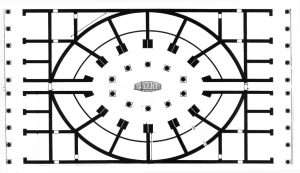
'Bathing' / 'court' to enlarge.
Continued: "A peristyle column is a type of column that is part of a peristyle, which is a continuous porch formed by a row of columns surrounding the perimeter of a building or a courtyard 1. The word peristyle comes from the Greek word περίστυλον, which means “surrounded by columns/pillars” 1. In ancient Greek and Roman architecture, a peristyle was used to create a sense of openness and connection between the interior and exterior spaces of a building 1. The columns or square pillars surrounding the garden supported a shady roofed portico whose inner walls were often embellished with elaborate wall paintings of landscapes and trompe-l’œil architecture 1. The peristyle in a Greek temple is called a peristasis 1. In Christian ecclesiastical architecture, a courtyard peristyle and its garden came to be known as a cloister."
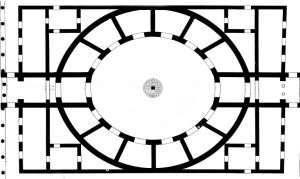
Chester / Naucratis to enlarge.
And/or: "Both colonnade and peristyle are correct terms, but they refer to different architectural features. A colonnade is a series of columns that support a roof or entablature, whereas a peristyle is a colonnade that surrounds a courtyard or garden. In other words, a peristyle is a type of colonnade."


Leading a duck to water? Cuddy ducks?
REFRESHER: ''Every valley shall be lifted up, and every mountain and hill made low; the uneven ground will be made smooth, and the rugged land a plain, and the glory of the lord will be revealed...'' {Isaiah 40:4}.
Analogy: ''Ostanes and his companion say to Cleopatra: ''Make known to us how the highest descends to the lowest, and the lowest ascends to the highest, and the midmost draws near to the lowest and the highest, so that they may be made one with it.'' [Page 154 'Alchemical Studies'].
And/or: ''This ''midmost'' is the stone, the mediator which unites the opposites. Such sayings have no meaning unless they are understood in a profoundly psychological sense.'' [Page 99].
Ishon to enlarge.
Station of No Station?

Where have you seen those 'eyes' before?
 A working example {in the present tense and moment of the WORD}: ''I do podcasts about theories and stuff - weird and wonderfull stuff....One of my theories is that i believe hieroglyphs are actually from the future and their basically just emoji's - because we are getting to the point where our words are getting shorter as when we send messages etc....So i think the pyramids are from the future and its hieroglyphs are just emoji's. Thats how we are going to talk in the future because we cant be bothered to write.'' [Scarlett - 'Pilgrimage' / BBC2 / 2022].
A working example {in the present tense and moment of the WORD}: ''I do podcasts about theories and stuff - weird and wonderfull stuff....One of my theories is that i believe hieroglyphs are actually from the future and their basically just emoji's - because we are getting to the point where our words are getting shorter as when we send messages etc....So i think the pyramids are from the future and its hieroglyphs are just emoji's. Thats how we are going to talk in the future because we cant be bothered to write.'' [Scarlett - 'Pilgrimage' / BBC2 / 2022].
Rebus?
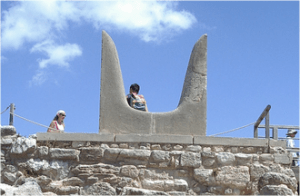
Bull by the horns? Oculus?
And/or: A work in progress: Hieroglyph of an Ibis bird between two ancient stork birds as seen on a mountain side South of Karnac { El-Khawy} - an ancient trade route {amber route?}- The ancient symbol of the ''horizon'' sign. Found also in the tomb of the Scorpion King at ABYDOS. That together with the horned bull hieroglyph = ''Royal power equals solar power - The king on earth is as the sun in the sky.''
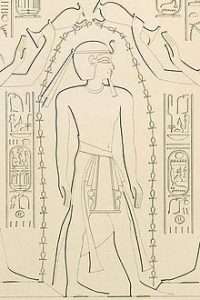
Closing a 'gap'?
Many 'bull' skeletons {with horns} found in enclosed walls surrounding the palace of Ramesses at Abydos - placed there with deliberate intention in the Ptolemy era . That same ''palace'' that was found after following the limestone path that led from the temple built by same {Ramesses}. From an ''open entrance'' that later on became bricked up. Ramesses identifying with the Scorpion king as the Ptolemy with Ramesses. This subject being the COMMON factor. ['Lost Treasures of Egypt'/ Nat. Geo].

'Knots' to enlarge.
Refresher: ''The marriage of opposites...the theme of alchemy....is the essence of the practice of the law of the Cross. The Cross is the union of two pairs of opposites. Two vertical and two horizontal. The eagle and bull are vertical opposites - towards the heights and the depths, the general and particular. The angel and lion = the other opposites. The transformation of combative courage into moral courage.'' [Page 259 'Meditations on the Tarot'].
And/or: ''The labyrinth is a reflection of the labyrinthine canals of the inner ear that regulate balance on the ground, for to slay the minotaur, or engage with the vitality of life, is to do so in a balanced way, in a way that harmonises the VERTICAL of the quest, the journey for vision, and the HORIZONTAL of the ground {sensation}....Theseus and Ariadne {spirit and soul} together provide the alchemy of relationship necessary to release instictual vitality from its routine existence and ENTRAPMENT at the heart of the labyrinth.'' [Page 198/201/2 'Fruits of the Moon Tree' / A. Bleakley].

Feet first or head first as in a ''birthing''.
Continued: ''In Egyptian Mysteries, Thoth is an Ibis headed scribe in the underworld, recording the judgements passed by Maat {'Truth'} as souls are weighed against a feather. In European mysteries, Odin's languages are bound up in a bag made from the skin of a crane....
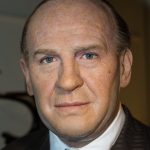
A humanist: "Schindler had given his people a gift without price." {Schindler: The Real Story 1982}. R.I.P.
As the stork is the bringer of new birth, as a baby in a bag, so the crane in European lore was seen to be the herald of Spring, flying overhead in patterned flocks from southerly parts as winter retreated....a bag that promised a gift of re-birth - in this case an initiation through language as symbol.'' [Page 74/284 'Fruits of the Moon Tree' / A. Bleakley].
'V' ?
{YHVH}.
And/or: ''Where gods have 'gathered', the HEART grows still. A procession of Jabiru {stork} walk, laying the eggs of other lives, of blue souls in another time. Incense rises where gods gather. Heaven and earth are long dreams weighed in the balance....Beautiful is the new sun sailing in a river of sky in the boat of morning. A thousand beads of thought on a white string.'' [Page 44 {Kindle} 'Awakening Osiris' / N. Ellis].
Recall the ''gathering'' of items in Tut's tomb and the West Kennet LONG Barrow. And the ''gathering'' of mummified bodies in the Valley of the Kings which included Seti 1.

'T' ?

Ibis between two storks. Earliest known carved symbols in Egypt.
''The jabiru (/ˌdʒæbɪˈruː/ or /ˈdʒæbɪruː/; Jabiru mycteria) is a large stork found in the Americas from Mexico to Argentina, except west of the Andes. It sometimes wanders into the United States, usually in Texas, but has been reported as far north as Mississippi. It is most common in the Pantanal region of Brazil and the Eastern Chaco region of Paraguay. It is the only member of the genus Jabiru. The name comes from a Tupi–Guaraní language and means "swollen neck".''
Side note: ''The Golden Triangle is an area of Southeast Texas between the cities of Beaumont, Port Arthur, and Orange. The term more generally refers now to the entire Beaumont-Port Arthur-Orange metropolitan area, forming the triangle.''
Continued: ''The name jabiru has also been used for two other birds of a distinct genus: black-necked stork (Ephippiorhynchus asiaticus), commonly called "jabiru" in Australia; and sometimes also for the saddle-billed stork (Ephippiorhynchus senegalensis) of Sub-Saharan Africa. In particular, Gardiner's Egyptian hieroglyph G29, believed to depict an E. senegalensis, is sometimes labeled "jabiru" in hieroglyph lists. The Ephippiorhynchus are believed to be the jabiru's closest living cousins, indicating an Old World origin for the species.[3]
''Shedshed'' to enlarge.
 And/or: ''The relation between Caer Sidi and Caer Arianrhod seems to be that the burial place of the dead king was a barrow on an island, either in the river or the sea.....The evidence of the oak coffin on the Isle of Avalon points to same in relation to the Arthur cult from the Eastern Mediterranean by way of the Amber Route, the Baltic and Denmark between 1600-1400BC....In Wales it was Caer-droia...In Britain it became Easter Maze dances...known as Troy Town..a remnant of what is known as Spiral Castle....In Delos it was called the Crane Dance and was said to record the escape of Theseus from the Labyrinth...As far as N/E Russia AND S/E Europe.''...AND/OR: ''Mercury in Egypt was Thoth, the god whose symbol was a crane-like white ibis, who invented writing and reformed the calander {Julian/Gregorian?}. Cranes fly in a V formation and all characters of the early alphabet were nicked by a knife on the rind of boughs or on clay tablets, which were naturally angular.....Cranes migrate from the Tropic of Cancer to the Artic Circle and back twice a year, flying in chevron formation with loud trumpetings at a great height, and this must have attached them to the Hyperborean cult as messengers flying to the other world - at the back of the North Wind.'' [Page 107/221/ 227: 'The White Goddess' / R. Graves].
And/or: ''The relation between Caer Sidi and Caer Arianrhod seems to be that the burial place of the dead king was a barrow on an island, either in the river or the sea.....The evidence of the oak coffin on the Isle of Avalon points to same in relation to the Arthur cult from the Eastern Mediterranean by way of the Amber Route, the Baltic and Denmark between 1600-1400BC....In Wales it was Caer-droia...In Britain it became Easter Maze dances...known as Troy Town..a remnant of what is known as Spiral Castle....In Delos it was called the Crane Dance and was said to record the escape of Theseus from the Labyrinth...As far as N/E Russia AND S/E Europe.''...AND/OR: ''Mercury in Egypt was Thoth, the god whose symbol was a crane-like white ibis, who invented writing and reformed the calander {Julian/Gregorian?}. Cranes fly in a V formation and all characters of the early alphabet were nicked by a knife on the rind of boughs or on clay tablets, which were naturally angular.....Cranes migrate from the Tropic of Cancer to the Artic Circle and back twice a year, flying in chevron formation with loud trumpetings at a great height, and this must have attached them to the Hyperborean cult as messengers flying to the other world - at the back of the North Wind.'' [Page 107/221/ 227: 'The White Goddess' / R. Graves].
90/180?
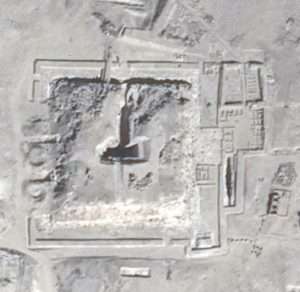
In a ''ritual pit'' - as described by Zahi Hawass - while looking for the tomb of Nefertiti - can be seen among other 'archetypal' tools - a wooden form in a similar shape to the above.That same shape that can be seen supporting the backs {'spine'?} of many a standing statue. From 'heel' to the 'back of the head'.
What was found around the corner {'bend'} from Abydos. Within the Qena Governorate. That very first one ever found - that one of the Ptolemies is associated with. Was an expert on.
Try ''Upright'' to get into that MIND SET.
From 90 - 180 as a means....?
From a different perspective: ''I have already said too little and too much about the Stone of the Philosophers. Why should i not speak more plainly still? Why shouldn't i, too, prise open a small door in the King's shut palace? [ Page 369 'Mercurius' / P. Harpur].
To understand the significance of the ''Lapwing'' try ''Battle of the Trees'' what the author R. Graves defines as: ''The most important religious event in pre Christian Britain.''

Analogy: Hieronymus Bosch. 'Between Heaven and Hell'. 'Tower' for a seat. Semi-circular {180 degrees?}. Birds above. 'Excrement' below. A 'cauldron' for headgear. Mr Bosch was well aware of subject material. [Page 415 'The Secret History of the World'].
The fabled ''Sea People''?

The same symbol found represented on top of their temple. Lower of the Higher? or put another way 'Higher' of the 'lower'?
And/or: ''In an episode known as the temptation of Saint Antony....he was granted a vision of the 'devil' - a tall black man with his head in the clouds. He also 'saw' angels who were able to guide some human spirits up, beyond the devils reach.'' [Page 329 'The Secret History of the World' / J. Black].
Higher of the 'lower' ? Therefore the ''Cloud People'' = lower of the 'higher'? {Beginnings of}.
'See' it?
Question. Any lotus found nearby?
'The Cloud of UNknowing'.
''They were followed by a cloud by day and a fire by night.''

Bleeding Russia dry: Mother Russia ''humiliated''?

Oleg Penkovsky. The real hero.
Side step: ''The first bus {'chariot/car'?} in Britain to be powered by excrement ran from Bristol to Bath on the Number Two route.'' [QI Elves].
A working/practical example: ''Some of the 108 dream symbols found in Kenhirkhopeshef's book are images {recall Part 1} - that may appear in an individuals dream life. Certainly they also appear in the various chapters of the Book of the Dead, which were carved upon the tomb walls in the Valley of the Kings and Queens. The dream book for example, mentions a man eating his own excrement , while in the Book of the Dead there appears an underworld guardian of the gate whose name is Eater of His Own Excrement.'' [Page 108 'Imagining the World Into Existence: An Ancient Egyptian Manual of Consciousness' / N. Ellis].
'108' ?
Analogy: The Dung Gate in the Valley of Hinnom - S/W Jerusalem {Kathleen Nichols/Magdala}.
Dung ball of the Scarab Beetle?
''The fastest bus in the world is powered by cow dung.'' [QI Elves].
''The Pyramid Texts are the oldest ancient Egyptian funerary texts, dating to the late Old Kingdom. They are the earliest known corpus of ancient Egyptian religious texts.[1][2] Written in Old Egyptian, the pyramid texts were carved onto the subterranean walls and sarcophagi of pyramids at Saqqara from the end of the Fifth Dynasty, and throughout the Sixth Dynasty of the Old Kingdom, and into the Eighth Dynasty of the First Intermediate Period.[3][4] The oldest of the texts have been dated to c. 2400–2300 BCE. Unlike the later Coffin Texts and Book of the Dead, the Pyramid Texts were reserved only for the pharaoh and were NOT illustrated.''
'Set in Stone'.
Question. Illustrated with what pigment. From what is it made?
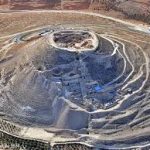
A neter?
''The spiritual food chain is the light and life chain. In any process of digestion what is useful is incorporated into the body; what is not useful passes away to become fertilizer for new growth. Through death matter is transformed into other matter. If the gods are neters, the embodiments of nature - then we eat them all the time...'' [Page 337 'Dreams of Isis'].
And/or: King John does an ''about u-turn'' near the Wash at Norfolk - due to dysentery or something similar. Returns back 'the long Way' - to where the journey started. While his 'treasure chest' takes a 'short cut' across 'marsh ground'. Keeps a written record of daily activity which is as yet unpublished. The verdict being ''someone of a controlling nature that he could use against the person/s if he had to....'' ['Expedition Unknown: King John'].
Coincidence or a mind set?
Can something be found from it?
Refresher: ''Hidden in the depths of our being is a treasure house as well as a rubbish pit.''
Working example: 'Pits' found at Bulford, just OUTSIDE the only double henge - known to date - in the British Isles; N/E of Stonehenge: Axe heads {Green polished Cornish flint}, and chalk balls found within: Most had same items within but a few had auroch cow bones {not bull?}. ONE pair of horns found. ['Digging For Britain'].

Ragged Robin.
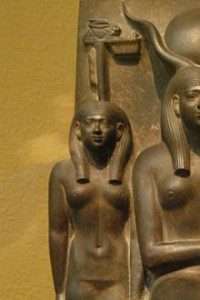
Hare - top left corner. Boudica to enlarge.
''Bulford is a village and civil parish in Wiltshire, England, close to Salisbury Plain. The village is close to Durrington and about 1.5 miles (2.4 km) north of the town of Amesbury. The Bulford Camp army base is separate from the village but within the parish. The Salisbury Avon forms the western boundary of the parish, and the village is near the confluence of the Nine Mile River with the Avon. The Bulford Kiwi – a large chalk representation of a kiwi – is on a hill above the village. Evidence of occupation of the area in the late Neolithic era is provided by many round barrows on the downs.[2] A Bronze Age boundary ditch is in the northeast of the parish.[3]
The 1086 Domesday Book recorded 39 households at Bulford, within an estate of Amesbury Abbey. The name is derived from the Old English bulut ieg ford meaning 'ragged robin island ford'.[5] It is recorded in the Wiltshire Charter Rolls of 1199 as Bultiford and as Bultesforda in 1270. It is then recorded as Bulteforde in the Ecclesiastical Tax Records of 1291.''

Begins at the left foot of Orion.
''A ford is a shallow place with good footing where a river or stream may be crossed by wading, or inside a vehicle getting its wheels wet.[1] A ford may occur naturally or be constructed. Fords may be impassable during high water. A low-water crossing is a low bridge that allows crossing over a river or stream when water is low but may be treated as a ford when the river is high and water covers the crossing.''
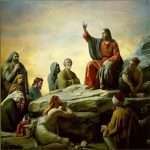
Above or below the clouds?
Continued: From a different perspective: "Do you think i am not subject to them as you are?'' retorted the sculptor. ''But when this happens, i am, as you say, in bad shape. I make my way up the ladder of my desire and go above the clouds that are making me sad, and from the top i look down at the reason for my bad mood. Seen from afar, outside the bilious reactions, they diminish in importance and i can even consider them impersonally, as if they belonged to someone else. Then i weigh them in terms of my essential goals, as i can easily distinguish that which i am obliged to undergo from that which i can eliminate." ['Journey Into the Light'].

With or without his chariot {'car'}?
Arthur's Seat (Scottish Gaelic: Suidhe Artair, pronounced [ˈs̪ɯi.əˈaɾt̪ʰəɾʲ]) is an ancient volcano which is the main peak of the group of hills in Edinburgh, Scotland, which form most of Holyrood Park, described by Robert Louis Stevenson as "a hill for magnitude, a mountain in virtue of its bold design".[1] It is situated just to the east of the city centre, about 1 mile (1.6 km) to the east of Edinburgh Castle. The hill rises above the city to a height of 250.5 m (822 ft), provides excellent panoramic views of the city and beyond, is relatively easy to climb, and is popular for hillwalking. Though it can be climbed from almost any direction, the easiest and simplest ascent is from the east, where a grassy slope rises above Dunsapie Loch.
Continued: ''Stalagmite formations found on some of the bones within a prehistoric cave {'Merlins' cave}. On the side of a very steep cliff like 'hill'. Skeletons found at the cave entrance - one of which - a giant of a man - who is speculated to be the 'guardian of the cave' {gate?}. Flint/teeth and cow bones found, i.e., 'knuckle of leg' {'knee' link}. All enlarged elsewhere.
Bruniquel ?
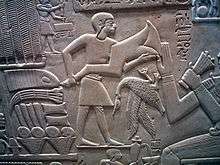
Have they been 'forgotten'? Lotus? in the form of the 'thigh'? Something 'joined at the hip' ?

Mad, bad or just sad?
"For archeologists burial sites can offer precious clues about how our ancestors lived and died. But sometimes they can surprise us with insights into what seem strange beliefs and rituals long since forgotten." [Alice Roberts quote, same program, 'Digging For Britain' / episode 1].
"Error runs down an inclined plane, while truth has to laboriously climb its way up hill". Anything?
Different time, different place, different culture..."All alone, Humberto made his way through seemingly endless corridors and pathways in the rock. There he found something unheard of and unduplicated anywhere in Mayaland. Scattered throughout the caves were altars made of stalagmite and stalactite columns. And around these altars were 'offerings' that had been made perhaps a thousand years before, untouched in all that time. Each of the hundreds of clay pots, implements, images, and querns that had been offered up to the rain god, Chac, rested just where it had been placed by ancient Mayan hands in some long-ago ceremony. Nothing within had ever been seen or touched in all the years since the cave was sealed from human view." [ From the book by 'D. Melchizedek].
'Quern' in relation to 'Pole' . "Then we entered a different part of the cave, where an enormous stalagmite had millions of years ago joined as one with an equally enormous stalactite, creating a giant pillar at least twenty meters high. Around the pillar were offerings that had been left there by the Mayans long ago. Prayer pottery and vessels were arranged on the ground all around this central column, just as they had been for hundreds and thousands of years. [Same book].
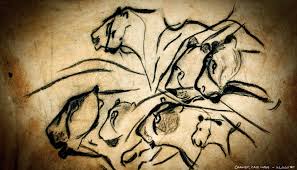
Pictures from within the same french cave system. Question. Lions or bears or a 'transformation' of both? Notice the leg {or thigh?} in the 'middle' of the {menagerie?} - that becomes a focus or anchor {pole?} point - in order to evaluate the parts within the whole. Question 2. Why the 'upper' half ONLY i.e.,why no 'tails' ? N.B. Most scenes = right - left. Why? And 'lion' = E/W? 'bear' S/N?
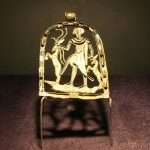
'Shed' to enlarge
"Be aware of the Pole Star in the center of the Northern sky before you, situated at the tail end of Ursa Minor, and, circulating about it, the Northern constellations of Draco, Ursa Major, Casseopia, and the house - like 'form' of the chair ['seat' link] of Cepheus. Learn to become familiar with the patterns of the stars; they hold the ancient starry wisdom... ....Imagine that you hold in your hands a circular disc that is in fact a black mirror, of polished stone, that reflects whatever part of the sky whose image you catch in its depths, and which also imparts to you intuitively the meaning of the patterns. Then be aware that you also have a shield that on the outside is of a similar substance and which shines forth your own particular sigil that expresses the innermost 'star' of your being, whilst the inside of your shield is like a brightly polished silver mirror, that enables you to see yourself in the utter clarity of perceptive wisdom." [The Rose Cross and the Goddess' by Gareth Knight]. Try ''shield''.
Refresher: ''The star of your being is rising.''
''Westward leading still proceeding - guide us to thy ......?''

Male/Female. Fire AND water? Midriff {'navel'?}. Upside down = 'Rightway' UP? Southern Hemisphere V Northern one?
Shed and Isis mentioned in the documentary - 'Blowing Up History: Egypt's Buried City' S6 EP1 - Together with: ''Folding chairs have been known to have existed since the second millennium BC. Only a few dozen ancient examples found in Europe - most of them in early medieval WOMENS burials...Symbols of high social status {'nobles'?}. Used as official insignia of bishops and representing royalty....In central Germany an iron chair found at the feet of a woman {600AD} - also buried with ''a necklace made of glass beads and a belt with dangling beads and brooches.'' [Page 10 'Archaeology' / Nov/Dec 2022].
A working example: "The burial chamber of Hetepheres I included many beautiful objects made of gilded wood, including a portable pavilion, a carrying chair, a bed, several wooden boxes and two armchairs. The wooden artifacts were very well preserved."
And/or: ''Found in the Annex amidst a group of domestic furniture, this elaborately inlaid wooden chair was considered by Carter to have been most likely a "chair of state" or an "ecclesiastical throne". In form, the chair is a composite, uniting the curved seats of ordinary stools, the legs of folding stools, and the back, with its three vertical supports, of chairs commonly found in the New Kingdom and before. The crossed legs ending in the heads of fowl are parallel to the legs of an imitation folding stool found in the Antechamber. The borders of the seat, made of ebony, inlaid with ivory, imitate the hide of an animal, while the seat itself is composed of inlays of stained ivory arranged in panels imitating insets of a variety of skins. The underside of the seat is covered in real leather. The floral motif between the legs, damaged in one of the ancient intrusions into the tomb, is a frequently used heraldic element in chairs and stools.''
What can we learn from it?
Any cushions?

"Pauli could not fail to notice what a supreme example of synchronicity this was. A chinese woman had played an important part in his dreams, particularly those involving mirrors and their reflections: a chinese woman {therefore 'east'?} had carried out the critical experiments that brought about the downfall of 'parity' - that is of mirror symmetry - in physics. He wrote to Jung of his shock. Fierz had told him he had a ''mirror complex,'' "I admitted as much,'' Pauli wrote to Jung. ''But i was still left with the task of acknowledging the nature of my ''mirror complex." Pauli's curious dream of 1954 had occurred right after he had finished his work on mirror symmetry. He was convinced that ''the unconscious motives play a role'' in creative.....

Hippo-cratic Oath.

'Eight{h} order.
....thinking, especially in the case of symmetry. "Mirroring'' is an archetype [and] this has something to do with physics. Physics relies on a connection of an image reflected in a mirror and between mind and nature," he said in an interview in 1957. He recalled having ''vivid, almost parapsychological dreams {lucid dreaming?} about mirroring, while i worked mathematically during the day." The mathematical work seemed to cause ''some archetype [to be] constellated [that is, to emerge into consciousness] which subsequently made me think about mirroring." The connection, he concluded was ''a kind of synchronicity, because there are unconscious motives when one is involved in something." Other examples of synchronicity soon cropped up......"[Chapter 14, '137: Jung, Pauli and the Pursuit of a Scientific Obsession' by A. Miller. Including parenthesis ].
'137' ?
'Lucid Living' / T. Freke].

64 objective aspects. Positive/Negative?
Side note: Zosimus Panopolitanus speaks of a τελειωσις, a transformation which is the goal of human beings. Zosimus, speaking of the τελειωσις of the soul, mentions a certain mirror. When the soul looks at itself in this mirror it sees what it must get rid of. What, asks Zosimus, are the instructions given to man? Know thyself: and this refers to the mirror. 'It (the instruction) indicates thereby the spiritual (pneumatic) and intellectual (noetic) mirror. What is this mirror, then, if not the divine spirit? When a man looks in it and sees himself in it, he turns away from all that is called gods and daemons.' He attaches himself to a process of purification, through the instrument of the mirror, which becomes the holy spirit, and becomes a perfect man. By means of the mirror he eventually sees God who is in him, by the intermediation of the holy spirit - in the light of the eye of the spirit......

He is the king who introduced the royal title Sa-Rê (meaning “Son of Ra”) and the first to connect his cartouche name with the sun god Ra.
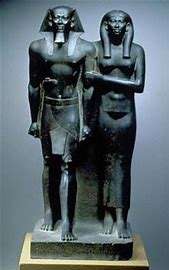
Fire and water. Spirit /Soul. Which and why? Any electrum?
This passage is, in full, as follows: 'This mirror represents the divine spirit. When the soul looks at itself in the mirror, it sees the shameful things that are in it, and rejects them; it makes its stains disappear, and remains without blame. When it is purified, it imitates and takes for its model, the holy spirit; it becomes spirit itself; it possesses calm, and returns unceasingly to that superior state in which one knows God and is known (by God). Then, having come to be stainless, it gets rid of its bonds, and it (raises itself) towards the Omnipotent. What says the philosophic word? 'Know thyself.' It indicates thereby the spiritual and intellectual mirror. What is this mirror then, if not the divine and primordial spirit? Unless one says that it is the principle of principles, the Son of God, the Word, he whose thoughts and sentiments proceed also from the holy spirit. Such is the explanation of the mirror. When a man looks in it and sees himself in it, he turns his face away from all that is called gods and daemons, and, attaching himself to the holy spirit, he becomes a perfect man; he sees God who is in him, by the intermediation of this holy spirit. 'Behold your soul by means of this spiritual mirror of electrum, made with the two intelligences, that is, with the Son of God the Word, joined to the holy spirit, and filled with the spirituality of the Trinity.' (Hermetica, vol. 4, p. 143. Edited Scott and Ferguson. Oxford.) {'The Mark' / M. Nicoll}.
And/or: But we cannot change without pain. The Work is a mirror and everyone in it can help you to see your own self in that mirror. But you will not understand this unless you see yourself in others or others in yourself. External considering is the main way to deal with negative emotions. But it is necessary to understand what it means. It depends on visualization. External considering takes some time. It is difficult to do sincerely— that is, rightly. It requires always a very great effort to do it. But it acts on being directly. Some find it impossible because they cannot imagine they might be someone else, especially a person they despise. This makes the Work difficult for them after a time. {'Psychological Commentaries on Gurdjieff and Ouspensky' / M. Nicoll}.
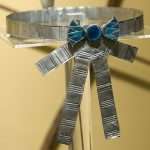
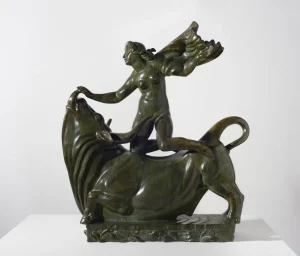
Something extra: "A happy and unique find is a krater in the Naples Museum, because the painting is clarified by an inscription. A winged youth throws a colorful embroidered ball to a hesitant woman. Looking outward but at the same time inward, she is resting one hand on a stele which bears the inscription. This stele is a horos, a boundary stone, and here it probably marks the boundary of the hesitant woman's home country, which she, wearing no ornament and lightly clad, must now leave. She does not reach for the ball, but looks with the shadow of a sly smile at the messenger who has thrown it to her. She will go. On the other side stands a woman with a grave expectant face, holding out to her a mirror and a tainia, a festive ribbon. The woman who thus hesitates is not a hetaira; she is a bride-to-be, but one who already knows. She would prefer not to travel this road.
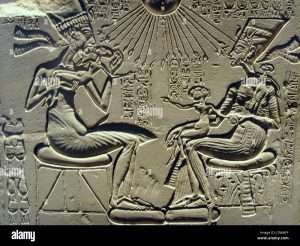
Ribbon or scarf?
 A series of vase paintings shows us the rest of the story as— so we must assume— it was set before the painters of the pottery works, in model books. The painters were free and at the same time restricted. Although they never copied their models exactly, they nevertheless followed the main lines of a coherent pictorial text representing a story with its own inner logic. If the deceased woman was lightly dressed and without ornament in starting on her way to the Dionysian nuptials, it meant, according to this conception, that her adornment— which in the picture with the inscription is suggested by the woman waiting with mirror and tainia— would follow. The painting on a bell krater in Lecce shows a woman who is no longer hesitant but willing; already in festive garments, she is washing her hair in the presence of two delicate nude Dionysian youths. The one, with a festive band round his head (he is thus a mitrephoros) holds the thyrsos and the burning torch for the night journey. The other holds a basket, the contents of which are destined for the impending sacrificial banquet, and a strigil, the brush with which athletes cleansed themselves; in this context it identifies him as the other's younger companion. Are they ordinary youths? Or rather does not the mitrephoros with the thyrsos represent Dionysos as bridegroom? Here we have already passed the boundary stone dividing "mortal" and "immortal."
A series of vase paintings shows us the rest of the story as— so we must assume— it was set before the painters of the pottery works, in model books. The painters were free and at the same time restricted. Although they never copied their models exactly, they nevertheless followed the main lines of a coherent pictorial text representing a story with its own inner logic. If the deceased woman was lightly dressed and without ornament in starting on her way to the Dionysian nuptials, it meant, according to this conception, that her adornment— which in the picture with the inscription is suggested by the woman waiting with mirror and tainia— would follow. The painting on a bell krater in Lecce shows a woman who is no longer hesitant but willing; already in festive garments, she is washing her hair in the presence of two delicate nude Dionysian youths. The one, with a festive band round his head (he is thus a mitrephoros) holds the thyrsos and the burning torch for the night journey. The other holds a basket, the contents of which are destined for the impending sacrificial banquet, and a strigil, the brush with which athletes cleansed themselves; in this context it identifies him as the other's younger companion. Are they ordinary youths? Or rather does not the mitrephoros with the thyrsos represent Dionysos as bridegroom? Here we have already passed the boundary stone dividing "mortal" and "immortal."

A leap across a gap?
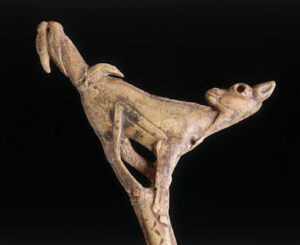 Though the willing woman on another krater in Lecce is also making use of a mirror and arranging her hair, there can be no doubt that two divine beings are visible beside her [120]. One is a silenus from the Dionysian sphere. He holds out to her a perfume bottle and an apple, evidently sent by the waiting bridegroom to whose retinue he belongs. On the other side of her, Hermes is on the point of leaping away, impatient to escort the bride. He is carrying a folded sheet for the marriage bed; such a sheet is included in the bride's dowry on the votive tablets from the sanctuary of Persephone in Lokroi in southern Italy. This sheet lends the psychopompos a double meaning; Hermes is a guide both to souls and to brides. The basin in the center alludes to the bridal bath, and the objects to the right of Hermes are probably krotaloi, Dionysian instruments which the bride will hold in each hand in her maenadic dance before the god. After the dance she will probably rest on the bed with Dionysos and refresh herself from the bowl that the satyr boy gave to her on the Brindisi chous." {'Dionysos' / C. Kerenyi}.
Though the willing woman on another krater in Lecce is also making use of a mirror and arranging her hair, there can be no doubt that two divine beings are visible beside her [120]. One is a silenus from the Dionysian sphere. He holds out to her a perfume bottle and an apple, evidently sent by the waiting bridegroom to whose retinue he belongs. On the other side of her, Hermes is on the point of leaping away, impatient to escort the bride. He is carrying a folded sheet for the marriage bed; such a sheet is included in the bride's dowry on the votive tablets from the sanctuary of Persephone in Lokroi in southern Italy. This sheet lends the psychopompos a double meaning; Hermes is a guide both to souls and to brides. The basin in the center alludes to the bridal bath, and the objects to the right of Hermes are probably krotaloi, Dionysian instruments which the bride will hold in each hand in her maenadic dance before the god. After the dance she will probably rest on the bed with Dionysos and refresh herself from the bowl that the satyr boy gave to her on the Brindisi chous." {'Dionysos' / C. Kerenyi}.

Female figure that supports the couch. {bed}?
And/or: I remember that G. once gave a talk in France about what could be taken away from us. You will understand that if we are based on “False Personality” we are standing on a basis that will give us constant trouble as regards keeping our balance. G. said that a man could be compared with a flat containing three rooms.  He spoke for some time about this 3-room flat and about everything that was in disorder in it and how the utensils were in the wrong place, etc. Then he went on to say how a man was always in debt, always insolvent, always liable to be summonsed, however much money he possessed. Of course you must understand that he was speaking of Man’s insolvency in a particular way—in fact, in the way that Man is spoken of so often in some of the parables as, for instance, in the parable of the servant— that is, you— who owes his Lord millions of talents. G. said the bailiffs may enter your flat at any moment and they have a “legal” right to take away everything except your “bed” which is in the inner or third room. So please think what you rest on most internally. There is something which cannot be taken away from you. Have you got to this place? Everything else can be taken away by these “bailiffs” that may come at any time and remove everything that is not your own. {'Psychological Commentaries on Gurdjieff and Ouspensky' / M. Nicoll}.
He spoke for some time about this 3-room flat and about everything that was in disorder in it and how the utensils were in the wrong place, etc. Then he went on to say how a man was always in debt, always insolvent, always liable to be summonsed, however much money he possessed. Of course you must understand that he was speaking of Man’s insolvency in a particular way—in fact, in the way that Man is spoken of so often in some of the parables as, for instance, in the parable of the servant— that is, you— who owes his Lord millions of talents. G. said the bailiffs may enter your flat at any moment and they have a “legal” right to take away everything except your “bed” which is in the inner or third room. So please think what you rest on most internally. There is something which cannot be taken away from you. Have you got to this place? Everything else can be taken away by these “bailiffs” that may come at any time and remove everything that is not your own. {'Psychological Commentaries on Gurdjieff and Ouspensky' / M. Nicoll}.
Continued: "...Physics relies on a connection of an image reflected in a 'mirror' and between mind and nature''. 'Connection' = the objective view? i.e., standing outside of the Self in order to discover something internal? And/or: Quote from "The Secret Of The Golden Flower: A Chinese Book of Life'' By Richard Wilhelm And Carl Jung...
 "My experience in my practice has been such as to reveal to me a quite new and unexpected approach to eastern wisdom. But it must be well understood that I did not have as a starting point a more or less adequate knowledge of Chinese philosophy. On the contrary, when I began my life-work in the practice of psychiatry and psychotherapy, I was completely ignorant of Chinese philosophy, and it is only later that my professional experiences have shown me that in my technique I had been unconsciously {synchronistic?} led along that secret way which for centuries has been the preoccupation of the best minds of the East.
"My experience in my practice has been such as to reveal to me a quite new and unexpected approach to eastern wisdom. But it must be well understood that I did not have as a starting point a more or less adequate knowledge of Chinese philosophy. On the contrary, when I began my life-work in the practice of psychiatry and psychotherapy, I was completely ignorant of Chinese philosophy, and it is only later that my professional experiences have shown me that in my technique I had been unconsciously {synchronistic?} led along that secret way which for centuries has been the preoccupation of the best minds of the East. 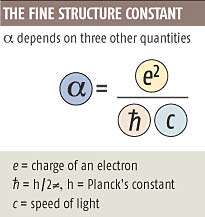 This might have been taken for subjective imagination — one reason for my previous hesitancy in publishing anything on the subject — but Wilhelm, that great interpreter on the soul of China, has openly confirmed the coincidence for me. In so doing, he has given me the courage to write about a Chinese text which, though belonging in essence to the mysterious shadows of the eastern mind, yet at the same time, and this is important, shows striking parallels to the course of psychic development in my patients, none of whom is Chinese."
This might have been taken for subjective imagination — one reason for my previous hesitancy in publishing anything on the subject — but Wilhelm, that great interpreter on the soul of China, has openly confirmed the coincidence for me. In so doing, he has given me the courage to write about a Chinese text which, though belonging in essence to the mysterious shadows of the eastern mind, yet at the same time, and this is important, shows striking parallels to the course of psychic development in my patients, none of whom is Chinese."
Question. An aspect of the inner self. That objective one?
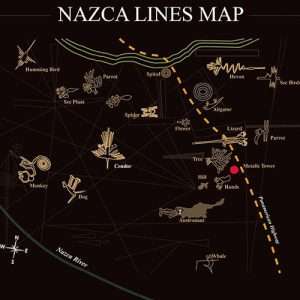 And/or: "I first became interested in the idea of self analysis when i was fifteen....The turning point came a year later when i saw for the second time, a trilogy of tele programmes on Jung. For some reason i had been unaffected by the first showing but the second time around i felt as if struck by lightening and began to study Jungs works....Some months later i spent a long a sleepless night. I only got about an hours sleep because i was 'waiting' for something to happen.
And/or: "I first became interested in the idea of self analysis when i was fifteen....The turning point came a year later when i saw for the second time, a trilogy of tele programmes on Jung. For some reason i had been unaffected by the first showing but the second time around i felt as if struck by lightening and began to study Jungs works....Some months later i spent a long a sleepless night. I only got about an hours sleep because i was 'waiting' for something to happen.

Kidney or ear shape?
I had no idea what it was but eventually it emerged as two brief dreams. The first was two fish rushing around in a circle, trying to bite each others' tails and neither succeeding. I took this to relate to my attempts at analysing myself - that i was going round and round in circles not getting anywhere. The second dream, though, had enormous feeling to it. It consisted of a brief glimpse of a benign yet frightening Merlin figure dressed entirely in black {'shadow' aspect}. To his left was a large Chinese gong and in his right hand was a large stick with a large globe at the end with which he beat the gong. The figure then stood stock still and said: 'Turn away from me for i am the Echo Maker.'......" [Pages 5-6 'Apollo Versus the Echo Maker' / A. Lunt].
'An ECHO THROUGH THE AGES'.
Mindset?
2:2 to enlarge.

Zodiac = 'Globe'?
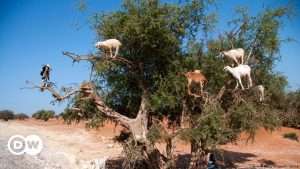
When not alluding to the literal animal, the goat emoji stands for GOAT, an acronym meaning Greatest of All Time. It is generally used in reference to highly skilled individuals, such as award-winning musicians or talented athletes, in order to praise them as being the all-time best in their chosen field.
Before Dionysos as wine god came to them from the south, the Greeks seem to have contented themselves with a mythical king as inventor of the vine and with Sirius as the actual giver. From that time on the vine possessed a myth of its origin : because of the star's movements in the sky, the discovery of the vine was related to Orion's dog. The home of this myth was Aitolia in the western part of the Greek mainland, bordering the territory of the western Locrians, mountainous regions far removed from Crete.74 Hekataios of Miletos, the Ionian historian, transforms the myth into a genealogical tale.70 A wild hunter (this quality is expressed by the name "Orestheus," "man of the mountains," which presents an assonance with "Orion"), a son of Deukalion, the first man, comes to Aitolia in search of a kingdom. His she-dog gives birth to a stick. He buries the stick, probably because it is an abortion. It soon turns out to be the first vine, a gift of the celestial dog, the dog of Orion, who may be recognized in the wild hunter. After the event Orestheus names his son "Phytios," "planter." His son in turn was named "Oineus," after oine, "vine." In another form of the myth which obviously draws on the Dionysian religion, a he-goat disappears at intervals from the herds of Oineus and returns sated.
The king has a shepherd with a name similar to that of the hunter in the older tale. This shepherd finds out that the goat has been eating from a grapeladen vine, and thus Oineus becomes the first man to make wine of these grapes. In all the tales, however, it is clear that wine cannot be made without instruction from Dionysos! The god visits the king, or more correctly Queen Althaia, as in Athens each year he visited the wife of the bearer of the king's name, the archon basileus. Oineus had respectfully withdrawn and thus received the wine as a gift indeed.77 In the myth's simpler, assuredly original form preserved among the Locrians, there is no mention of a special wine hero named "Oineus," but only of the hunter Orestheus and his dog. From the stick that he buried, sprang, in the form of branches— ozoi— not only the grape but also men, the Ozolian Locrians. {'Dionysos: Archetypal Image of Indestructible Life' / C. Kerenyi}.
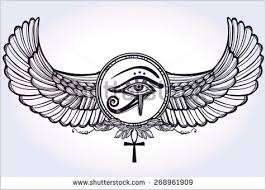

Philae.
''Mankind, more than realised, is an expression of the part of the earth upon which he subsists. A rose of the West should not aspire to bloom like a lotus of the East....Yet it is out of the supposed separateness of Occident and Orient that a transcendent unity emerges. In esoteric circles there are no real opposites - only different ways of approaching the same goal. The West is a place of manifestation - the East a place of beginnings - just as the sun tracks from east to west...'' [ Pages 2/6 'The Western Way'].
Subjective/objective - which and why?
'On Having No Head: Zen and the Rediscovery of the Obvious' / D. E. Harding.
Hence: "At the same time, its meaning for us is greatly deepened when we know that, despite the gulf separating us from the East, we follow exactly similar paths when once we give heed to the inner world." Same book.
Refresher: "What is decisive for me is that i dream about physics as Mr. Jung [and other non-physicists] think about physics. Every time i have talked to Mr. Jung [about the ''synchronistic'' phenomenon and such], a certain spiritual fertilization takes place." Wolfgang Pauli.
Try ''Pauli'' on all pages for a working example.
 "His conscious ego may distort the facts and be self deceived by desires and instincts for self preservation, self esteem, and the like. But in the unconscious, truth cannot be dissembled in this way. The unconscious can only mirror the actual facts and therefore cannot lie." ['Quote from the book by M. Harding. Includes emphasis].
"His conscious ego may distort the facts and be self deceived by desires and instincts for self preservation, self esteem, and the like. But in the unconscious, truth cannot be dissembled in this way. The unconscious can only mirror the actual facts and therefore cannot lie." ['Quote from the book by M. Harding. Includes emphasis].
And/or: "While people are using reconnecting energy, something is actually being absorbed. They're receiving energy, not sending it...the more i got my attention out of the picture, the more powerful the response." [Book by Dr. E. Pearl].
"Life is what happens to you, when you are busy doing other things." John Lennon.

East {S/E} or West {S/W} or 'Both'? As a means....?
"The art of letting things happen, action through non-action, letting go of oneself, as taught by Meister Eckhart, became for me the key opening the door to the way. We must be able to let things happen in the psyche. For us, {i.e.,''Westerners''} this actually is an art of which few people know anything. Consciousness, is forever interfering, helping, correcting, and negating, and never leaving the simple growth of the psychic progresses in peace. It would be simple enough if only simplicity were not the most difficult of all things. To begin with, the task consists of solely objectively observing a fragment of a 'fantasy' in its development..." ['The Secret of the Golden Flower' ].
REFRESHER: "Pauli could not fail to notice what a supreme example of synchronicity this was. A chinese woman had played an important part in his dreams, particularly those involving mirrors and their reflections..." Question. ''Fantasy'' up to what point?
'The Fine Structure Constant' ?
Side note: ''China'' = east; therefore the beginning of something. 'West' therefore = the end of same 'process'. Question. What symbol {'hieroglyph'?} would represent {or be experienced?} once assimilated?
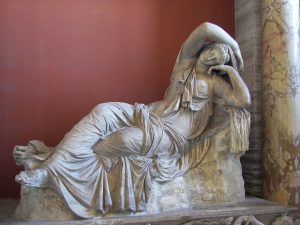
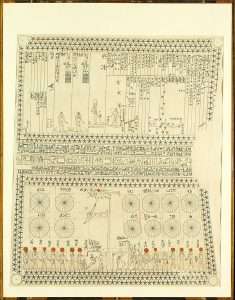
Astro ceiling in Senenmut bare tomb chamber. 'Folded'? 'naked'?
A {working} example: "Of course, this has to do with how one views the creation; what is exactly meant with ''creator'' and/or ''creation''. The way I see it today, the ONE mirrors itself in millions of forms, in an unbelievable variety. Every form and image, each facet and sound lives this uniqueness, with the knowledge within that it is only a reflection of the ONE. Because of this, I think it is wonderful to discover and live one's own being, without being identified with it. There is nothing else but THAT, the ONE. And each human being has the right to live his being, to allow HER particular fragrance to unfold as part of the whole." [Page 37 ' The Path has No Name' / Annette Kaiser].
Try ''three and four''.
''I just wanted to ask you if you were able to change your way of acting?'':
'Certain things succeeded, but actually ''succeeded'' is the wrong expression. It was actually always something else that brought the change.' [Same book].
Analogy of same {practical?}..."From then on, anytime i entered the store, i was asked to predict the next quake. And i would try, too - but it didn't seem to work out that way. I couldn't force it; the predictions only came when i was minding my own business." [From the book by Dr Pearl. Mentioned elsewhere}.

'Flat' head? That 'one thought' at the back of the head? S/E as a start point?

Happy or Sad?
Analogy with same principle?..."What's fascinating to me is that Syd Banks {enlarged elsewhere} wasn't looking for a more spiritual understanding of life; in fact, he had no idea there was anything to look for. The deeper truth of life found him. Here's how he put it: 'Happiness is only ever one thought away - but you must find for yourself that one thought'." [Quote from the book by Paul McKenna].
This reader,however, would add - or one subject.
REFRESHER: "...Think well: the physical is the end result of spiritual forces. Therefore to seek the source of those 'spiritual' forces, the Ariadne's thread, to lead you through the psychic astral maze, must be anchored in the forms of earth. These physical forms are reflections of a spiritual reality. They are reflections of the ultimate truth beyond form. Look well into the mirror of nature to see the reflection of the spiritual stars." [Extract from the book ' The Rose Cross and the Goddess: The Quest for the Eternal Feminine Principle'. Emphasis, this readers].
N.B. 7th King of Copan {'Holy' kings} = B'ahlam Nehn = 'The Jaguar Mirror'. And/or Waterlily Jaguar. Enlarged elsewhere.

Back of the head?
"B'alam Nehn {often referred to as Waterlily Jaguar} was the first king to actually record his position in the dynastic succession, declaring that he was the seventh in line from Yax K'uk Mo {founder}. Stela 15 records that he was already ruling Copan by AD 504. He is the only king of Copan to be mentioned in a hieroglyph text outside the S/E region of Maya. His name appears on a text on stela 16 from Caracol, a site in Belize." [Wiki/'Copan'].
 And/or..."So the elders of Guatemala handed the lowland Maya ''fifteen books''. The lowland Maya were told to study and learn this knowledge and that they would be given more books in the future. In this way, the return of the Mayan calendar, knowledge, and prophesy was initiated. The outer world at this time knew nothing of this exchange, nor did they care. Materialism was the way of the world." ['Serpent of Light' / D. Melchizedek]. Recall this authors ''method'' of {teaching?}. Those keys however are universal - regardless of method. The real questions therefore REMAIN THE SAME.
And/or..."So the elders of Guatemala handed the lowland Maya ''fifteen books''. The lowland Maya were told to study and learn this knowledge and that they would be given more books in the future. In this way, the return of the Mayan calendar, knowledge, and prophesy was initiated. The outer world at this time knew nothing of this exchange, nor did they care. Materialism was the way of the world." ['Serpent of Light' / D. Melchizedek]. Recall this authors ''method'' of {teaching?}. Those keys however are universal - regardless of method. The real questions therefore REMAIN THE SAME.
REFRESHER...The Motmot Marker Stone. Father and son together. ''Motmot'' = nickname of the son. A link to the ''twin'' tail feathers of such birds as the Kingfisher and BEE-eater. Tiahuanaco {central} - Copan {S/E] - ALL as a means...?
Analogy: "As i heard my Sioux name being called over and over, i then knew for the very first time who i was..." ['Dances with Wolves' / K. Costner].
"Important teachings contained in these chapters is the idea of remembering. Spiritual enlightenment is not something new that is added to a person. It is a gathering and making whole one's consciousness so as to discover one's true identity as one with the 'divine'. Thus the initiate asks that they be given their 'name' in the Great House. [Pages 179-187 and 212-3 'The Egyptian Book of the Dead' / M. Ashby].
Try 4:4 to enlarge. ''Who am i''.
Side note: ''Plumes'' {two?} mentioned as a substitute for ''hair'' i.e., hair removed from the middle of forehead - allows the minds eye to 'enlighten'. [Page 179].
Try ''hair''.
 Etymology of the word ''Nickname'': "The compound word 'ekename', literally meaning ''additional name''... This word was derived from the Old English phrase 'eaca' ''an increase'' related to 'eacian' ''to increase'' ....In Viking societies, many people had 'heiti', 'viornefni' or 'kenningarnofn' {Old Norse terms for nicknames} Which were used in addition to, or instead of the first name. In some circumstances, the giving of a nickname had a special status in Viking society in that it created a relationship between the name maker and the recipient of the nickname - to the extent that the creation of a nickname also often entailed a formal ceremony and an exchange of gifts known in Old Norse as 'nafnfestr' {''fastening a name''}. [Wiki/'nickname']. Try ''gift''.
Etymology of the word ''Nickname'': "The compound word 'ekename', literally meaning ''additional name''... This word was derived from the Old English phrase 'eaca' ''an increase'' related to 'eacian' ''to increase'' ....In Viking societies, many people had 'heiti', 'viornefni' or 'kenningarnofn' {Old Norse terms for nicknames} Which were used in addition to, or instead of the first name. In some circumstances, the giving of a nickname had a special status in Viking society in that it created a relationship between the name maker and the recipient of the nickname - to the extent that the creation of a nickname also often entailed a formal ceremony and an exchange of gifts known in Old Norse as 'nafnfestr' {''fastening a name''}. [Wiki/'nickname']. Try ''gift''.
''White quartz pebble'' ? And/or ''Great Bear '' {i.e., superstition of calling a ''Bear a bear''}?
Both enlarged elsewhere.
A work in progress : "To tell the complete truth about oneself is very difficult. But before telling it, one must know it. And you do not even know what the truth about yourselves consists of. Some day i will tell every one of you his chief feature or chief fault. We shall then see whether you will understand me or not." ['In Search of the Miraculous'].
Follow the title of the book to see it in its broader context.

"The Rump is part of the Arabian megaconstellation of the Lion (al-asad)." Beehive? Palm tree or feathers?
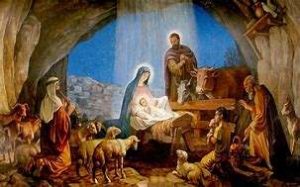
Any Bees in the manger? 'Cancer' to enlarge.
A change of pace {scenery?}..."That Delphi was originally connected with bees we can gather from traditions concerning the ancient temple there. Pausanias writes: 'They say that the most ancient temple of Apollo was made of Laurel. The Delphians say the the second was made of wax and feathers......"
"Plutarch quotes an ancient oracle, 'Bring together feathers, ye birds, and wax, ye bees."............."In these traditions there seems certainly to linger a faint trace of a prehistoric worship of, or perhaps a reverence for, birds and bees.
In Crete myths of birds and bees, they mingle in the birth cave of Zeus. In the Odyssey it is said that doves bring Zeus ambrosia from the bounds of Ocean. In this story it is doves [Greek = Pleiades], who bring ambrosia, which here denotes divine honey. They were considered as nymphs, and were placed in the sky as Pleiades, the seven doves." [Page 99/100, 'The Sacred Bee'].

Crossroads.
A work in progress: ''In the last issue, several travelers who passed by Magdala in the 19th century described it as a miserable village. Many other authors of that same century do not even take the pain of mentioning such a humble town. Among them, we mention some of the most authoritative descriptors of the Holy Land, such as the Franciscan Francesco Cassini da Perinaldo (1833), the Trappist monk Marie-Joseph de Géramb (1840) or the well-known Chateaubriand (1827).

'Joy'?
And, though most authors keep noticing the presence of Magdalene’s town, they do not write about it more than a short line en passant. This is the case, for example, of Félicien de Saulcy (1865), the priests Fr. Jean-Jacques Bourassé (1867) and Liévin de Hamme (1875), the German pilgrim Gerhard Lüken (1896), and the Spanish writer from Teruel Octavio Velasco del Real: “Behold there el-Mejdel, Magdala, cradle of Mary the Penitent.” Similarly, the Catalan priest and poet Jacinto Verdaguer, briefly tell us in the diary of his pilgrimage (Dietari d’un Pelegrí) that, on the morning of 11 May 1886, while sailing from Capernaum to Tiberias, he spotted Magdala: “There is a plain full of trees and water sources, called Wadi Hammam, the Valley of the Doves. Between this and Tiberias, the now humble town of Magdala, the homeland of Saint Mary Magdalene, is only a dark spot.”
In short: in the 19th century, Magdala was not only a miserable village, but travelers practically ignored it, and its memory does not deserve more than some hasty thought.''

M/F = ''shadow'' / ''anima'' = S/W in relation to S/E = Represented with ''right'' and ''left'' - the tail end of something begins the process of something else [micro]. Crowns = ''twin'' symbolism, i.e.,''Sacred Marriage'' ones - as opposed to any other. That link to the Cyanean Rocks [macro]. Enlarged elsewhere. Question. Why choose a dove? Question 2. Fiction or non-fiction.
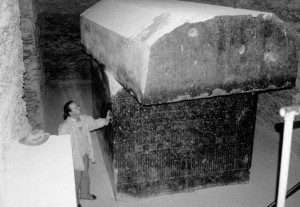
24 in total. Coincidence? Define the parts to make a whole {mind set}.
Side step {a scratcher?}: "The gnostics referred to Jesus as the Ogdoad, because he 'contained in himself the entire number of the 'elements' [i.e.,stoicheia = letters], which the descent of the dove [who is alpha and omega] made clearly manifest, when he came to be baptized, for the number of the dove is 801. The meaning of this statement is fairly simple: The name Jesus, 888, is a 'purrfect' name encompassing the whole of creation, and is reflected in the twentyfour letters of the Greek alphabet which numerically, contains 8 letters denoting hundreds, 8 denoting tens, and 8 denoting units. Jesus is therefore Alpha and OImega, the all encompassing spiritual plenitude, which was made manifest with the descent of the dove, [i.e.,representational of. This readers input]. This is because the Greek word for dove is equivalent to 801, which is also the value of Alpha/Omega." [Chapter 2, 'Jesus Christ sun of God'. Mentioned elsewhere].
Number symbolism, together with Mythology and Astronomy to define something, relative to the ' self ' [i.e.,alchemy], by way of ''Logos.'' Use the search box.
'Anatomy of the Psyche' by Edinger.
"...in so far that the Grail Seeker, must ask three key questions about it. These are: What is the Grail? What is the purpose of the Grail? Who is served by the Grail? As has been discovered in many a modern context, it is not enough to be able to answer difficult questions that solve a problem, but the ability to discern the right questions that need to be answered. The Grail stories tell of what happens when a Grail seeker wins through to a revelation {eureka moment?} of the 'Grail' but fails in his wonder to ask the right questions. All disappears as a phantasm and he finds himself back in the enchanted Wasteland, with castigation heaped upon him for his lost opportunity." ['Experience of the Inner Worlds']. Enlarged elsewhere.

Why the difference in 'stools'? "The phrase "fallen between two stools" is an idiomatic expression that means to fit into neither of two categories and, hence, be neglected or fail1. It can also mean to attempt two roles and fail at both, when either could have been accomplished singly1. The phrase is an old proverbial phrase, first cited in John Gower's Confessio Amantis in 1390."
From a different perspective: ''I know why you are here Neo, I know what you have been doing, and what you are looking for night after night behind your computer. You are looking for him. I know because i too was looking for the same thing. And when i found him, he told me i wasn't really looking for him but looking for an answer. Its the question that drives us Neo. Its the question that brought you here. You know the question just as i did. What is the Matrix? The answer is out there Neo. Its looking for you. It will find you - if you want it to.'' ['The Matrix' / 1999].
Side note: Analogy {i.e., from a different perspective}: "The reiterated 'I have been' and 'I was' of Gwion's Hans Taliesin riddle suggests that the Boibel-Loth alphabet, which is the solution, originally consisted of twenty mystical titles of a single Protean male....which was kept secret....But why does it contain so many approximations to Biblical names taken from Genesis and Exodus....all names concerned with Sinai, Southern Judea and Edomite Dead Sea region? This is the region which the Essene communities were settled...." [Page 148/9 'The White Goddess'].
And/or: Twentysix letters of the alphabet and twentysix Osiris statues at the temple of Hatshepsut.
Continued: Physics equivalent of the same, [ as a practical example ]. The ‘conversations’ between Niels Bohr and Albert Einstein, [ prior to the concept of the word ‘Quantum’. Its true; in-depth meaning, i.e.,by way of 'Quantum Mechanics' ].
 Mr Bohr so dogmatic and disciplined in choosing the correct words to form each question. Spent hours looking/searching within his own vocabulary of words for those perfect ones. In order to construct as close to a ‘perfect’ {'21'?} question as he could imagine. His theory being... if formed correctly, then as close to a correct answer .. within his chosen field of interest would be forthcoming. This method irked non other than Mr Einstein almost to the point of the speed of light. Yet in the end he; non other than Einstein; supplicated. He relinquished. He could see the benefits of it. Those ‘benefits’ that were to prove the creation of the word ‘quantum’. Or more to the point. It was that discipline that brought the word ‘quantum’ into the ‘light’. Into the world. The conscious one...and eventually its vocabulary. Then its curriculum.
Mr Bohr so dogmatic and disciplined in choosing the correct words to form each question. Spent hours looking/searching within his own vocabulary of words for those perfect ones. In order to construct as close to a ‘perfect’ {'21'?} question as he could imagine. His theory being... if formed correctly, then as close to a correct answer .. within his chosen field of interest would be forthcoming. This method irked non other than Mr Einstein almost to the point of the speed of light. Yet in the end he; non other than Einstein; supplicated. He relinquished. He could see the benefits of it. Those ‘benefits’ that were to prove the creation of the word ‘quantum’. Or more to the point. It was that discipline that brought the word ‘quantum’ into the ‘light’. Into the world. The conscious one...and eventually its vocabulary. Then its curriculum.
Therefore by the same implication. From an unconscious/unknown ‘start’ point, [representation of, only], i.e., same thing, different topic. Or more to the point, applying Mr Bohrs discipline. Same concept. Different subject. From an ‘unknown’ to a now ‘known’, both of which have to be represented in some form, for that understanding to take place.

Where have you seen it before?
A working example {i.e.,if ONLY in the 'ritual' sense of the word i.e.,in relation to defining something, [ i.e.,this subject] - by defining 'its' parts within the whole. In this instance and/or example - the meaning of the ''dove'' symbol relative to the whole - regardless of whether those symbols [archetypes] have been 'gotten' through ''ritual'' methods or study..." Once you have found the container of White Water - which is an alchemical name for Mercury - ask aloud for the figure of Venus to be present with you. You can use your own words, or use this version, based on various alchemical works: 'Fair sister, come unto me, immaculate dove, descend lady of love may i now see, hither comes as my friend'. When you have called upon Venus, and a figure has arrived in your place of working, you must ask her the following - 'How may i release the hidden 'fire' through solution'? At this point a 'lion' may appear as may an image of the sun, or some other fire. Take the advise given to you by the lady Venus, and observe the lion or the sun. You should start to feel an internal warmth arise...The work of 'solution' although carried out by 'water', releases a hidden fire."[Extract taken from the book by M. Katz]. Try ''leo/Virgo'' {red/green}.
Fasting?
Refresher: "The story of Adam fasting in the Jordan with water up to his 'chin' is found in a few manuscripts....when Adam fasted god rewarded him {green lion?} with a pardon."
Djed column? i.e., spine

Hathor hairstyle as opposed to say, 'twin horned' {i.e., horns made from matted 'hair' i.e., keratin}. As a means....? Not yet 'joyous'?

Gül Baba (died 1541), also known as Jafer, was an Ottoman Bektashi dervish poet and companion of Sultan Suleiman I (r. 1520–1566) who took part in a number of campaigns in Europe from the reign of Mehmed II onwards. A native of Merzifon (Marsiwān, in the vilāyet of Sivas, Anatolia),[1] he was the son of Kutb’ül Arifin Veli’üddin İbn Yalınkılıç. In Hungary, Gül Baba is known as the "Father of Roses," a literal translation of the meaning of his names in Turkish; he is said to have introduced the flower to the country. However, this is likely a misunderstanding of the metaphorical meaning of the Turkish name, which referred to the dervish's status derived from his deep mystical knowledge of Allah. Roses, wild and domesticated, were already in Hungary by the time of the Ottoman invasion. The name could also be a corruption of Kel Baba, meaning "Bald Father".
Delos?
And/or: 'Twin horned' as opposed to say, a single one.
'She who loves silence'?
And/or: "Bird's beaks are covered with a shell like substance called keratin." ['The Chase' / S15 EP133].
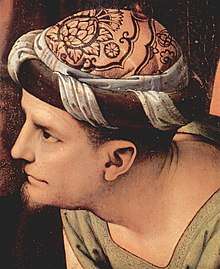
Bald innkeeper?
Side note: A tomb beneath Hatshepsut's temple. Left Corner. Was created 500 years BEFORE her reign - yet she left it intact. Left it empty. The question is asked as to why she left the tomb open. Occupant unknown. ''Sure it wasn't the son of a king or prince.'' { i.e., rough hewn}. There was a wooden coffin inside at one stage - within the hollow { pit?} in the floor. Inside many pots/vases/chalices found. Especially a small double one {i.e., tiny vase attached to another} + wooden heads in blue {28 minutes in} + cow effigy. All female aspects. ['Lost Treasures of Egypt' / Nat. Geo / 5.12.21].
Horizon? Aquarius?
And/or: ''Jordan means the ''descender'' or oil flowing down. Witness: Dove or dive - to descend. Dove I. e., a diver - 'The spirit of god descended like a dove, and a voice said, ''This is my Son'' etc. '' [Page 143/4 'God-Man: The Word Made Flesh' ].
Djedefre? {i.e., the first to be called 'son of'}.

Objective?
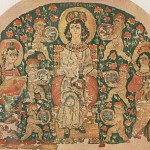
Archetype?
All in relation to a 'learning curve' - the process {or 'mechanics' of} - represented by those universal symbols. The word ''various'' implies something common to all. Some believe that ''all'' to be archetypes; others actual 'persons' as the example above seems to indicate; if only to those FIRST IMPRESSIONS. This reader leans more to the 'archetype' hypothesis. The more those archetypes are 'accessed' the more real - they must seem [as it does sometimes; i am sure; with those recurring dream sequences; that many 'feel' to be real]. But those archetypes regardless of how they are arrived at; or how real [if only in the subjective/individual sense] they may seem - are universal - common to all. Because all that information; by way of those archetypes;keys and or signs/images; through the course of multiple generations; is boundless, [i.e.,is recorded; as in the above example] - and especially in the present day with the inclusion of the internet. And more importantly each one implies the same [relative to each individual] - regardless of what 'methods' have been used to 'obtain' them [i.e.,in the 'mystery school' environment or at home,i.e.,by way of a study program]. Understanding that universal framework; especially with the 'divine bit' firmly in ones sight, i.e.,correctly assessed - gives that statement [hypothesis] a credible one. It also gives a 'framework' to those ''altered states''. A definition to it. A credible one. Try ''Pennant''.
"This tension between the mechanism of heredity and characteristics acquired through experience - and accumulated ''somewhere else'' - leads in the long run to the prevalence of the latter, and a kind of 'eruption' of acquired characteristics takes place in the hereditary mechanism. The fruits of past experience, so to say, "reincarnate". It is thus that one is led to postulate the principle of reincarnation...It is true that Jung designated the realm where past experiences are buried as the "collective unconscious". But why collective? Why not individual unconscious? Is it simply because experiences of the past, which arises from the depths of consciousness, have much in common? That they resemble one another?...Is it not more simple and natural to conclude that the one who remembers an experience is also the one who experienced it?...the facts assembled by Jung lend them selves at least as easily to interpretation in terms of reincarnation as in terms of a collective unconscious." [Extract from within the book by Tomberg. 'Letter Ten']. Together with...
"What is decisive for me is that i dream about physics as Mr. Jung [and other non-physicists] think about physics. Every time i have talked to Mr. Jung [about the ''synchronistic'' phenomenon and such], a certain spiritual fertilization takes place." Wolfgang Pauli.
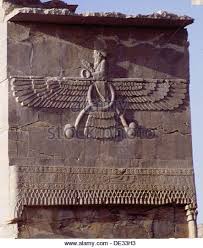
That ''eye'' in a different form.
"To Jung, the imagination was the key to the secret of nature in alchemy, and the secret of the self in analytical psychology. The 'imaginatio' as the alchemists understood it, is in truth a key that opens the door to the secret of the Opus''. [Extract from the book by M. Katz].

TO LEAD BY EXAMPLE: ''Lets talk about it'' : Do they ever talk about anything internal BEYOND climate change?
Talk - in relation to an ''understanding''. To be open about something; anything. Through conversation an awareness is made. Something internal is understood. External in relation to internal. That internal understanding that can also be got [by way of 'silence'] through study. One of the symbols of which - A 'waveless lake'.
"Is not silence the very voice of 'Great Spirit' ? Black Elk [Emphasis, this readers].
''Patience is the mother of will. If you have no mother, how can you be born?" Gurdjieff.
Think about all the above in relation to that universal ''bit''.
"In order to interpret dreams we need some knowledge of the dreamer's personal situation, and to understand alchemical parables we must know something about the symbolic assumptions of the alchemists. We amplify dreams by the personal history of the patient and the parables by the statements found in the texts." [Extract from the book by M. Katz]. Other examples elsewhere. Try Part 4.

Where have you seen it before? ALL as a means...?

''The signs Gemini and Virgo are alloted to Mercury. This association accounts for Virgo sometimes represented with the caduceus.''
As an example..."The seven 'miracles' - the wedding at Cana, the healing of the nobleman's son, the healing of the sick man at the pool of Bathesda, the feeding of the five thousand, the walking on water, the healing of the man born blind, and the raising of Lazarus- did not have the 'serpent' as their agent, nor was the brain the instrument of their accomplishment, nor was cerebral intellectuality the source of their initiative. The 'agent' here is the dove, i.e.,the spirit which is 'above' the brain, above the head, [representational of. This readers input], and which descends upon the head and remains there - the Spirit which transcends cerebral intellectuality [link to the 'effort' made - which some call 'gnosis'. Purpose of ]. This Spirit is the source of initiative..." [Taken from the book by Tomberg]. Top/down in relation to bottom/up as a means to an understanding [parenthesis, this readers].

Inner/outer. A beginning or end?

"If you were to ask me - if one has to choose to take the side of the 'dove' or the 'serpent' - my reply would be in the framework of the 'Master's' counsel: 'Be wise as serpents and innocent as doves' [Matthew X, 16]. Same book. "Wise" in relation to known or becoming known. "Innocent" in relation to something unknown and/or a latent potential that [awaits] becoming known. Representational of, i.e.,the symbol of the 'dove'.
"I shall mount beyond this power of my nature, still rising by degrees towards 'Him who made me'. And so i come to the fields and vast palaces of memory..." [Extract from the book 'The Magister'].
''Memory'' in relation to 'archetypes'.
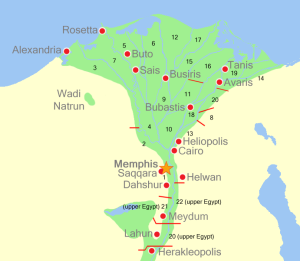
Delta and/or fenland? {i.e., where land and water meet}.
Working example: ''Horus now bestrides Egypt as 'uniter of this land'. And, as the ruler who holds together the complementary opposites of North and South, he is ready for the serpent crowns to take root on his brow, as is next proclaimed in the text found in The Memphite Theology on the Shabaka Stone: 'Then sprouted the two enchantresses upon his head. He is Horus who appears as King of Upper and Lower Egypt, who unites the Two Lands in the nome of the {White} Wall {Memphis}, the place in which the two lands were united.
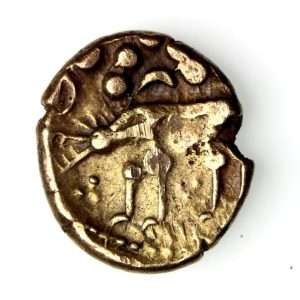
Celtic Wolf. Bird symbol on its rump. Teeth for a 'key'?
''The Memphite Theology Creation was first a spiritual and intellectual activity, facilitated by the divine heart (thought) and tongue (speech/word) of Ptah. Then, creation became a physical activity carried out by Atum, who, created by Ptah's teeth and lips, produced the Ennead from his seed and hands.''
 Understanding the above defines the following..."They are therefore 'inscribed magically' in a region between heaven and earth ['Astral' domain link], close enough to the earth to be reached by the souls of seekers on the earth and to awake in them the spirit of quest through their attraction, and far enough removed, on the other hand, so as never to be seized by cerebral intellectuality, i.e., to be taken hold of, analysed and exploited by it. The original of the 'Sacred Book of Thoth' [and/or Cayce hall of records and/or Akashic records link/analogy] is to be found in the 'trans-cerebral' region. For this reason it is necessary to seek for it not in crypts, manuscripts or stone inscriptions, nor even in secret societies or fraternities, but rather in the 'sanctuary of the everlasting zones' belonging to Hermes [i.e.,"between heaven and earth" ].
Understanding the above defines the following..."They are therefore 'inscribed magically' in a region between heaven and earth ['Astral' domain link], close enough to the earth to be reached by the souls of seekers on the earth and to awake in them the spirit of quest through their attraction, and far enough removed, on the other hand, so as never to be seized by cerebral intellectuality, i.e., to be taken hold of, analysed and exploited by it. The original of the 'Sacred Book of Thoth' [and/or Cayce hall of records and/or Akashic records link/analogy] is to be found in the 'trans-cerebral' region. For this reason it is necessary to seek for it not in crypts, manuscripts or stone inscriptions, nor even in secret societies or fraternities, but rather in the 'sanctuary of the everlasting zones' belonging to Hermes [i.e.,"between heaven and earth" ].

Huntingdon to enlarge.
It is necessary to elevate oneself above the zone of cerebral intellectuality {'horizontal'?}, because the ''sacred books'' were written, according to the Hermetic treatise that we have quoted, before the formation of the brain. They make an appeal - 'magically' effective across time, 'throughout all ages' - to transcend cerebral intellectuality , and to raise 'the organisms worthy of them' to the region where they remain deposited. This region, this garden of the 'holy symbols of the cosmic element' , planted between heaven and earth - these 'magical' formulae, gnostic symbols, and mystic 'fires' of the primordial revelation , which constitute the 'sanctuary' above cerebral intellectuality and below heaven {'void'?} - is the reality of Hermeticism. It is an incentive across the ages, stimulating human souls to aspire to the vision of ''all things'' and, having seen this totality, to comprehend it...Because in the depths of the unconscious - which knocks at the door and wants to become conscious - there is present the ''sanctuary'' {ante chamber?} of the everlasting zones, where the Sacred book of Thoth remains deposited, [''akashic records'' link] from whence symbolic and Hermetic works are 'born', or reincarnate." [Taken; including intalics; from within the book by Tomberg ].
''The cerebellum {at the back of the skull} is a vital component in the human brain as it plays a role in motor movement regulation and balance control. The cerebellum coordinates gait and maintains posture, controls muscle tone and voluntary muscle activity but is unable to initiate muscle contraction. Your cerebrum is the largest part of your brain, and it handles a wide range of responsibilities. Located at the front and top of your skull, it gets its name from the Latin word meaning “brain.” Your cerebrum is instrumental in everything you do in day-to-day life, ranging from thoughts to actions.''
Expansion / Contraction.
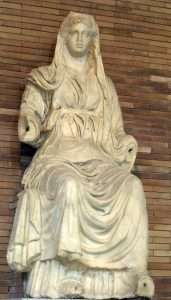
"God said to man: I have placed you in the world that you may more readily see what you are. I have made you neither earthly nor heavenly, neither a mortal nor an immortal being, in order that you, as your own sculptor, may carve features for yourself. You may degenerate into an animal, but by using your free will you may also be reborn as a god-like being." Which and why?
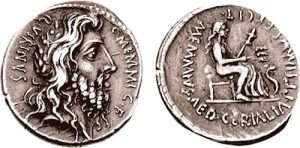 And/or: ''In ancient Roman religion, Ceres (/ˈsɪəriːz/ SEER-eez,[1][2] Latin: [ˈkɛreːs]) was a goddess of agriculture, grain crops, fertility and motherly relationships.[3] She was originally the central deity in Rome's so-called plebeian or Aventine Triad, then was paired with her daughter Proserpina in what Romans described as "the Greek rites of Ceres". Her seven-day April festival of Cerealia included the popular Ludi Ceriales (Ceres' games). She was also honoured in the May lustration (lustratio) of the fields at the Ambarvalia festival: at harvest-time: and during Roman marriages and funeral rites. She is usually depicted as a mature woman.
And/or: ''In ancient Roman religion, Ceres (/ˈsɪəriːz/ SEER-eez,[1][2] Latin: [ˈkɛreːs]) was a goddess of agriculture, grain crops, fertility and motherly relationships.[3] She was originally the central deity in Rome's so-called plebeian or Aventine Triad, then was paired with her daughter Proserpina in what Romans described as "the Greek rites of Ceres". Her seven-day April festival of Cerealia included the popular Ludi Ceriales (Ceres' games). She was also honoured in the May lustration (lustratio) of the fields at the Ambarvalia festival: at harvest-time: and during Roman marriages and funeral rites. She is usually depicted as a mature woman.
Ceres is the only one of Rome's many agricultural deities to be listed among the Dii Consentes, Rome's equivalent to the Twelve Olympians of Greek mythology. The Romans saw her as the counterpart of the Greek goddess Demeter,[4] whose mythology was reinterpreted for Ceres in Roman art and literature....
The name Cerēs stems from Proto-Italic *kerēs ('with grain, Ceres'; cf. Faliscan ceres, Oscan kerrí 'Cererī' < *ker-s-ēi- < *ker-es-ēi-), ultimately from Proto-Indo-European *ḱerh₃-os ('nourishment, grain'), a derivative of the root *ḱerh₃-, meaning 'to feed'....''

No 'feet'?
From a different perspective: ''My thesis is that the language of poetic myth anciently current in the Mediterranean and Northern Europe was a' magical' language bound up with popular religious ceremonies in honour of the moon goddess, or muse, some of them dating from the Old Stone Age, and that this remains the language of TRUE poetry..." ['The White Goddess' / R. Graves].
The author defines that ''true poetry'' as the Theme.
''Theme'' in relation to subject material.
Example. "Plato, the father of metaphysical philosophy, had the experience of trans - cerebral thinking, of thought that is not conceived, but seen." [Same book].
''The term "autopsy" derives from the Ancient Greek αὐτοψία autopsia, "to see for oneself", derived from αὐτός (autos, "oneself") and ὄψις (opsis, "sight, view").[1] The word has been in use since around the 17th century.''
Death/rebirth?
"Astral plane was an old term for the realm of the visual imagination." [Chapter one, 'Astral Doorways' by J. H. Brennan].
Groundhog Day {1993}.
Understanding that one sentence in relation to the above texts tells one [through study] what - [as an example] - ''Venus'' represents. What 'her' purpose is - relative - most important of all - to each individual. Clue. Shadow [lion] 'element' or Anima? Which in itself determines whether that figure should be 'positioned' left or right - in relation to the full story,i.e.,depending on each individual - in relation to a ''balance''. That final link and understanding [once again through study] - of ''twin'' symbolism [and/or archetypal meaning/ inference] - relative to the whole story [and/or journey] - to each individual - on a daily basis.
Kabbalah equivalent = Zayin/ Kavod. Chapter four. G.Scholems book. Mentioned elsewhere. Try and find them. Then compare. Find those links to understand the benefit of symbolism in relation to understanding any subject. Especially this one, [because of 'its' hypothetical' nature]. That first yet last one.
"The Hebrew letter meaning 'sword', 'weapon', is placed as a small Zayin-shaped scar on The Fool's exposed chest. This is a letter of 'time' and the concept of Chozer or 'returning light'. [Extract from the book 'The Magister'].
'Mans Search for Meaning' / Viktor Frankl.
Geoffrey Ashe researching all works like a modern day Sherlock holmes in the hope of finding ...the origin of the number seven.[ ‘The Ancient Wisdom’ ]. The importance of that 'development’ within the overall journey in relation to each individual. [ in their opinion ].
".....On another count, Apollo was associated with the number seven. Hence the reason he was known as 'Seven leading,' and/or ''Seven born.'' He was born on the seventh day of the Greek month Bysios, the day on which his festivals were held. His Lyre has seven strings, each one associated with the seven planets as well as the Pythagorean ''music of the spheres'' and the seven vowels of the Greek alphabet. The same number also relates to Apollo's omphalos at Delphi, in relation to the seven directions......" [Chapter 4, 'Jesus Christ Sun of God......' Mentioned elsewhere]. Question. Why. What does it all represent?
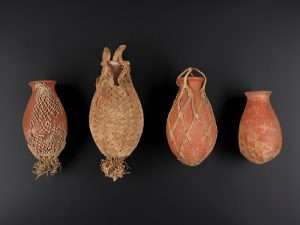
Found with the Qurna Queen and child: ''under a rocky outcrop {'overhang'?} on the north side of the valley at Thebes.'' Inner/Outer. Fire/Soul. Which and why?

Sir 'Pot a lot' or the magical wand of Harry 'Potter'? "One of three players to have won all three Triple Crown events in a single season, he is the only player to have achieved the feat twice, in the 1989–90 and 1995–96 seasons. His 777 career century breaks include 11 maximum breaks, putting him in third place behind O'Sullivan (15) and John Higgins (13) for the most officially recognised maximums in professional competition. Awarded an MBE in 1994, he was twice named the BBC Scotland Sports Personality of the Year, in 1987 and 1996." Synchronicity?
"Nature is a net of correspondence to be deciphered and integrated into a holistic {whole?} worldview." [extract from the book 'The Magister'. Parenthesis, this readers].
N.B. The root of the word ''holy'' = whole - a reunion of the ''whole?'' By way of ''correspondences?''
"Planet Narnia: The Seven Heavens in the Imagination of C. S. Lewis' by Michael Ward. Question. Practical or fantasy aspect?
"Even though one may not have been born, like the author, on the 7th of the month at 7a.m. in a house numbered 7, one could certainly become aware of the importance of the 7 by crossing the seven seas in the modern version of the Siebenmeilenstiefel [the 7-league boat], namely the Boeing 747, and arriving in the area of the Siebengebirge [7 Mountains, near Bonn], or drinking 7-up in September, the ancient seventh month. The number 7 has fascinated humankind since time immemorial." [ Taken from 'Mystery of Numbers' by A. Schimmel]. Synchronistic link? At the very least, what it infers - is that such books are worth taking an interest in; as are there authors.

Blakes Seven. That number again!
'The Seven Seas'.
"White Water" {turbulence?} by the way - in landscape symbolism - would be represented [in the Egyptian case] with cataracts. Shallow in relation to something deeper. While recalling that the Nile is only one of a few rivers {the only one?} to flow from south - north.
"A river of thoughts".
Analogy of same..."According to Basil Valentine, Mercury is the principle of life..."
"There will then be a journey to the place of the 'wedding'. You may encounter some obstacles along the way." [Both extracts from within the book by M. Katz].

Libyan Sibyl. Nubian Wig? Yellow canary?
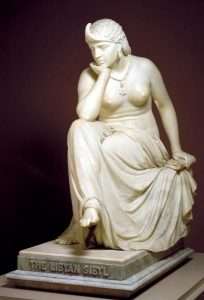 Analogy of same {that very first one?}: "Where was Troy, and was there a Trojan war? The first question is somewhat easier than the second: the site of Troy is three miles from Dardanelles or Hellespont, at a place now called Hissarlik by the Turks. Troy was thus strategically placed to control trade through the fast flowing narrows that separate Europe from the East and connect the Black Sea to the Aegean..." ['Homer's Secret Iliad'. Emphasis, this readers].
Analogy of same {that very first one?}: "Where was Troy, and was there a Trojan war? The first question is somewhat easier than the second: the site of Troy is three miles from Dardanelles or Hellespont, at a place now called Hissarlik by the Turks. Troy was thus strategically placed to control trade through the fast flowing narrows that separate Europe from the East and connect the Black Sea to the Aegean..." ['Homer's Secret Iliad'. Emphasis, this readers].
And/or: ''Joining man to heaven, the form of his hair describes the nature of his relationship with the celestial realm and the stages of his spiritual evolution...a natural crown...his vertical connection with the above. Representing man's strength, it forms an antenna, through which the spiritual force can descend....Medusa...crowned with wild caotic snakes of unregenerate nature...overcome by Perseus, the 'hero' and symbol of order. Budda's curls, on the other hand, are the outward sign of his inner light and tranquility.. Chaos has been ordered, the serpent force mastered, the creative energy of Sakti has been married with the pure consciousness of Siva in the radiant unfolding of the thousand-petalled lotus.''['The Mystic Spiral: Journey of the Soul' / Jill Purce].
Hatshepsut?

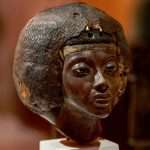 And/or: ''The question about the origins of Nefertiti is still ongoing....Father/mother not named anywhere....but then nor is the vast majority of ancient Egyptian queens. Her mother-in-law Tiye is the exception to the rule. Father Yuya and mother Tjuiu being explicitly named in a series of large scarbs issued by her husband, Amenhotep III - a type of commemorative item that is all but unique to his reign. The only queens whose parentage is secure are generally those who were blood sisters of their husbands....'' [Pages 16/17 'Nefertit' / A. Dodson].
And/or: ''The question about the origins of Nefertiti is still ongoing....Father/mother not named anywhere....but then nor is the vast majority of ancient Egyptian queens. Her mother-in-law Tiye is the exception to the rule. Father Yuya and mother Tjuiu being explicitly named in a series of large scarbs issued by her husband, Amenhotep III - a type of commemorative item that is all but unique to his reign. The only queens whose parentage is secure are generally those who were blood sisters of their husbands....'' [Pages 16/17 'Nefertit' / A. Dodson].
Carapace to enlarge.
And/or: ''Two female mummies {referred to as Elder/Younger Ladies}, found in a side chamber {1898} in the Valley of the Kings of Amenhotep II tomb - with nine other 'kings' which included Amenhotep III. DNA taken from the Elder Lady and ''a lock of brown hair found in a little wooden coffin'' which was inscribed with Tiye name.''

 'Quern' to enlarge.
'Quern' to enlarge.
Side note: The doors of perception open; what was hidden has been revealed. .. . As the houses of earth fill with dancing and song, so filled are the houses of heaven. I come in truth. I sail a long river and row back again. It is joy to breathe under the stars. I am the sojourner destined to walk a thousand years until I arrive at myself.
Place of Rowing.

Coma Berenices. 'Triangular' in form.
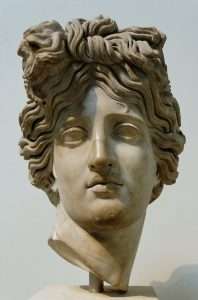
Apollo: Curl or knot?
And/or: ''Coma Berenices is an ancient asterism in the northern sky, which has been defined as one of the 88 modern constellations. It is in the direction of the fourth galactic quadrant, between Leo and Boötes, and it is visible in both hemispheres. Its name means "Berenice's Hair" in Latin and refers to Queen Berenice II of Egypt, who sacrificed her long hair as a votive offering.[2] It was introduced to Western astronomy during the third century BC by Conon of Samos and was further corroborated as a constellation by Gerardus Mercator and Tycho Brahe. It is the only modern constellation named for a historic person. The constellation's major stars are Alpha, Beta, and Gamma Comae Berenices. They form a half square, along the diagonal of which run Berenice's imaginary tresses, formed by the Coma Star Cluster.''
''The Coma Star Cluster (also known as Melotte 111 or Collinder 256) is a small but nearby open cluster located in the constellation Coma Berenices. The cluster contains about 40 brighter stars (between magnitudes 5 and 10) with a common proper motion. The brighter stars of the cluster make out a distinctive "V" shape as seen when Coma Berenices is rising. The cluster used to represent the tail of Leo. However, in around 240 BC, Ptolemy III renamed it for the Egyptian queen Berenice's legendary sacrifice of her hair.''
''V'' ?
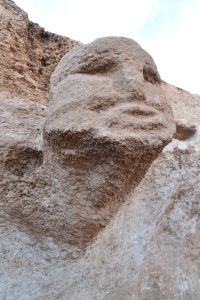
Karahan tepe.

Underneath the boulder at the base of Nolan's Cross is found a mixture of stone and animal hair.
A work in progress: Nolan’s Cross is a large cross shape formed as a result of six large boulders found on the Inland by searcher, surveyor, and Oak Island landowner Fred Nolan. The overall dimensions of the cross is 360’ wide by 867’ tall. Much has been speculated as to their purpose from simple boundary demarcation lines to some rather complex geometry and Baconian/Templar connections.....
Although Nolan's Cross is Fred's most significant finding on Oak Island, the "headstone" within it is possibly the most interesting aspect of the find. The "headstone" is a landmark at the junction of Nolan's Cross, that appears to be carved in the shape of a human face.
In profile or face-on?

Sphinx is to 'fire' as Sibyl is to 'Soul'.
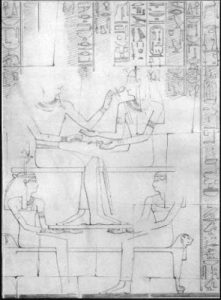
Ankh to nose. Hand to elbow. Being 'raised up' from a couch of lions.
Side note: ''My eyes followed the graceful folds of sculptured stone draped across her lap. In her left hand she held a sheaf of papers; her chin rested in the cup of the right hand. As in the dream, she was bare breasted. Her hair fell in plaits around her bare shoulders. A six-pointed star hung from a necklace that encircled her ivory neck, and a simple triangular crown rested upon her brow...I looked at the discreet little plaque by her beautiful bare TOES: 'The Libyan Sibyal'...'' [Page 22 'Book of Shadows' / P. W. Curott].
Any 'sandals'?
Hang in there. We are on the final leg. Chill out. Make amends with the cat. Deep slow breathing only from here on in.

